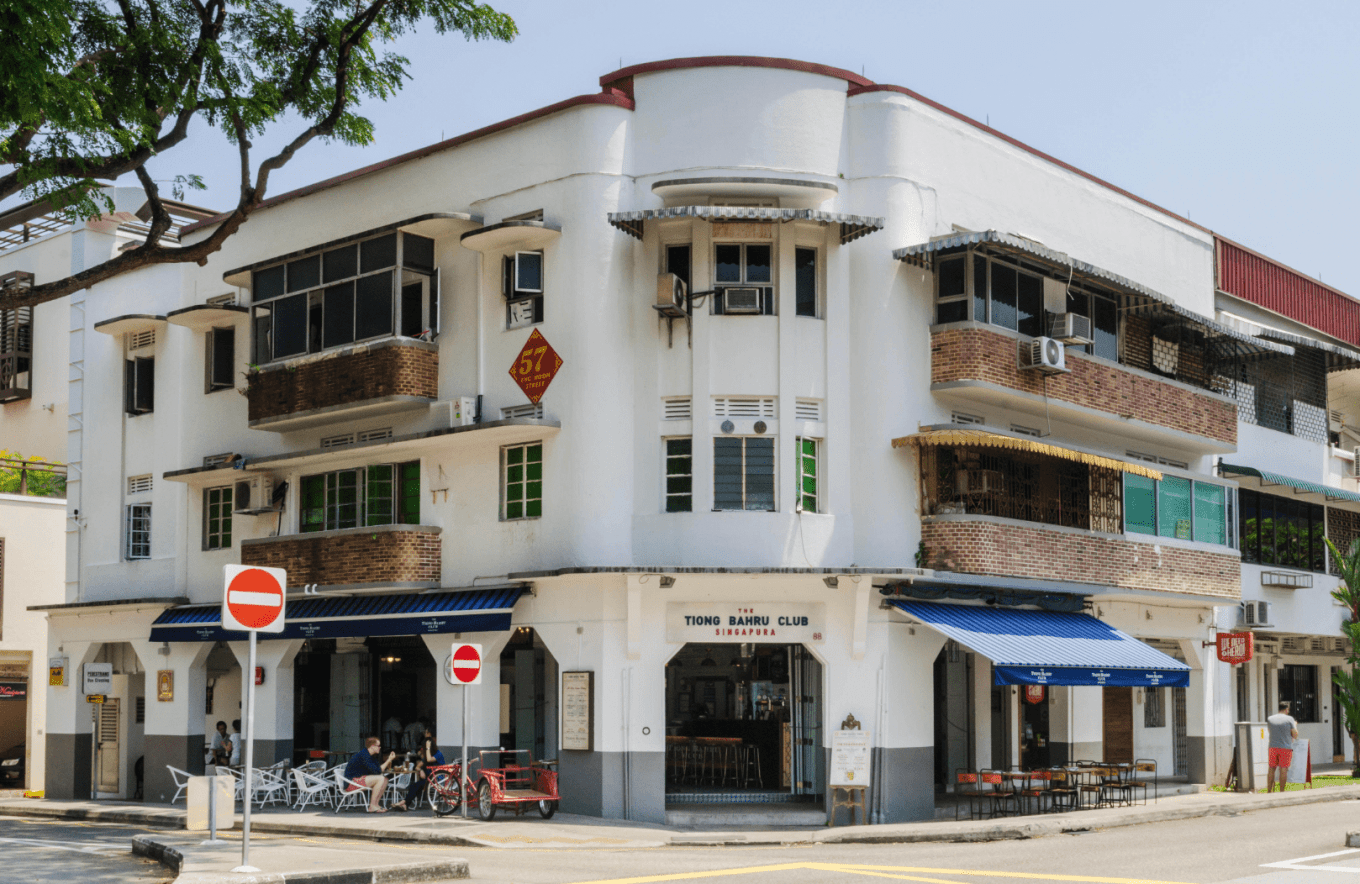Exploring Tiong Bahru In 60 Pictures: A Detailed Walkthrough Of What Makes This Old Estate So Charming
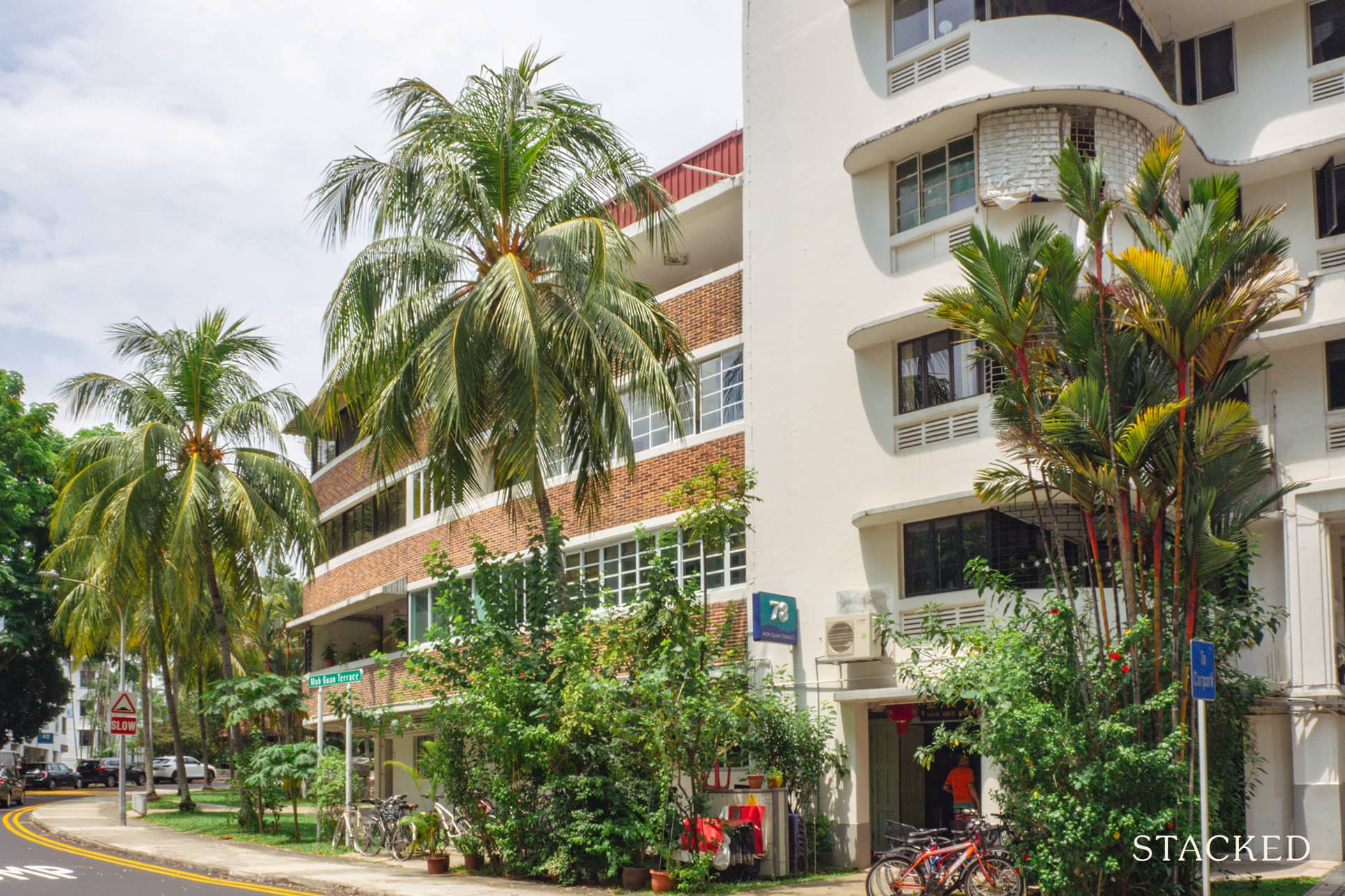
Get The Property Insights Serious Buyers Read First: Join 50,000+ readers who rely on our weekly breakdowns of Singapore’s property market.
Cheryl has been writing about international property investments for the past two years since she has graduated from NUS with a bachelors in Real Estate. As an avid investor herself, she mainly invests in cryptocurrency and stocks, with goals to include real estate, virtual and physical, into her portfolio in the future. Her aim as a writer at Stacked is to guide readers when it comes to real estate investments through her insights.
What makes a place feel like home? Is it that 50m infinity pool, the numerous dining pods, or the fact that you have an open roof top patio that overlooks an unblocked view?
Sure, all that’s important when it comes to attracting you to buy a home. But what makes you stay, or what truly makes a home is a lot more nuanced than these tangible things. More often than not, it’s the little things of what makes the neighbourhood special to us.
It may be the friendly neighbourly faces or the familiar sounds and smells from your usual Kopitiam stall? Or the smiles from the uncle selling your favourite afternoon pastries?
And that’s what makes living in different neighbourhoods – say Pasir Ris compared to Clementi, so different from each other. There are stories of each neighbourhood that tells a unique tale of Singapore that only a resident will be able to endearingly share.
Which is why in this new series, we attempt to try to capture the essence of a particular neighbourhood through photos. We’d look to observe living in different areas through a visual diary and what it means to reside in such different neighbourhoods. It may be difficult to depict the true sights and sounds, but I’ll try my best to do so in words.
Our first neighbourhood of choice? Tiong Bahru.
Tiong Bahru, apart from being widely known as Singapore’s first public housing estate, offers its own intricacies that makes it so unique.
Personally, I have had strong affiliations to this charming neighbourhood since I was a little girl, even though I’ve never lived there. My family always had the habit to visit 69 Seng Poh Road for its delicious Tze Char to celebrate any special occasion – from Father’s Day to my aunties’ birthdays.
From time to time in the early 2000s, I accompanied my grandfather on his scooter to Tiong Bahru Market to nab the freshest fish and pork just for my grandma to cook a scrumptious dinner.
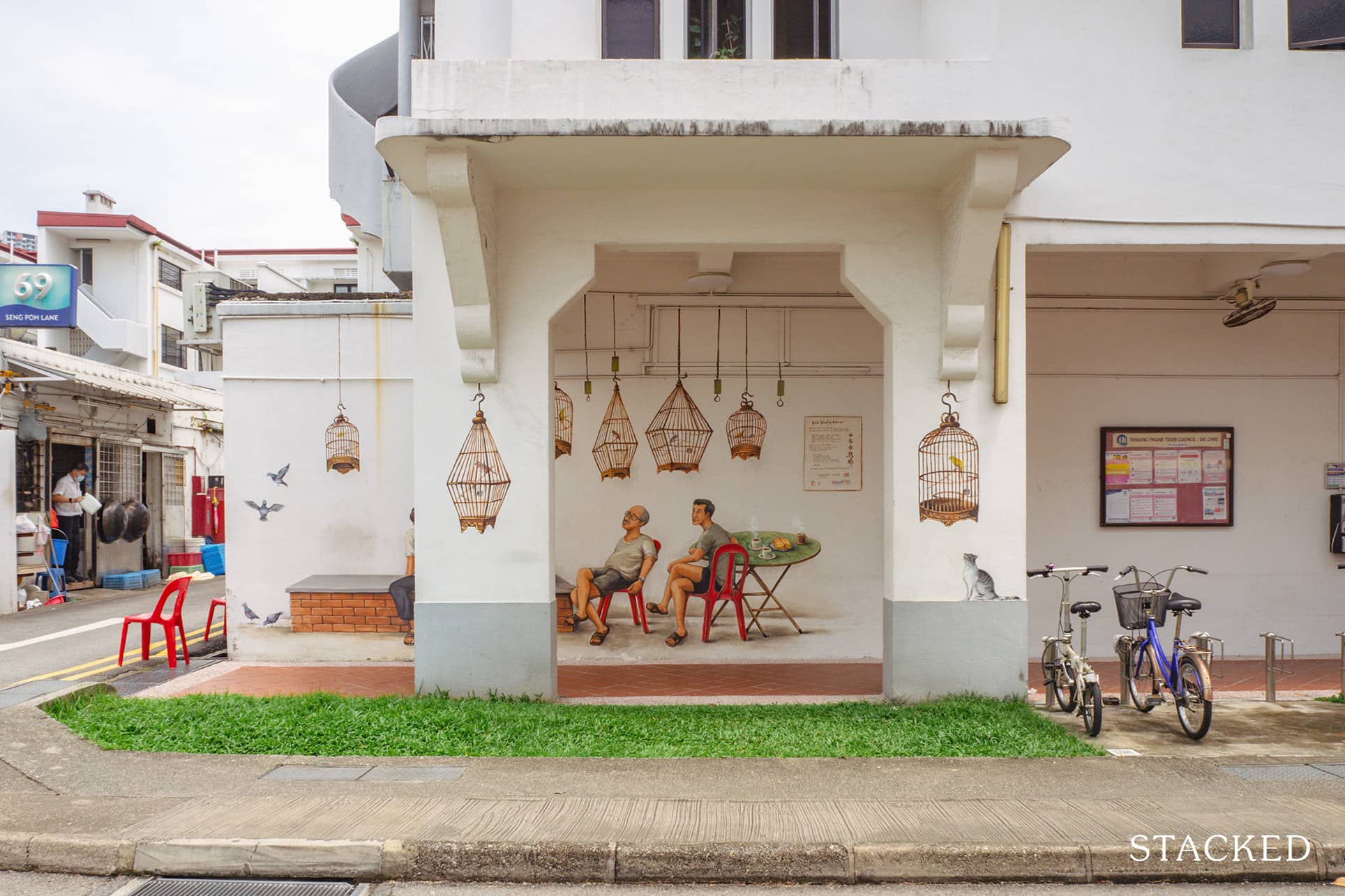
But for those who’ve witnessed its past, Tiong Bahru’s current dynamics might come as a surprise. Allegedly the birthplace of Singapore’s booming cafe scene, it is now a strange juxtaposition between old and new, yet still charming and captivating in its own ways.
Here’s a visual tour of what it’s like to live in Tiong Bahru.
Tiong Bahru’s Unique Architecture and Built Environment
Many Singaporeans would say that they love the architecture of Tiong Bahru’s low-rise flats and shophouses – some might even say that it is the highlight of the neighbourhood.
Many of the low-rise flats draw inspiration from Art-Deco styles and many features on the buildings were inspired by aeroplanes, ocean liners, trains and automobiles. Since those modes of transportation were considered revolutionary at that time, architects drew heavy inspiration from the curves of the various modes of automobiles.
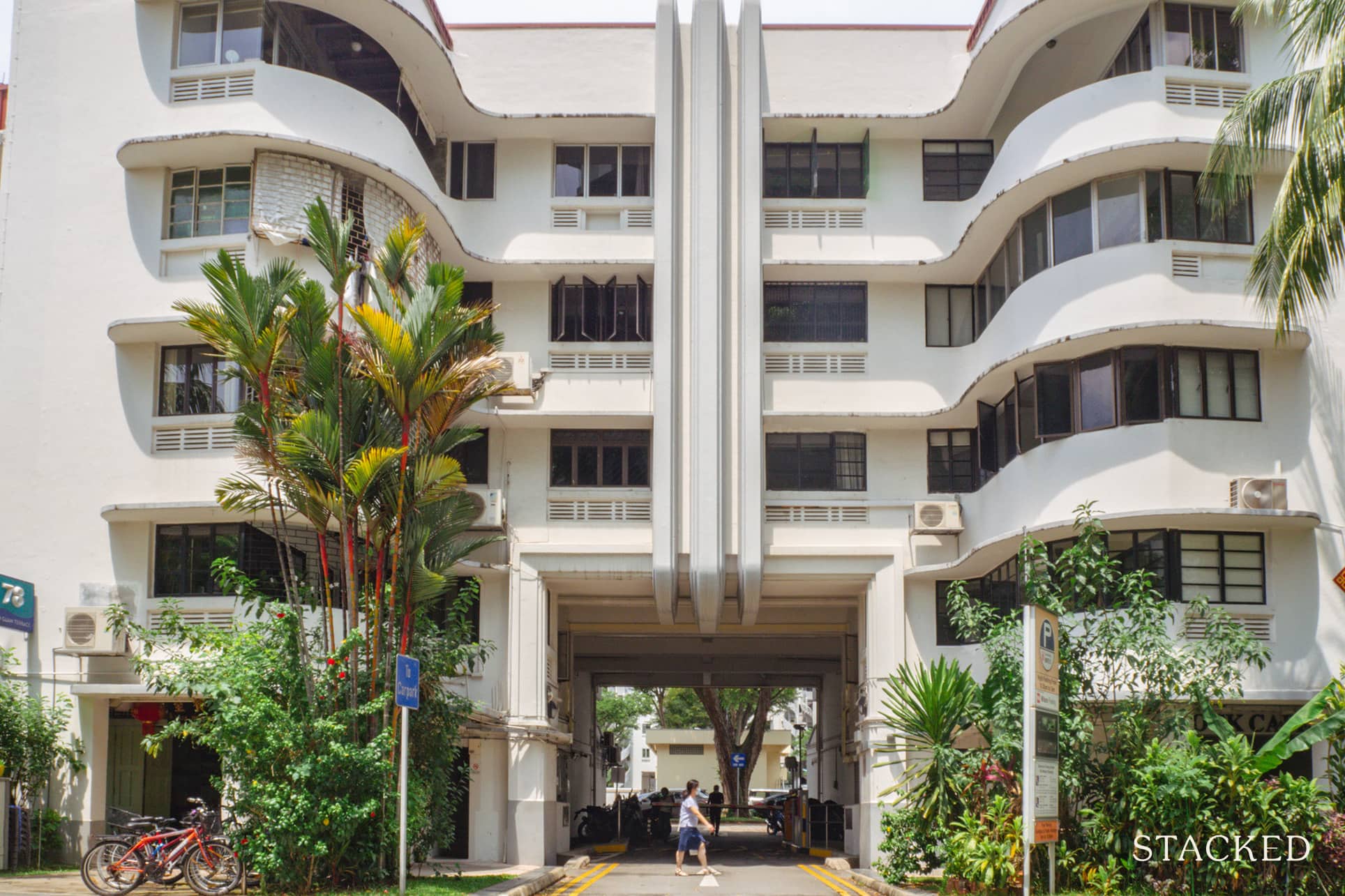
Before diving in further to explore its wonderful built environment, it’s perhaps prudent to first understand what the name Tiong Bahru even means. Tiong refers to ‘end’ in the Chinese Hokkien dialect, and Bahru means ‘new’ in Malay – together, it means ‘new cemetery’ since the place used to be a burial ground.
Although it’s no longer a burial ground, the neighbourhood was crucial to Singapore’s housing system pre-and post-war.
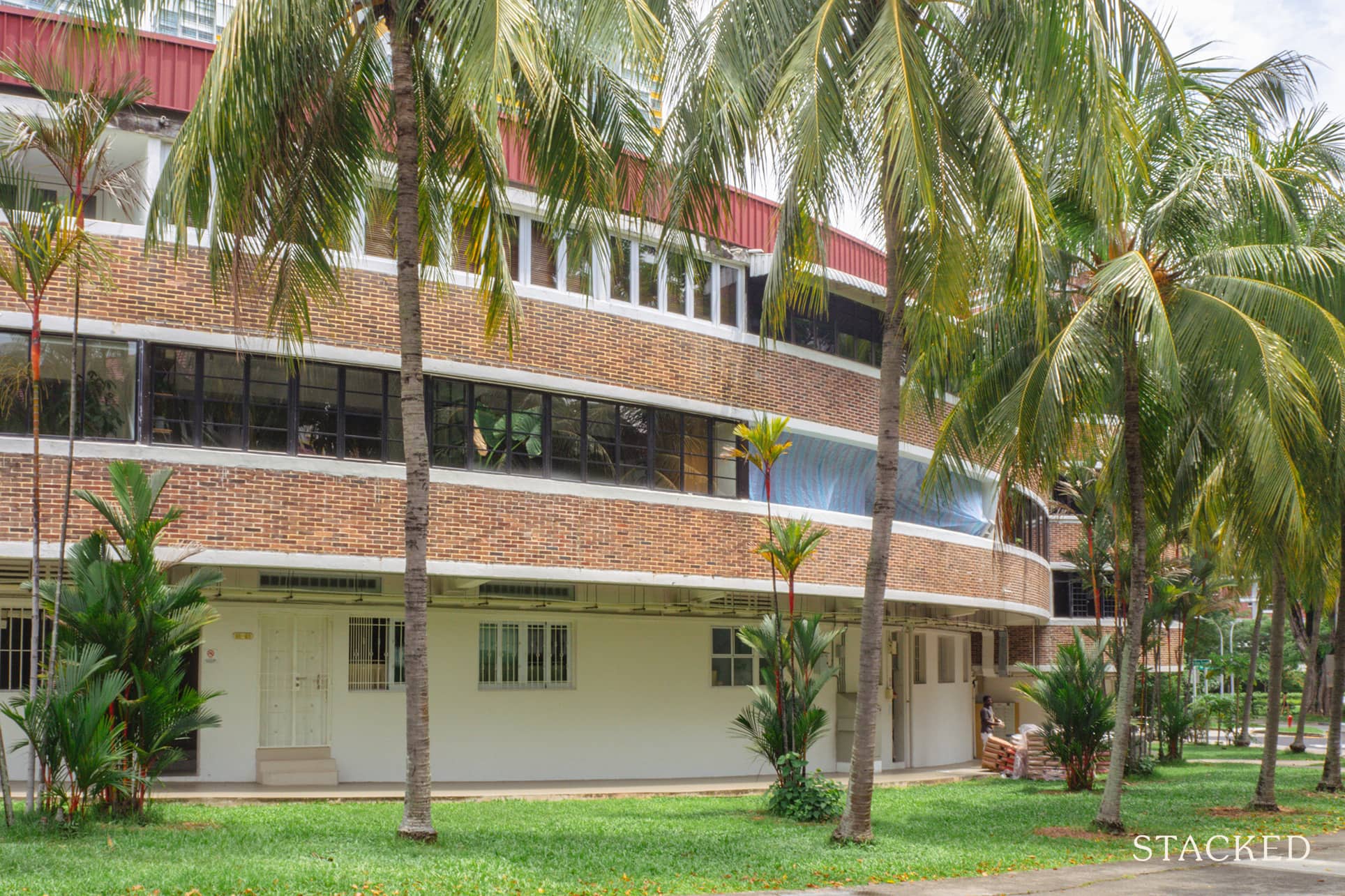
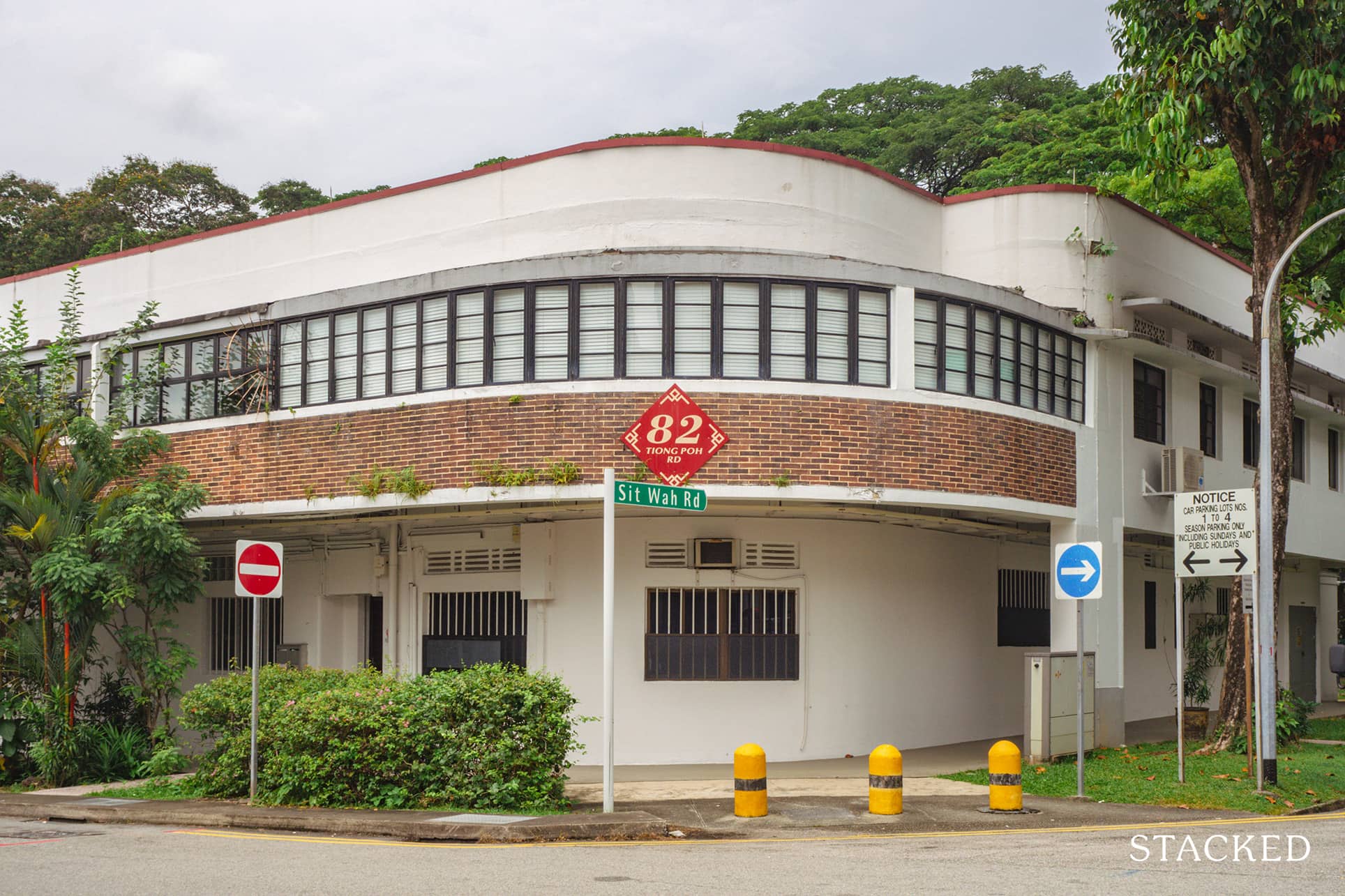
The built environment stands out from the typical skyscrapers, that’s for sure. But I guess what makes living in these walk-up apartments special is in its details – the exterior spiral staircases, courtyards, kitchen air-wells, curved facades and how some blocks are shaped as a horseshoe.
A bulk of the designs were not just purely aesthetic, the units were meant to acclimatise to Singapore’s harsh tropical weather. Natural ventilation was built into flats, some units have sun shades at their windows to reduce the glare, and windows were made of green glass to polarise the afternoon sun and provide a certain extent of privacy.
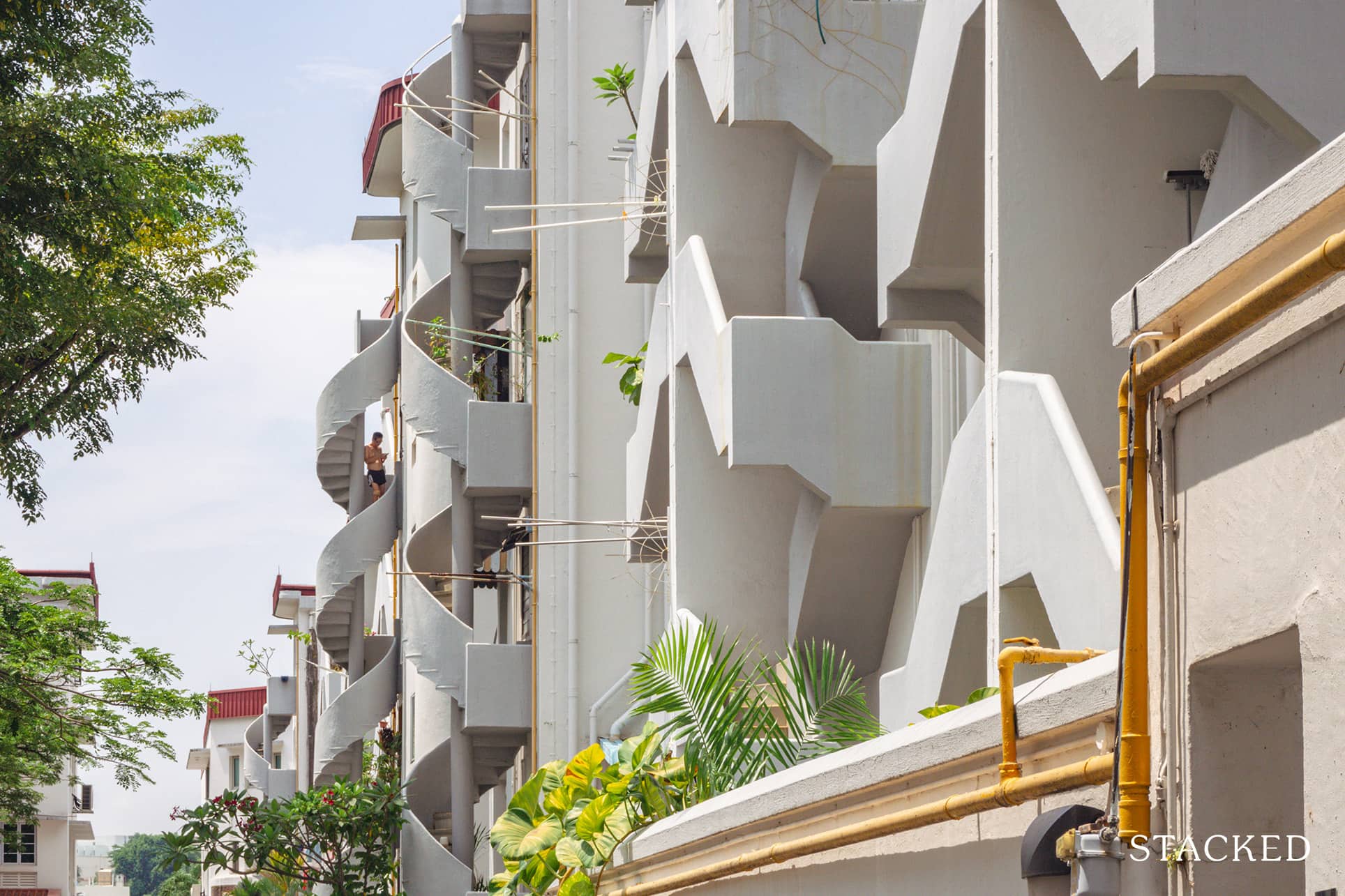
Every bend you see a new interpretation of a Tiong Bahru shophouse and along each different street, you’ll see something distinct that sets them apart from each other. It could be the tiles or the curvatures from the windows or even the art murals that make each and every lane special.
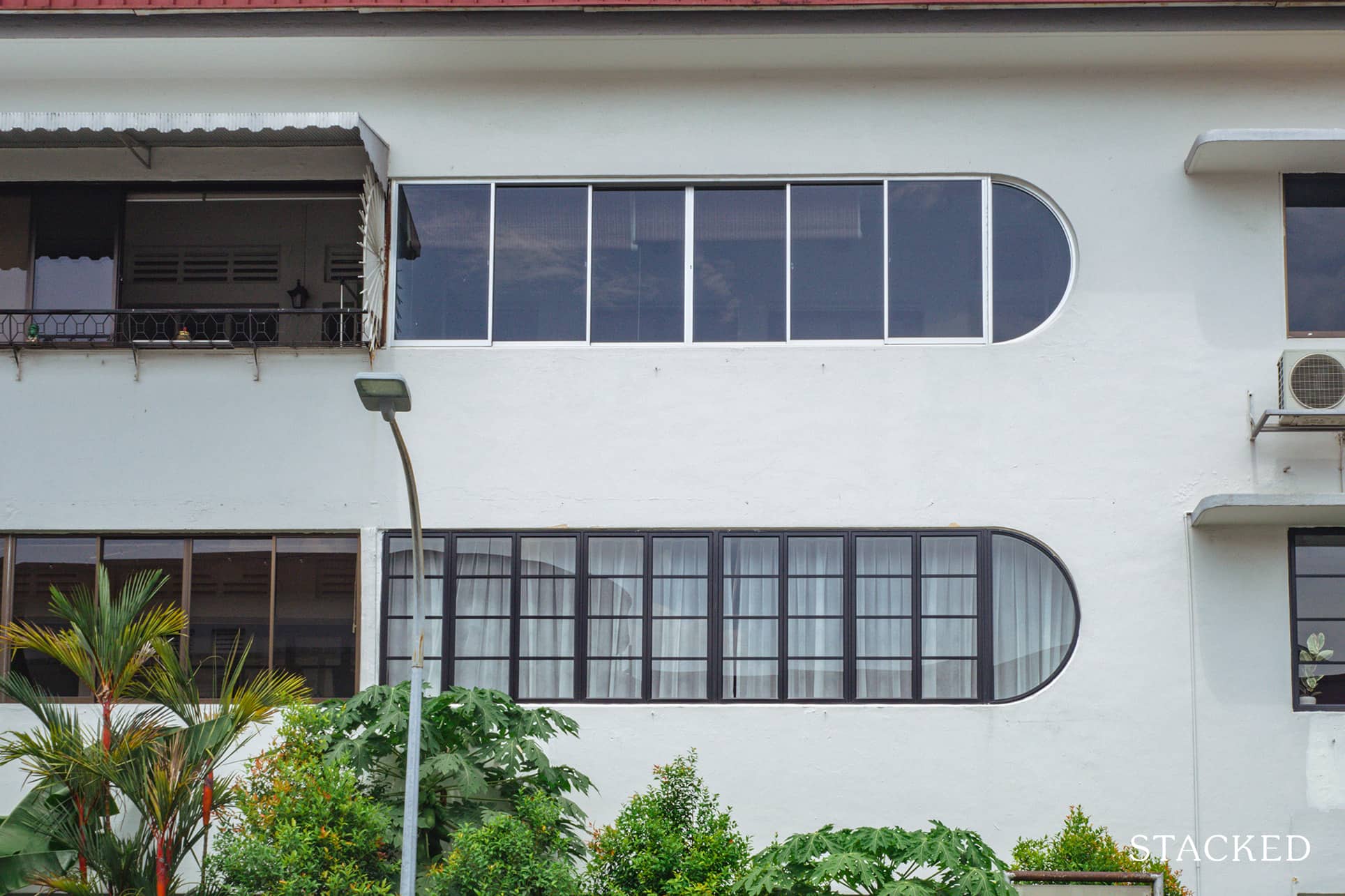
Here’s a history fun fact – the Tiong Bahru estate was colloquially known as mei ren wo or “den of beauties” in Mandarin in its early years. Due to its proximity to Great World City and the entertainment industry, the neighbourhood used to house many mistresses of Singapore’s rich men. Although the demographic has evolved drastically over the decades, past stories like these make living in Tiong Bahru all the more interesting.
I had the pleasure of revisiting Tiong Bahru again just to write this piece and I love how the neighbourhood is so vibrant with trees, greenery and colourful flowers. Dangling planters from the residents and huge potted birds-of-paradise can be spotted from several units, making me feel that there’s a strong sense of love for the place from the residents.
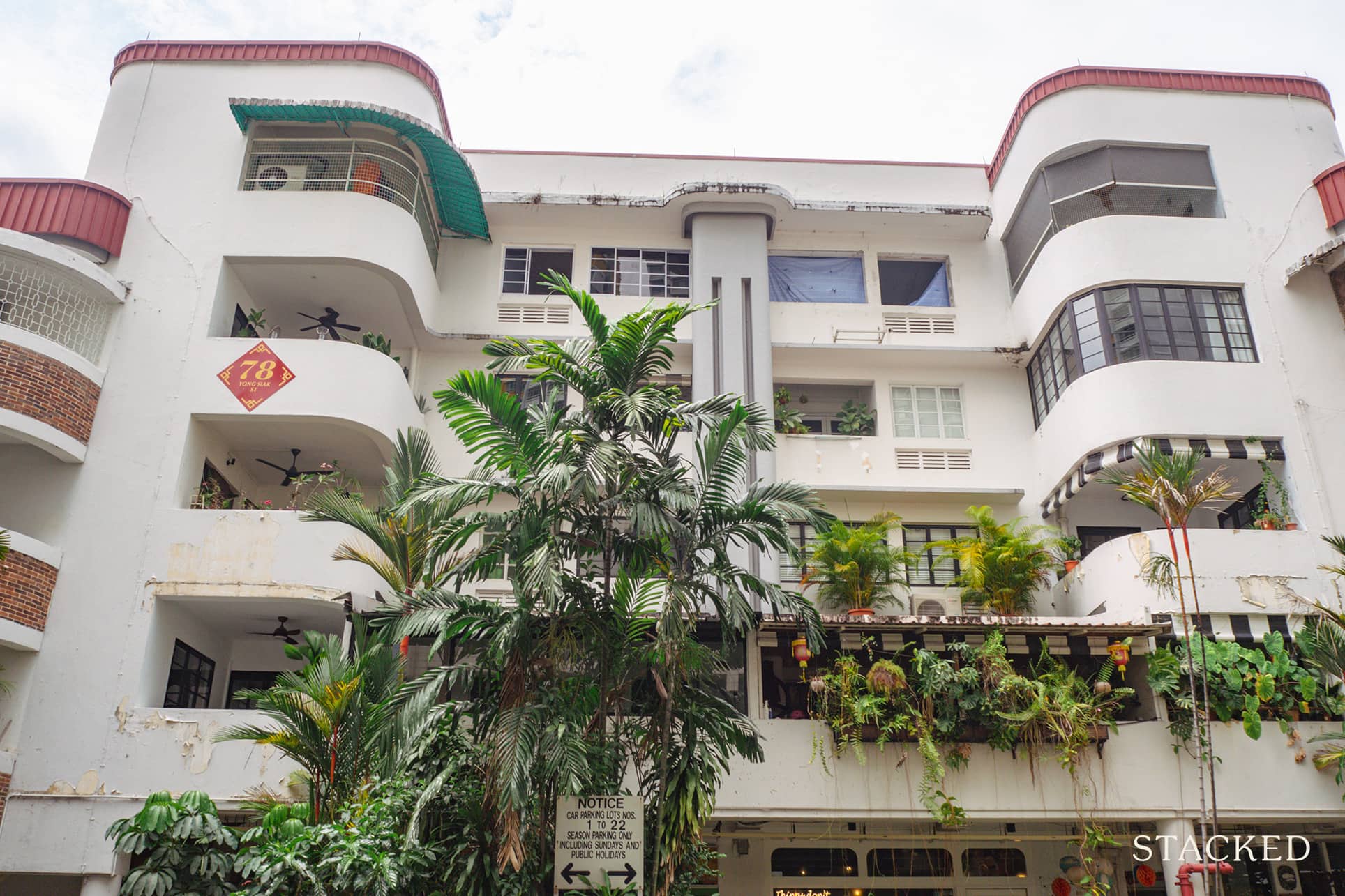
I’ve always wondered why are there so many curved corners on the building facades, and it turns out that these smooth edges were inspired by a ship’s bridge, whereas the long horizontal vertical lines were associated with planes.
For those who spot elements such as stainless steel railings and round porthole windows, they drew heavy inspiration from nautical elements.
It was also fascinating to see how there are different motifs on the window grilles, doors and gates – all in various forms and colours but somehow blend so well together and evidence that the young and old co-exist in this little neighbourhood very well together.
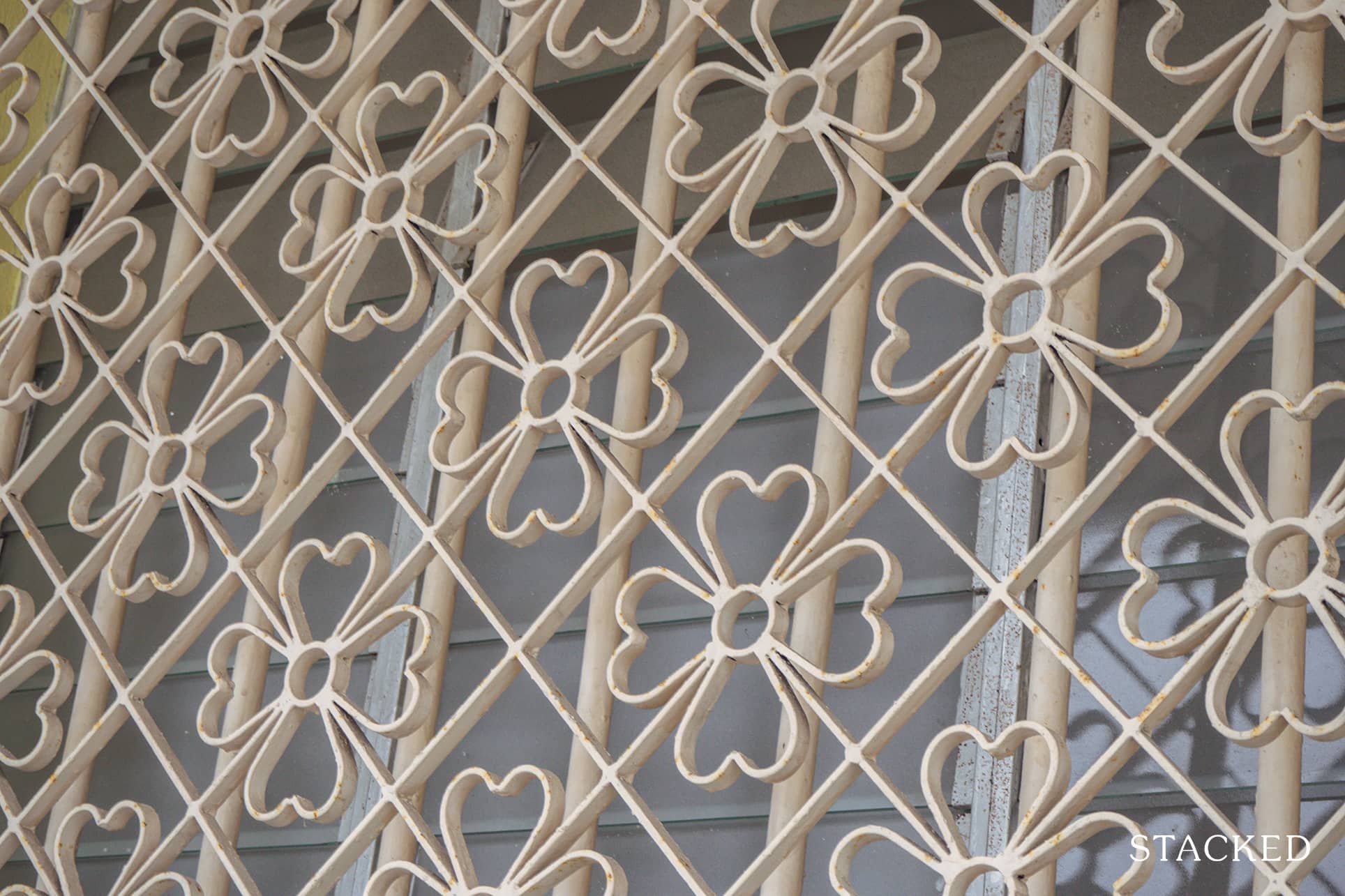
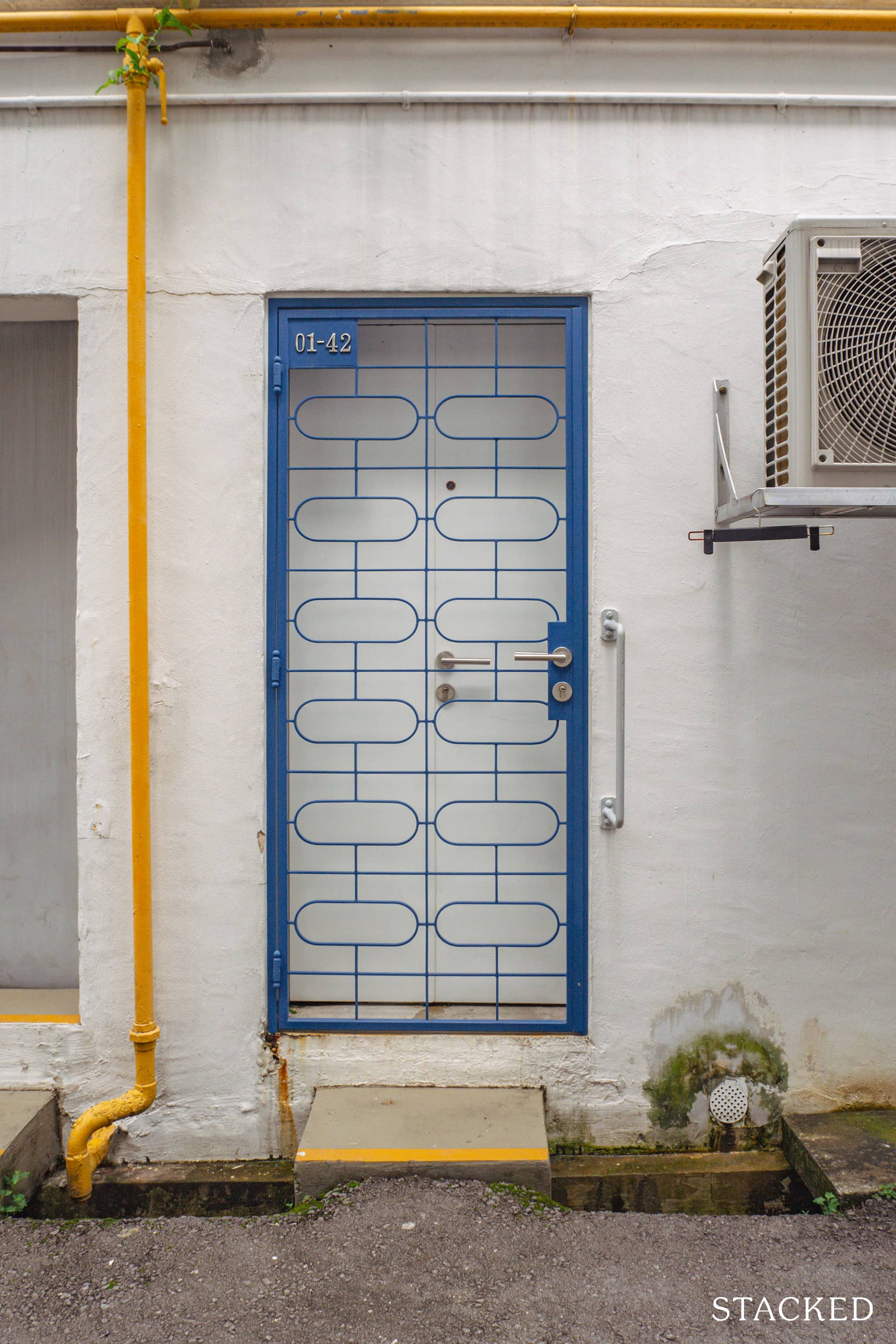
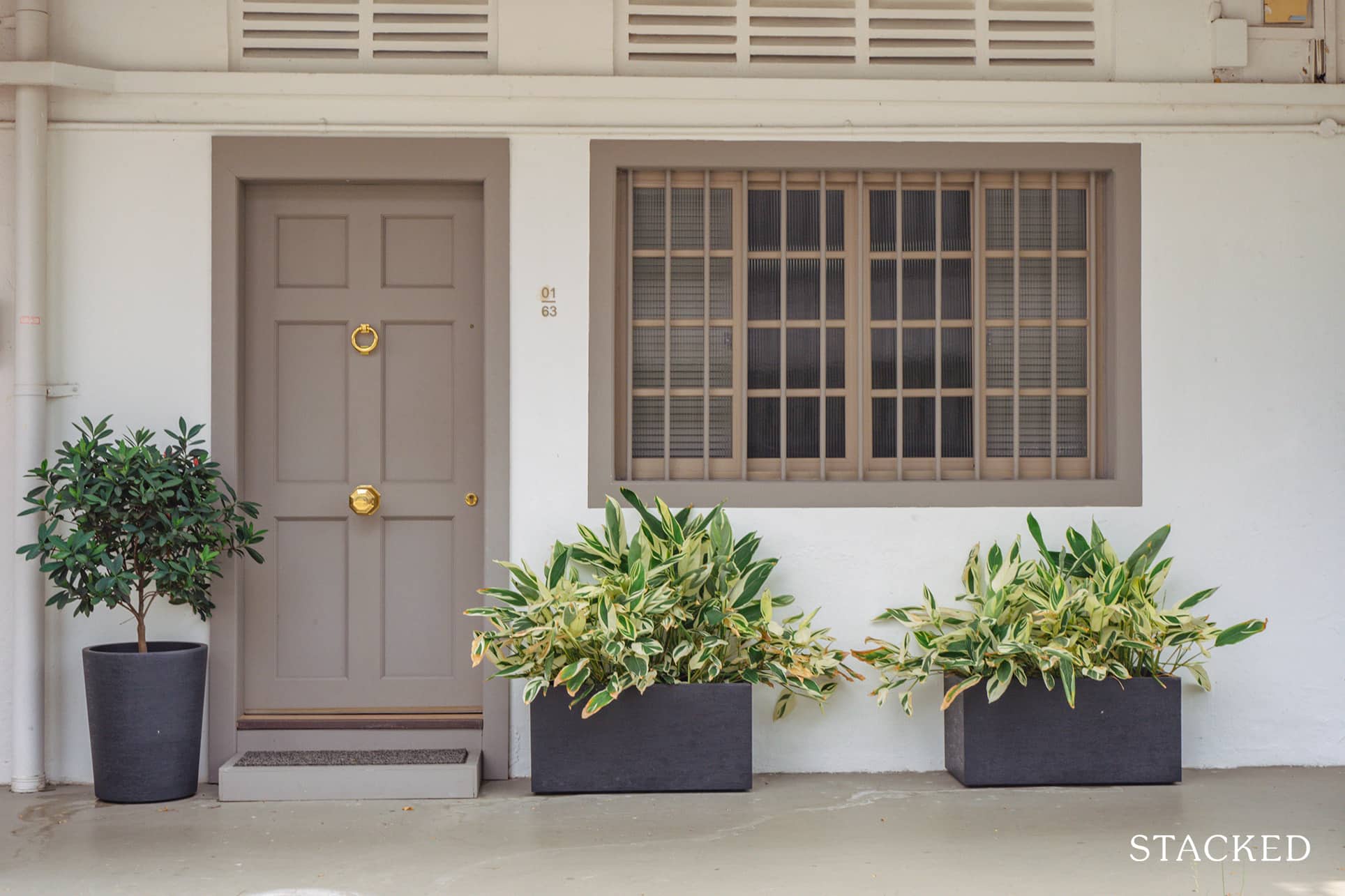
Gentrification has had its fair share in transforming the neighbourhood even during pre-war and post-war times, but the current usage of Tiong Bahru is perhaps the most interesting.
Naturally, this attracted a whole different dynamics of people to want to live in such a special neighbourhood in Singapore. Conserved shophouses now house art galleries, vinyl stores and the delicious scent of fresh French bakes. Take a quick look on the online property portals and you’d see what I mean too. More often than not, the listings showcases home with eclectic design, each in a different distinctive style from another.
My highlight of Tiong Bahru is most definitely the Lim Liak HDB side. These predominantly white HDB blocks have a very nostalgic essence that reminds me of the 90s.
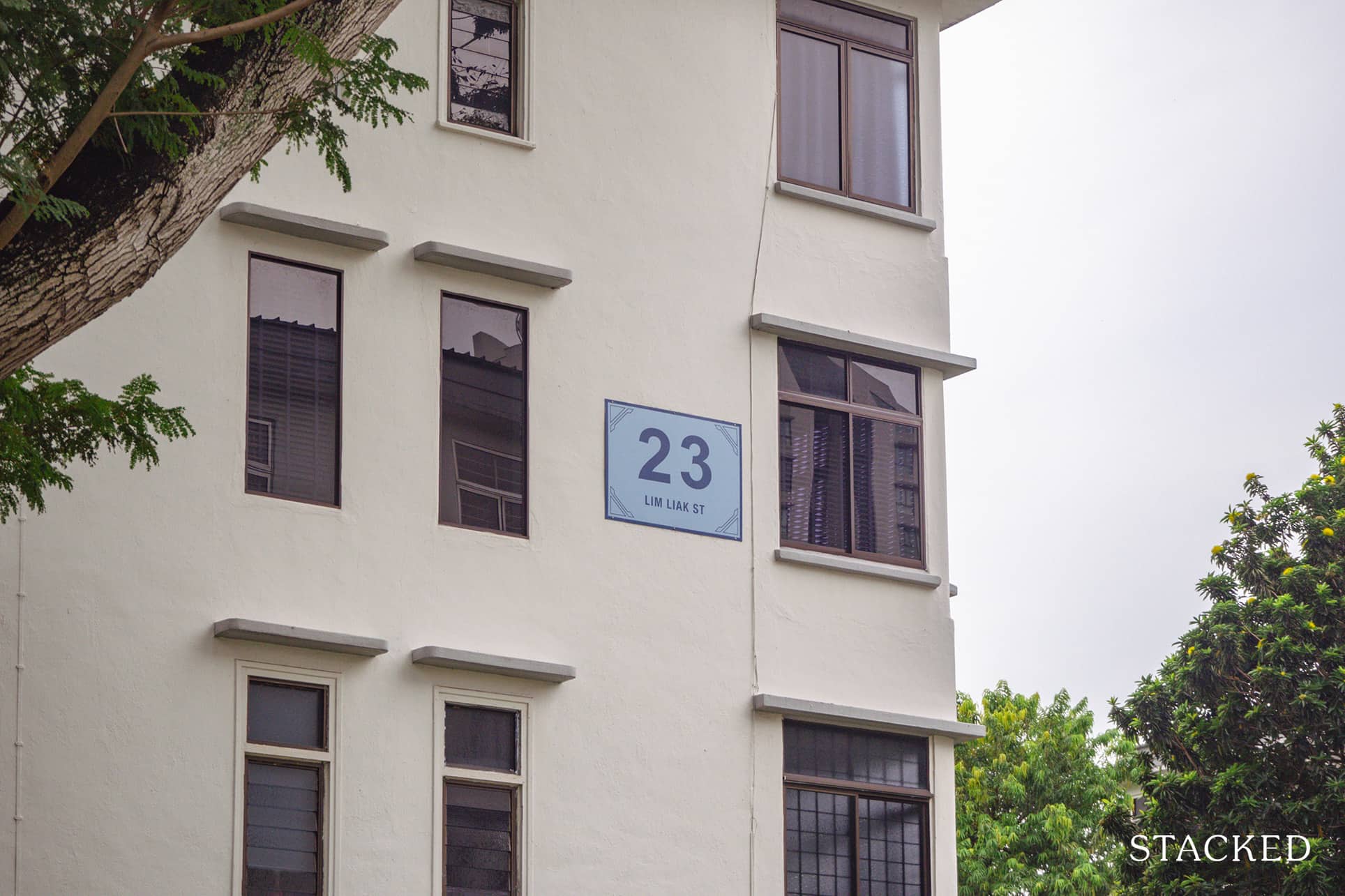
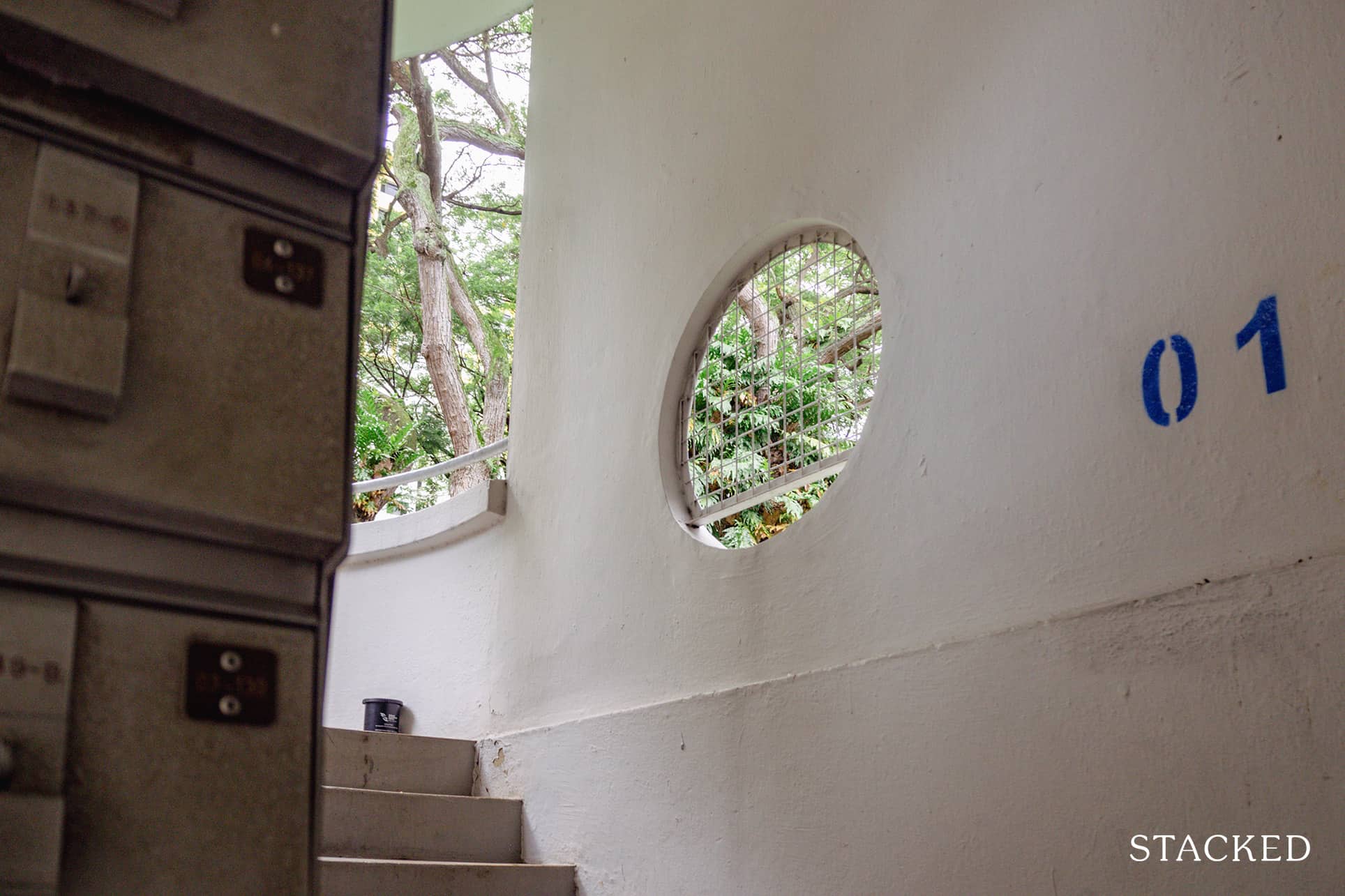
The simple porthole windows flushed against the luscious green background make the whole place feel very aesthetically pleasing for some reason – this brings back to my point on the architectural inspirations based on nautical elements.
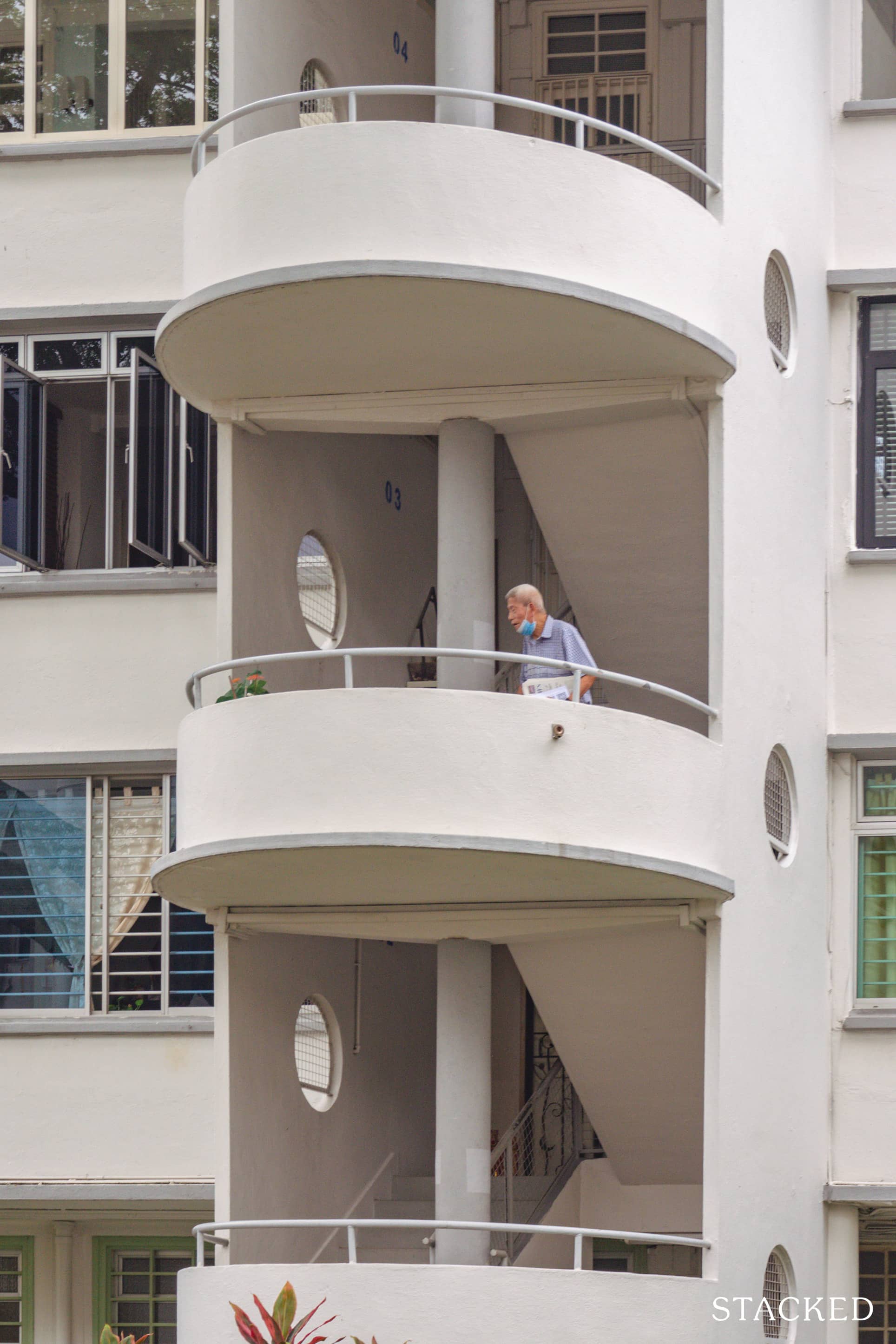
You’ll see the residents climbing up and down the stairs (since there are no lifts) and it’s a very different sight as compared to the typical sky-high HDBs that we’re more used to seeing. To be sure, it isn’t the most practical. Other than it being inconvenient for the elderly, on days with heavy rain you’d still need an umbrella to walk up even though it’s “sheltered”.
Exploring Tiong Bahru in the Day
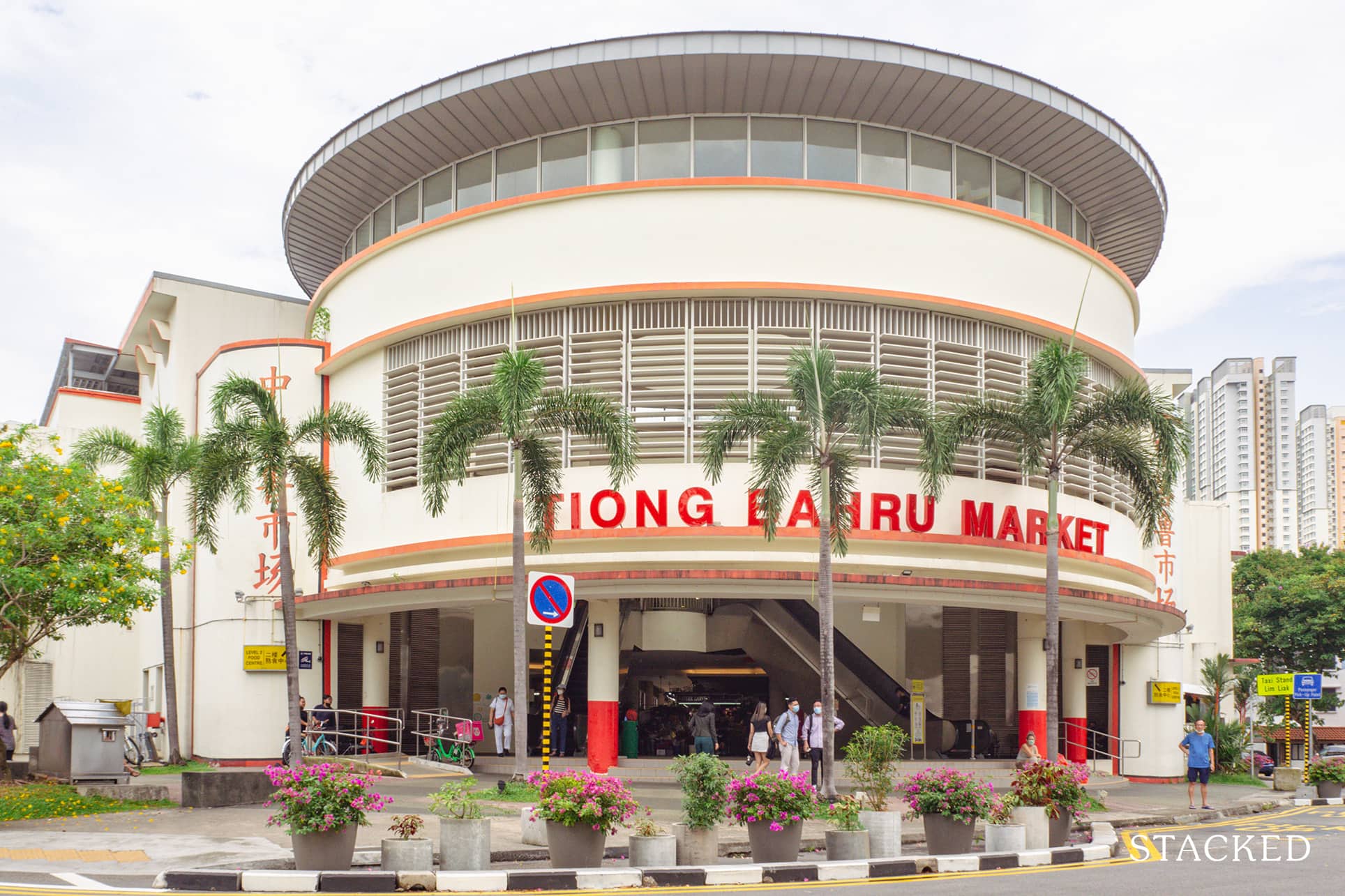
If you ask an auntie what to do in Tiong Bahru, she’d probably direct you to Tiong Bahru Market to either try the many food stalls on the second floor (I personally love the Hainanese Curry Rice) or do your grocery shopping for the freshest ingredients at the wet market on the first floor.
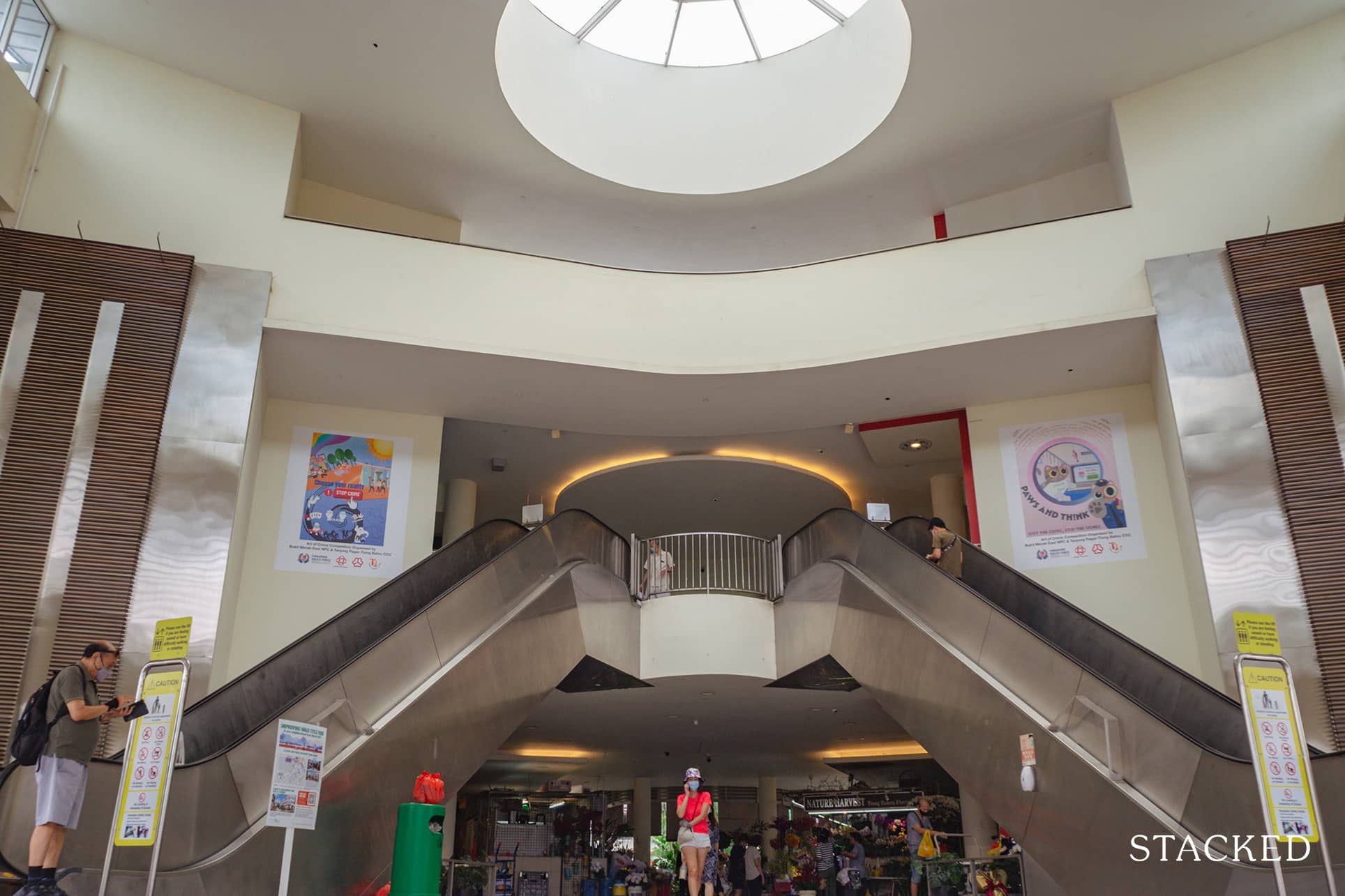
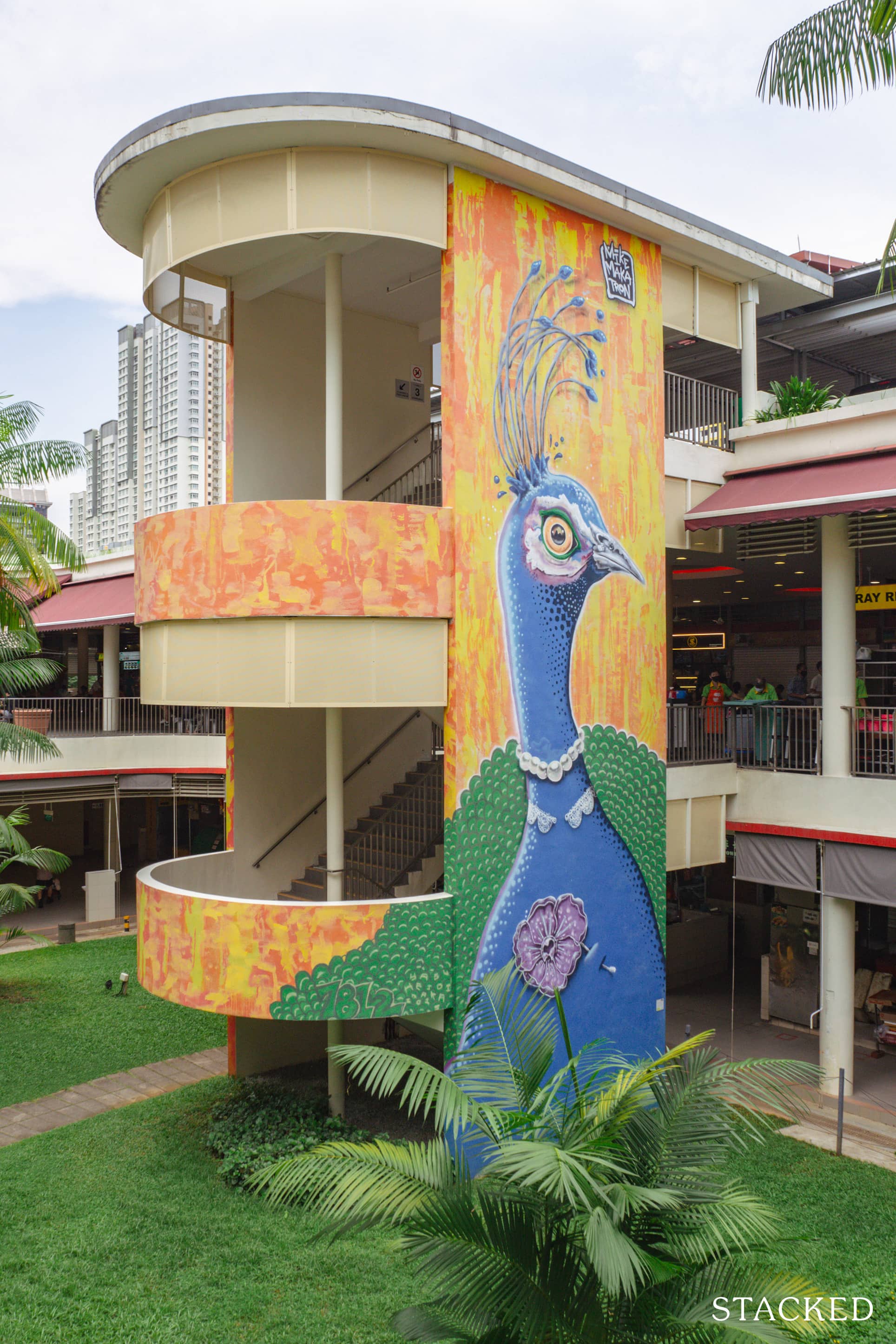
If you ask a younger person, chances are they’ll share with you the many aesthetically pleasing cafes to get the best bakes and coffee in the neighbourhood and fitness studios to break in a sweat.
It’s a constantly bustling neighbourhood, that’s for sure.
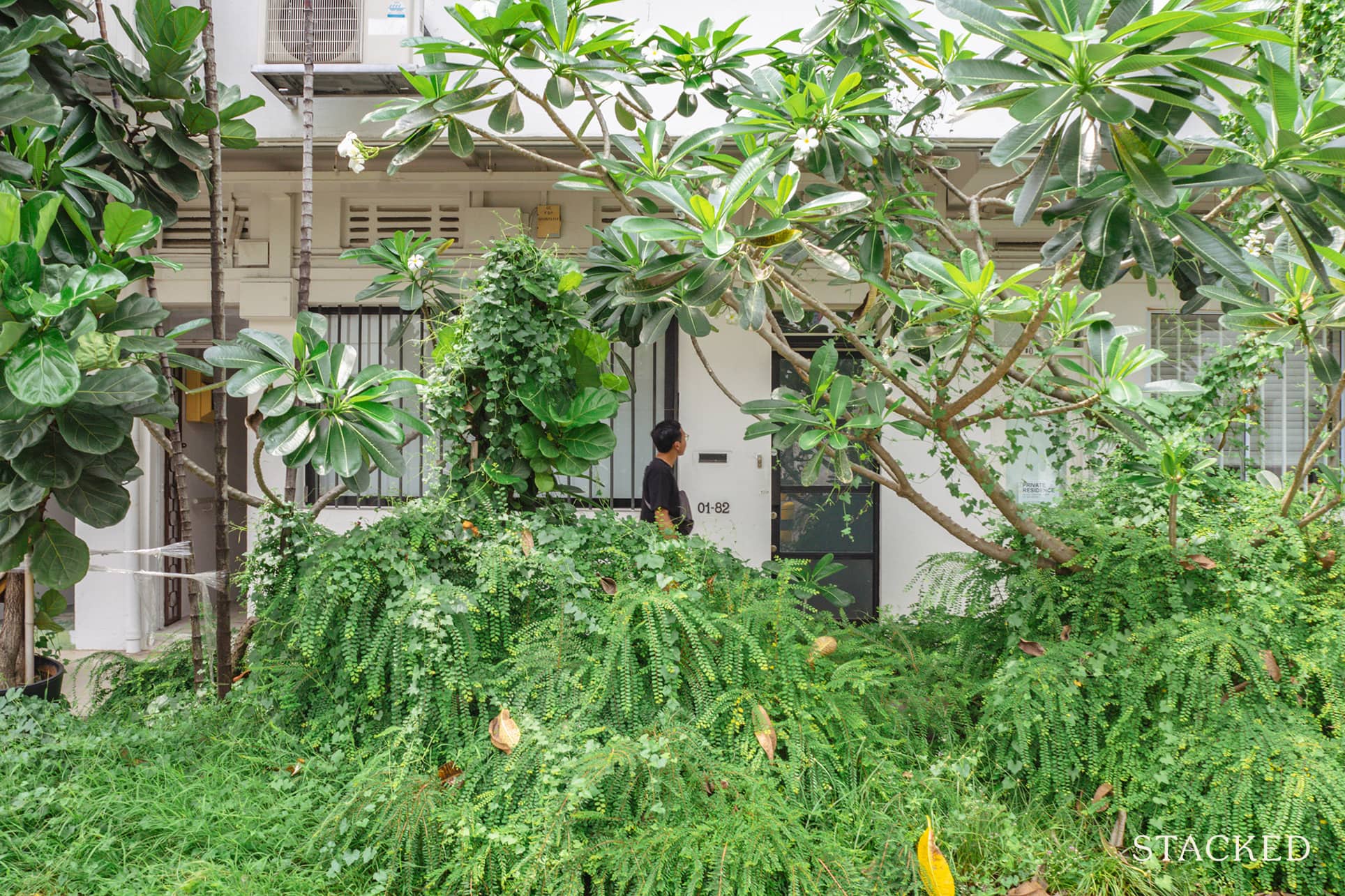
During my visit there (it was around 9 AM on a Wednesday morning), I noticed that there were many younger people walking their furry friends around the neighbourhood and cycling with their cool bicycles.
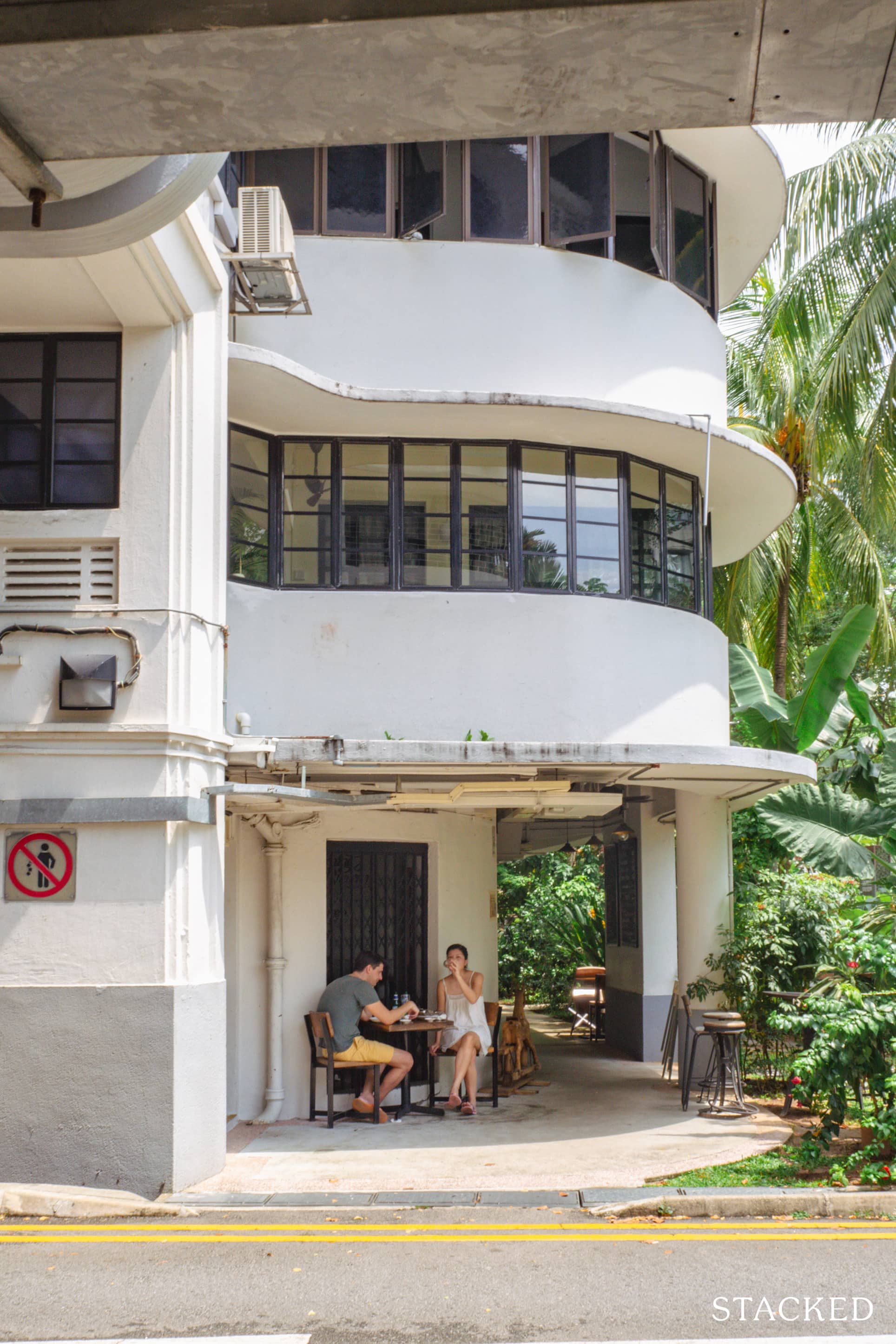
Otherwise, these younger folks would have already found a seat in their favourite cafe or are typing away on their laptops.
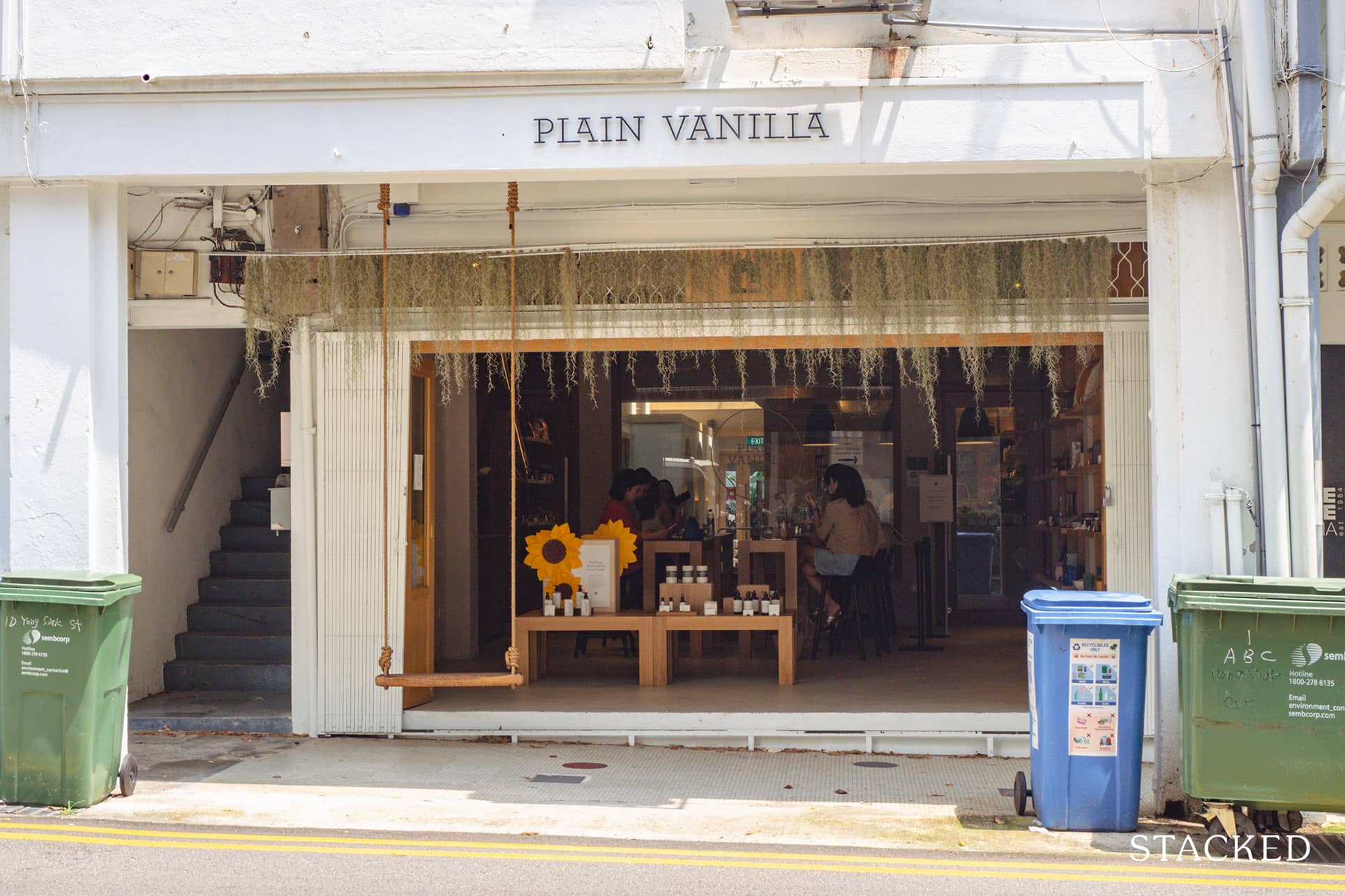
I visited Plain Vanilla to indulge in a cupcake during my visit and was surprised to see that both outdoor and indoor seatings were already full, mainly occupied by solo diners working on their iPad or laptops – and that’s a glimpse into Singapore’s cafe culture.
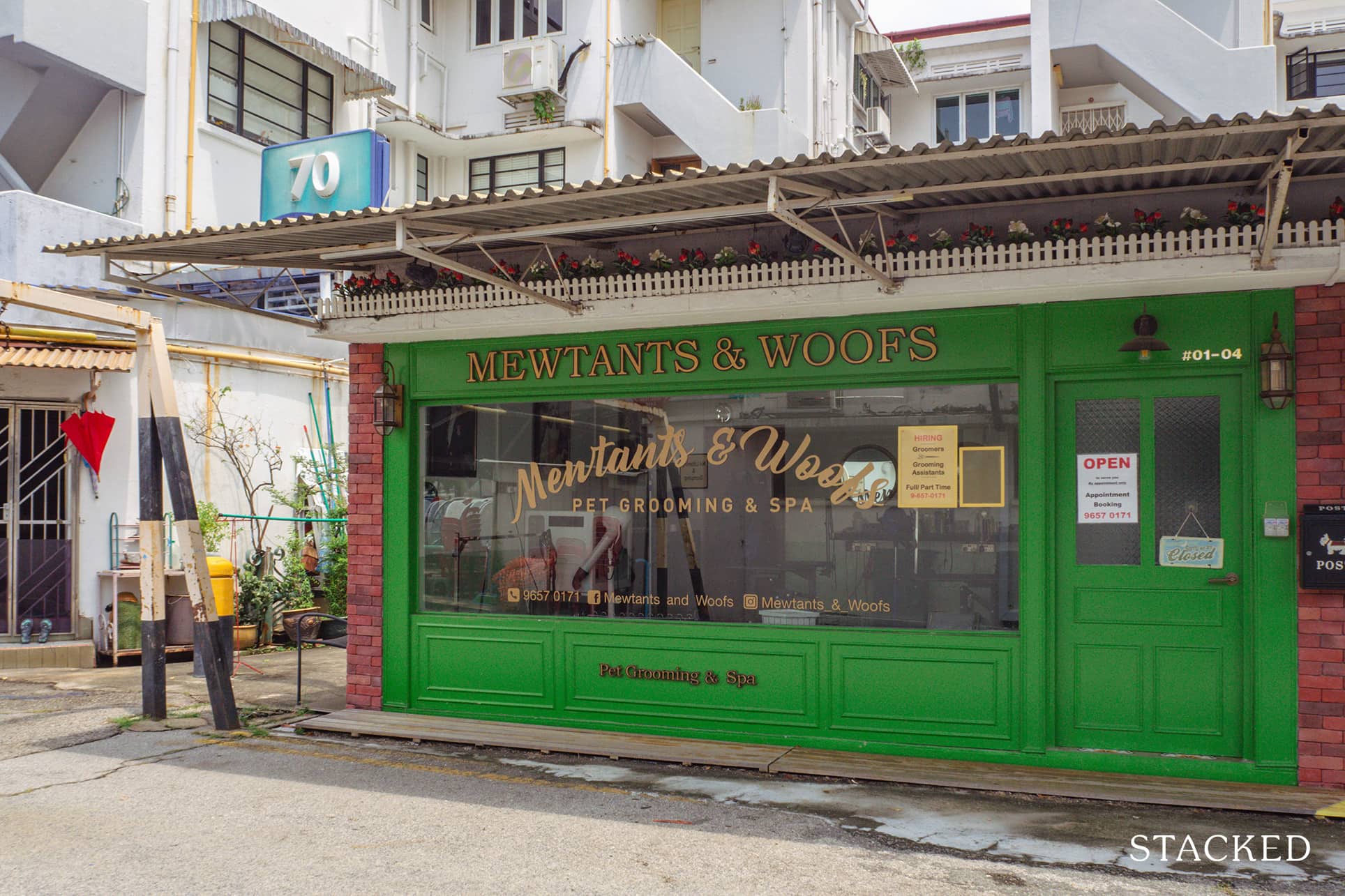
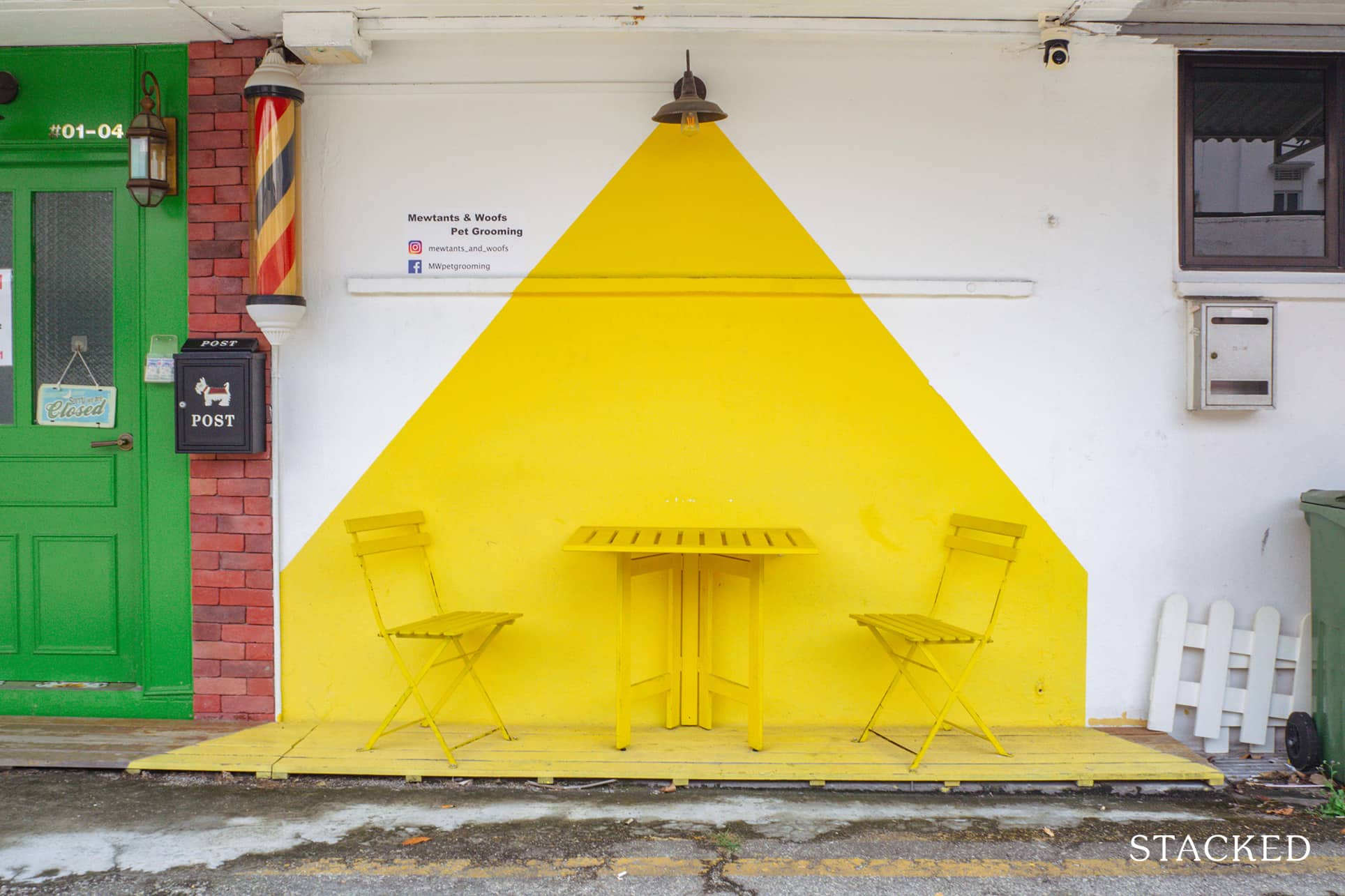
Each store has its own aesthetic – this is something you’d quickly notice when touring around. I don’t think there’s ever a boring storefront. Just look at the artistic (yet functional) installation outside of Mewtants and Woof.
I passed by the famous Tiong Bahru Community Centre and saw a couple taking their wedding shots with their photographer there.
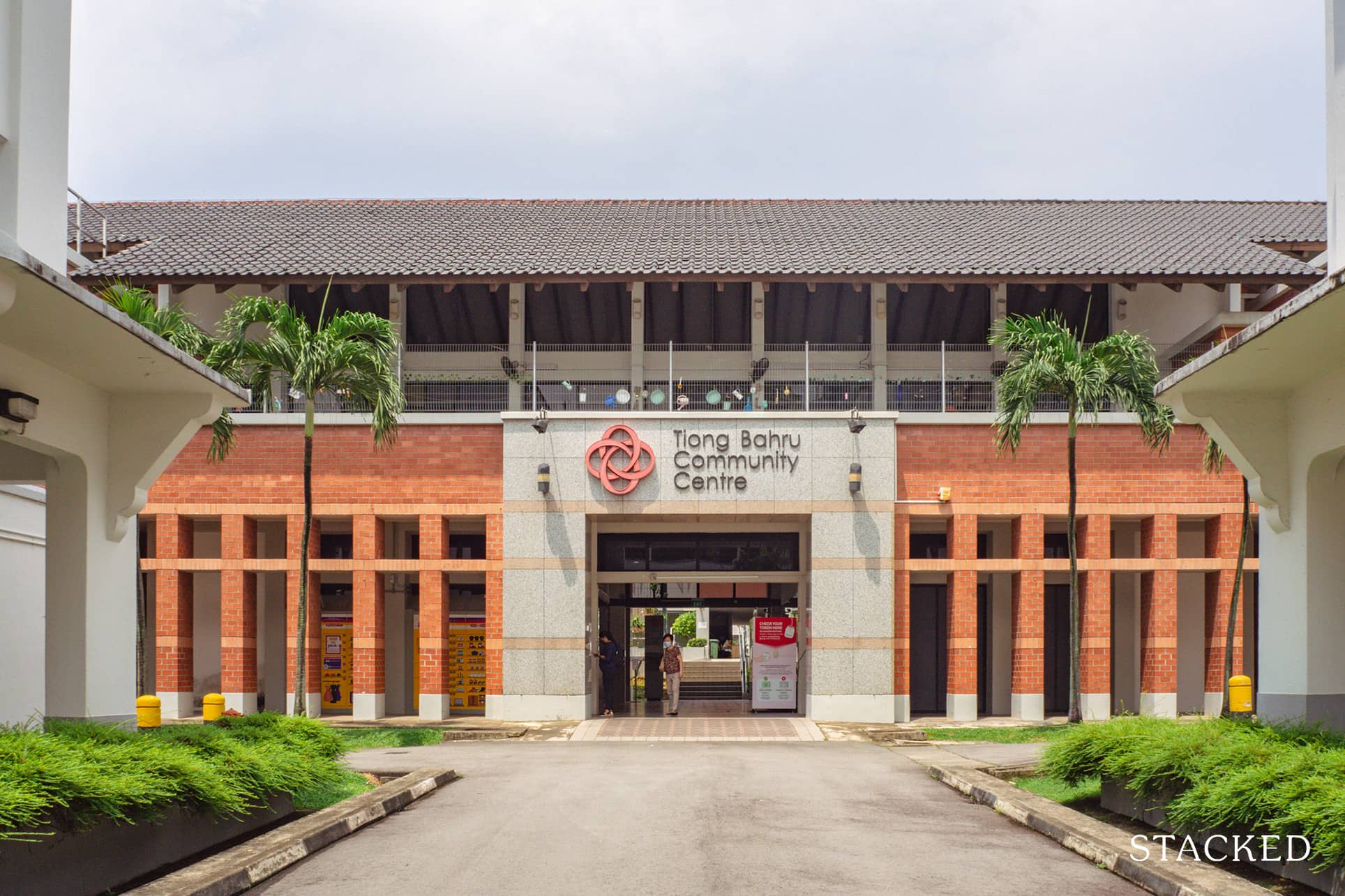
Like any decent person, I congratulated them on tying the knot and found out that they actually met at Tiong Bahru, which is why they chose to take their wedding photos at the place they first encountered each other. Full circle!
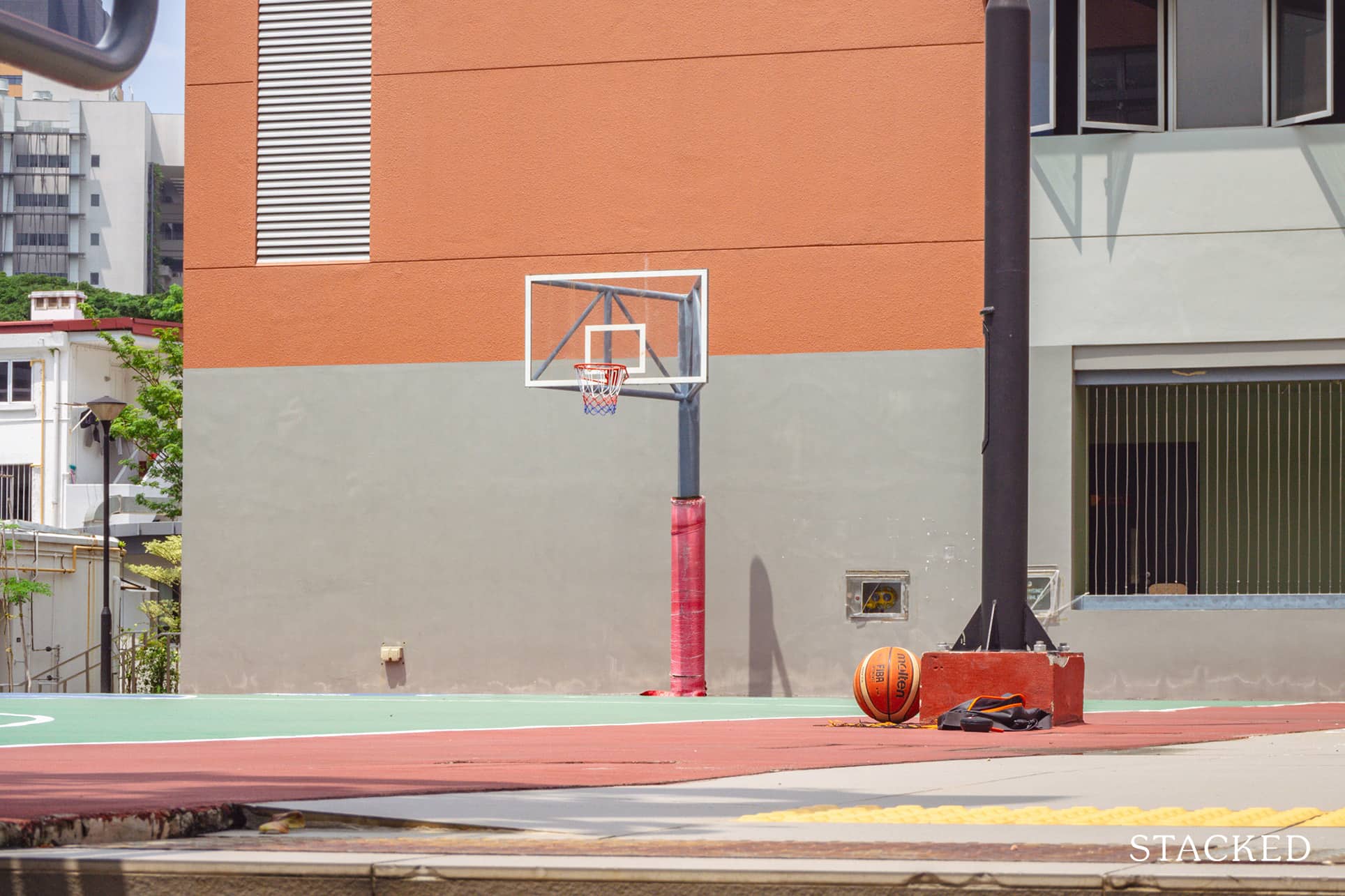
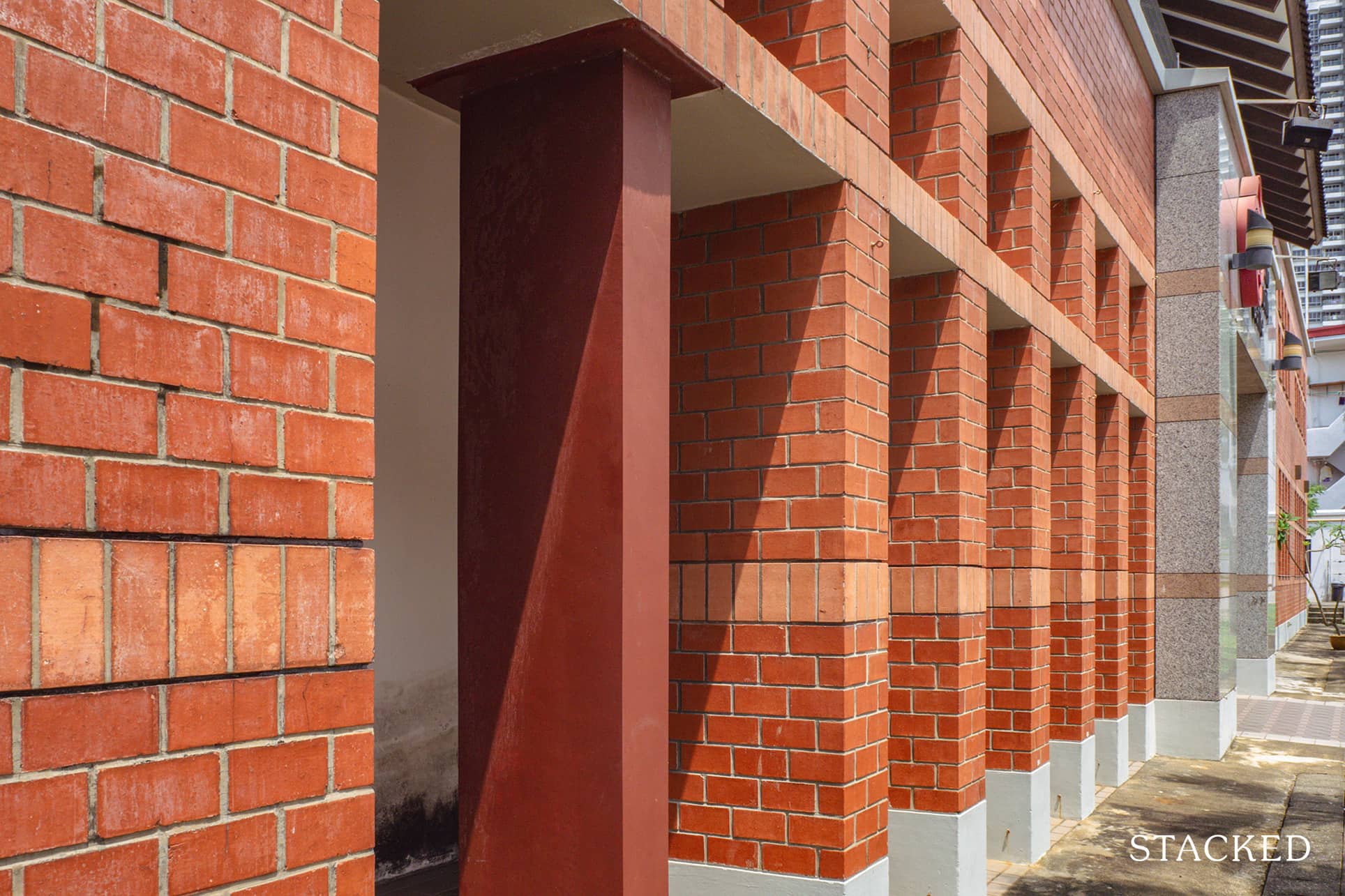
I too, visited several other famous cafes – the unmistakable Tiong Bahru Bakery, Merci Marcel and Privé. Although not packed but definitely many regulars were enjoying their breakfast and coffee before heading about their day.
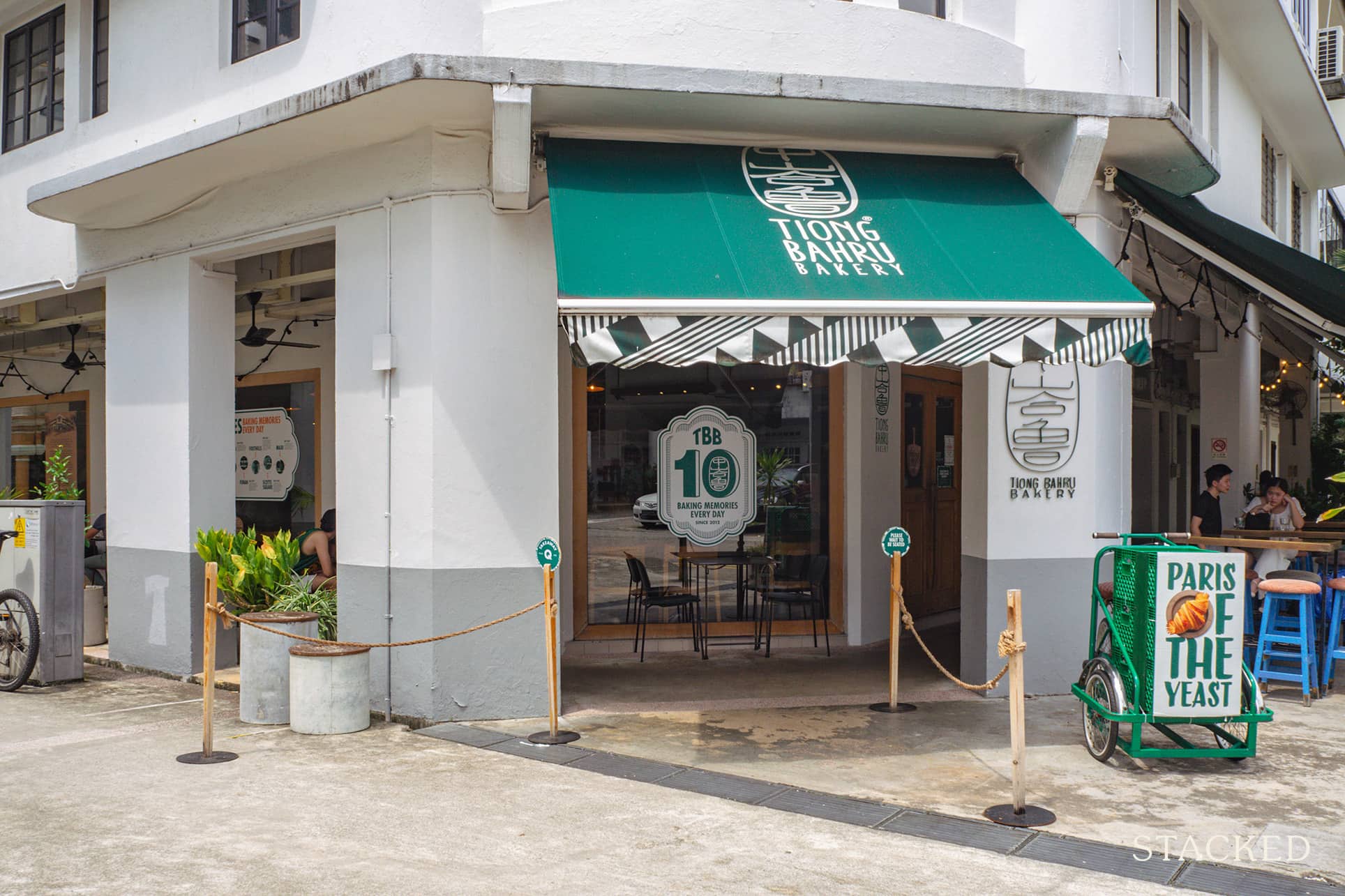
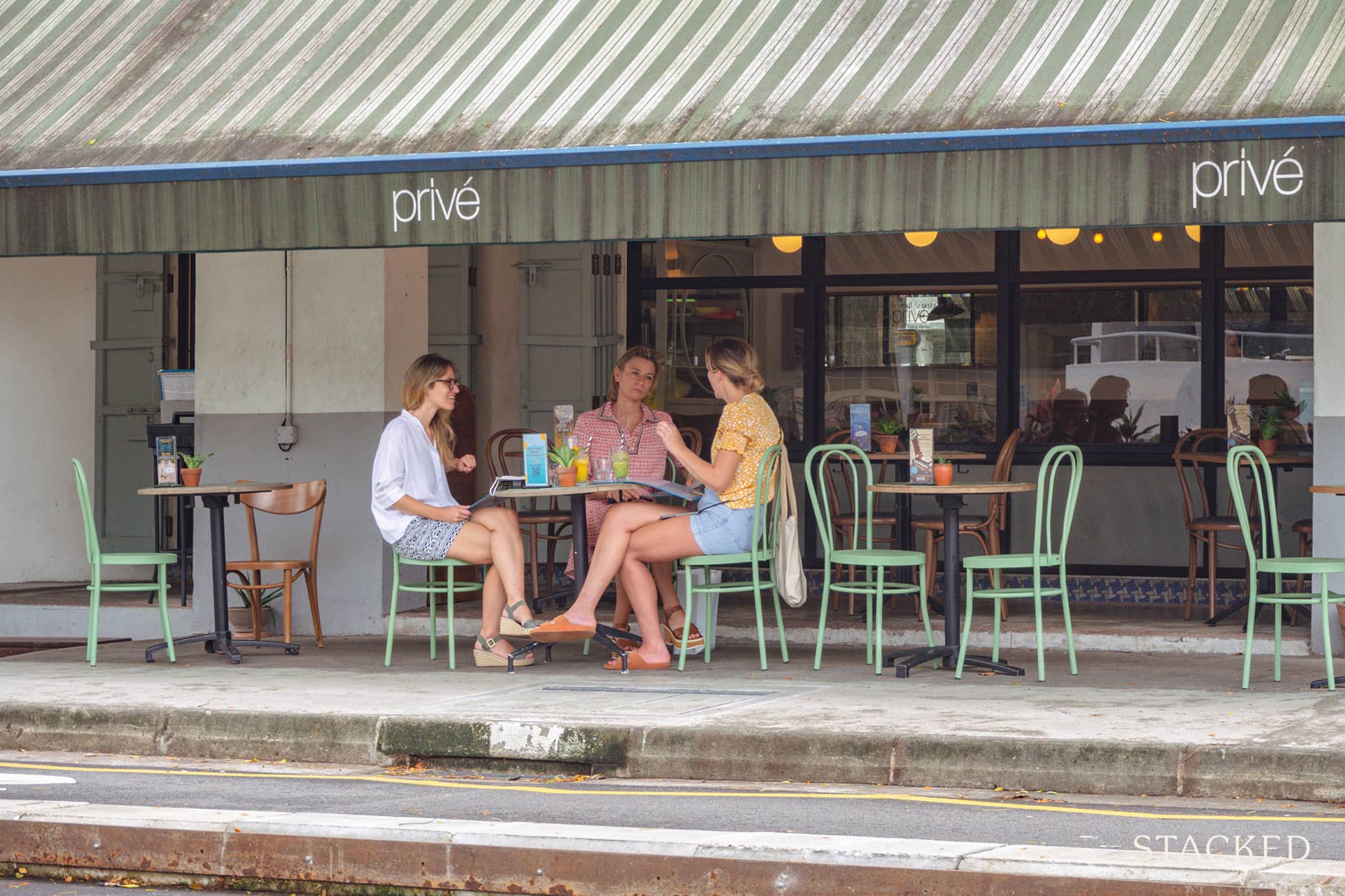
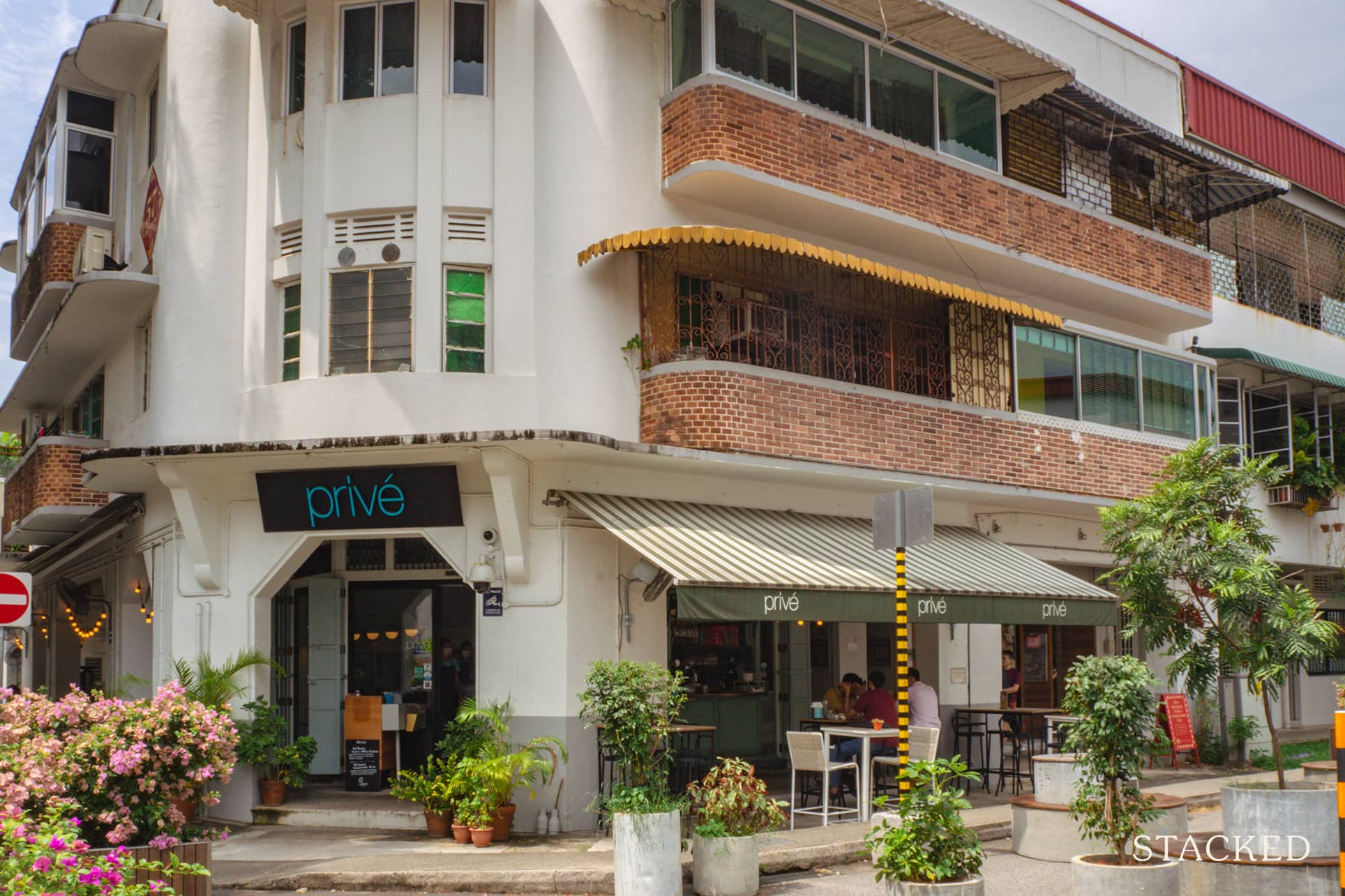
Don’t miss out touring the back alleyway of these shophouses too – you might chance upon cool-looking doors, colourful walls or art murals.
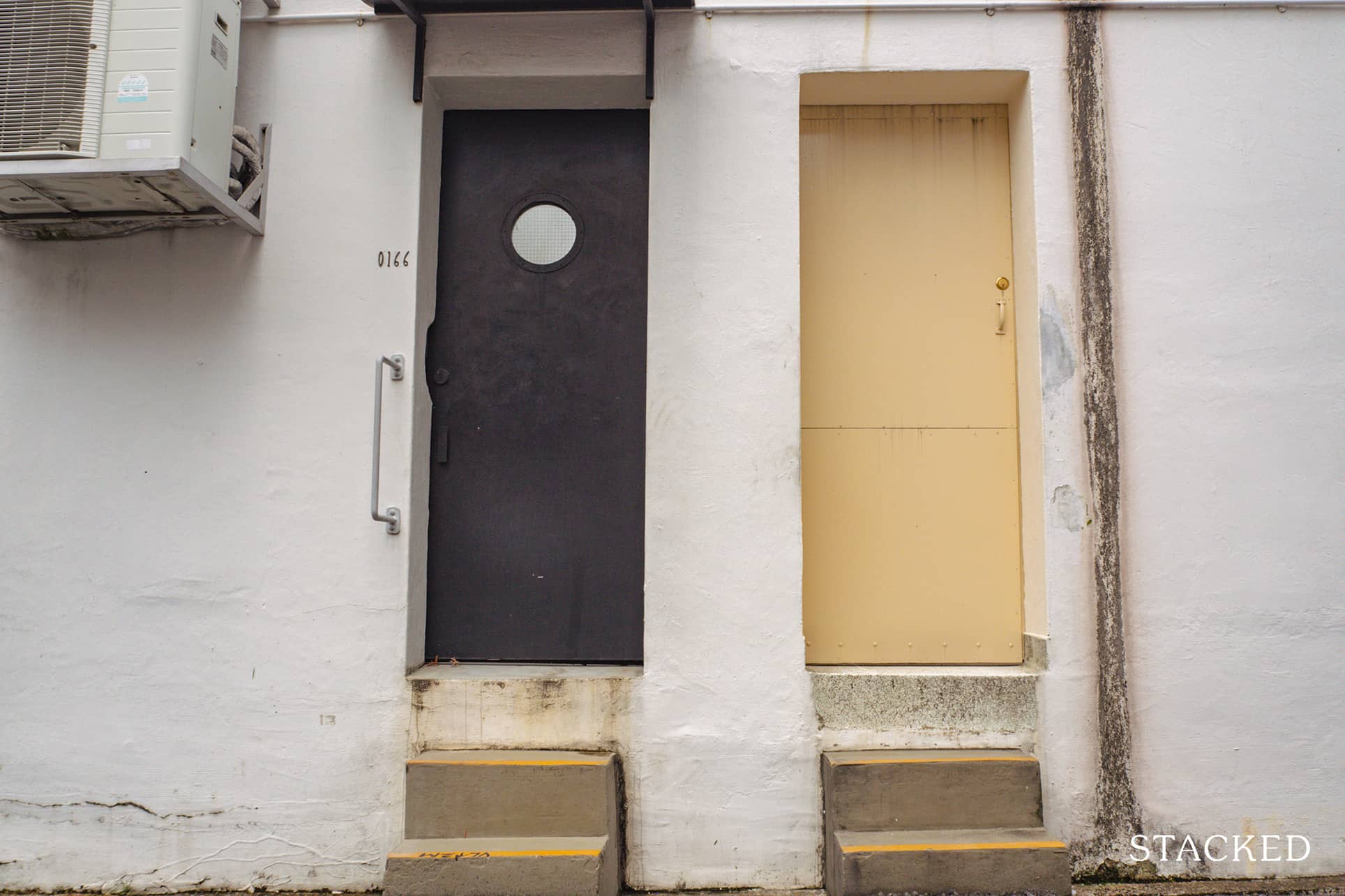
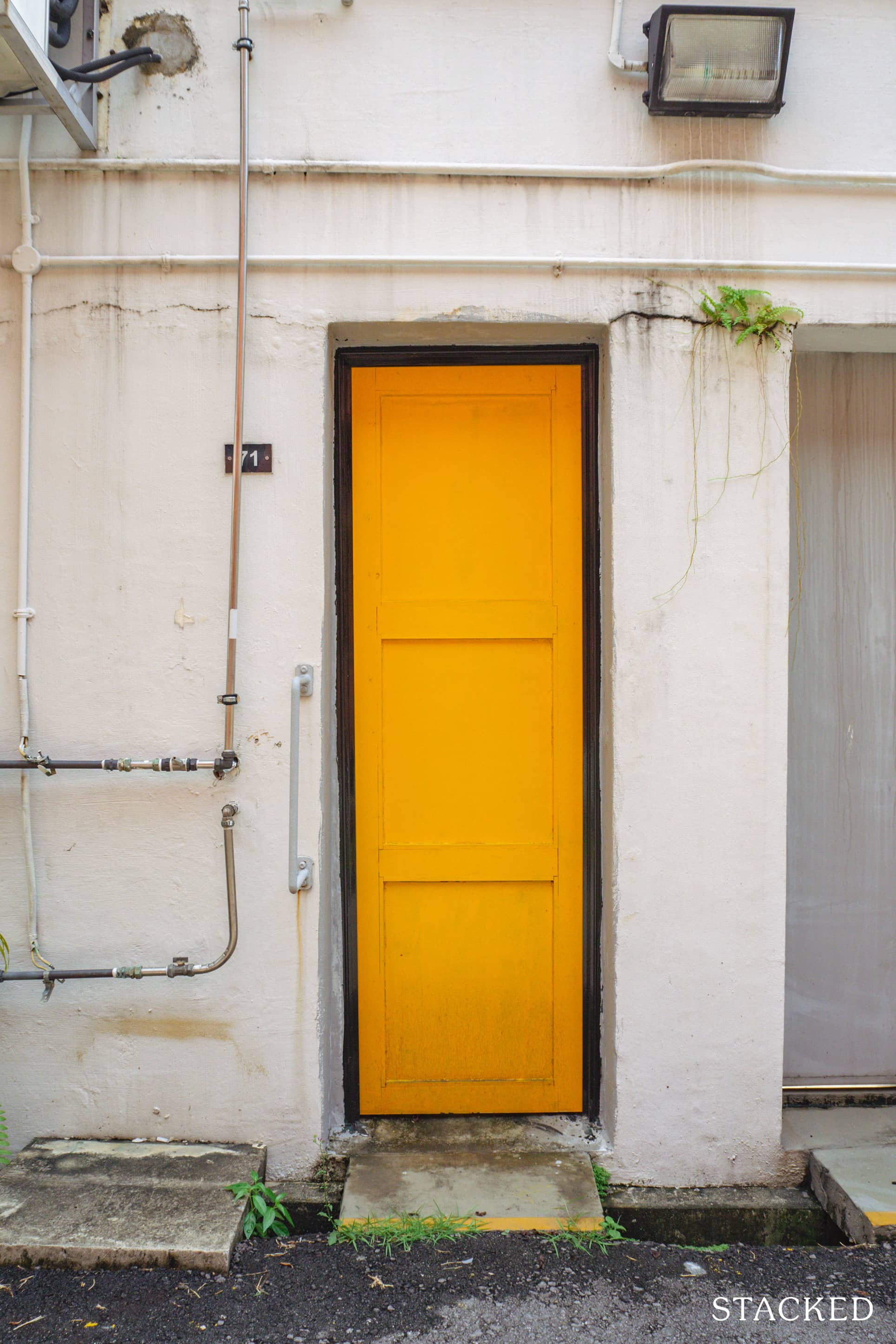
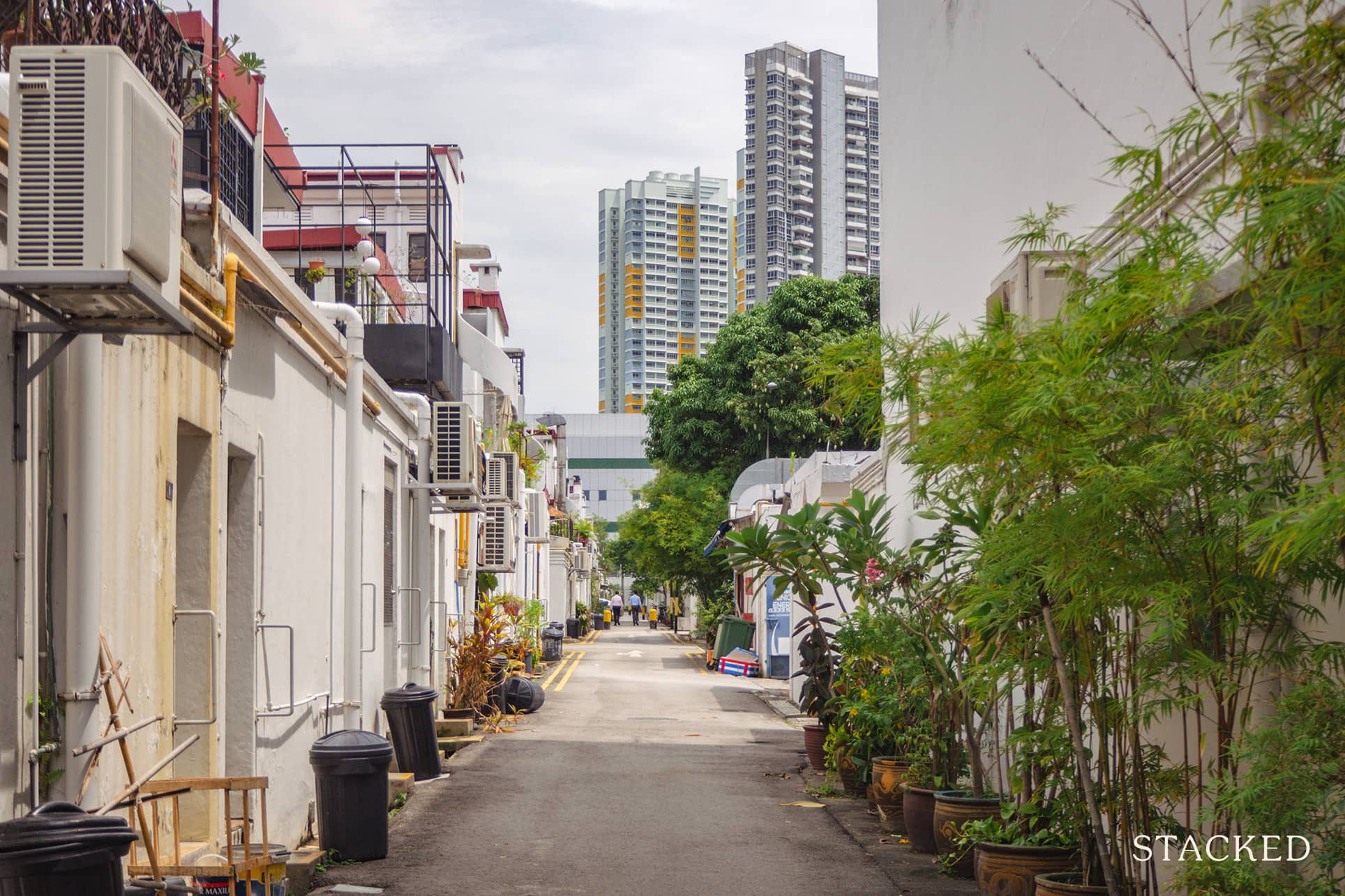
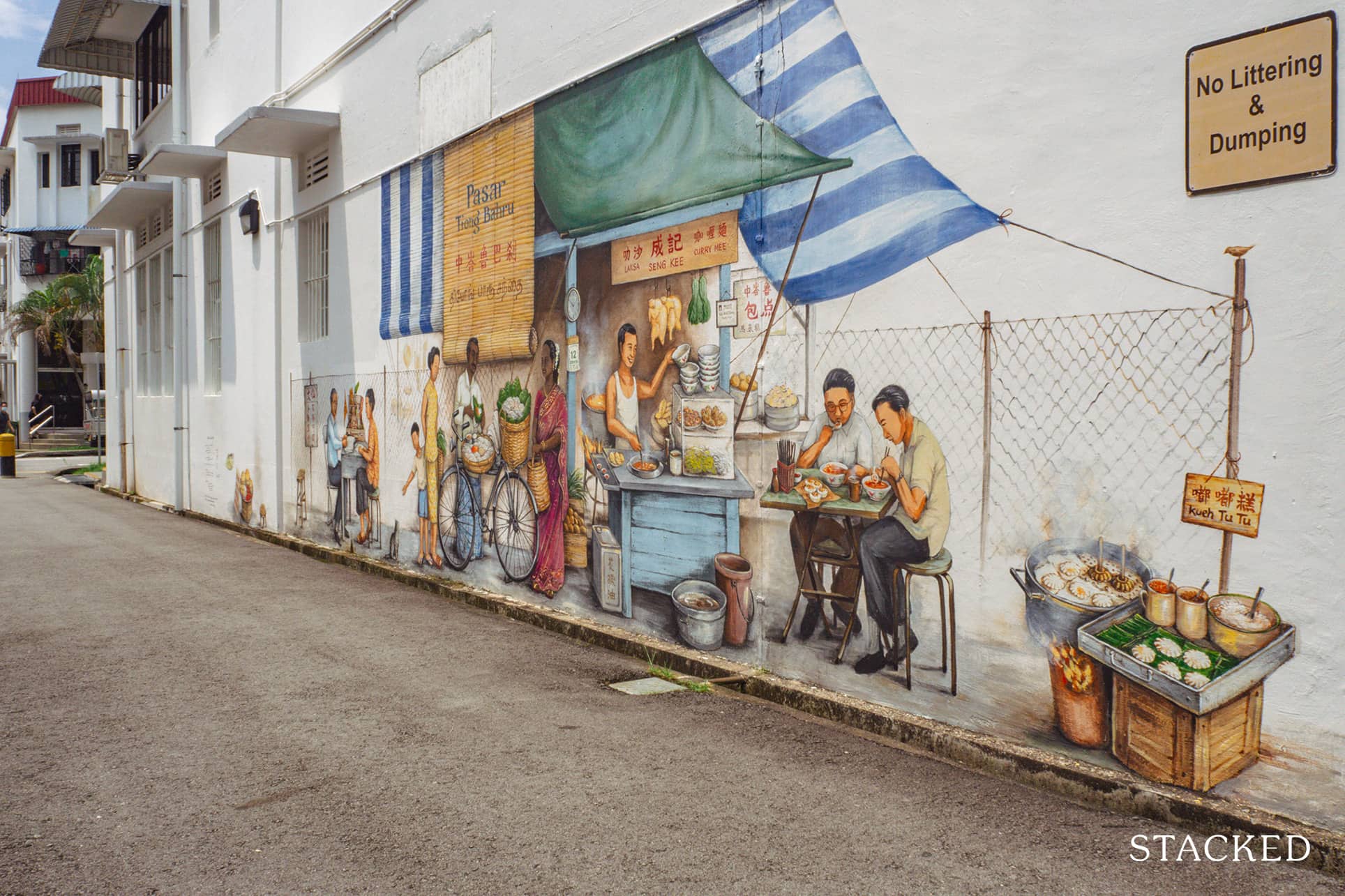
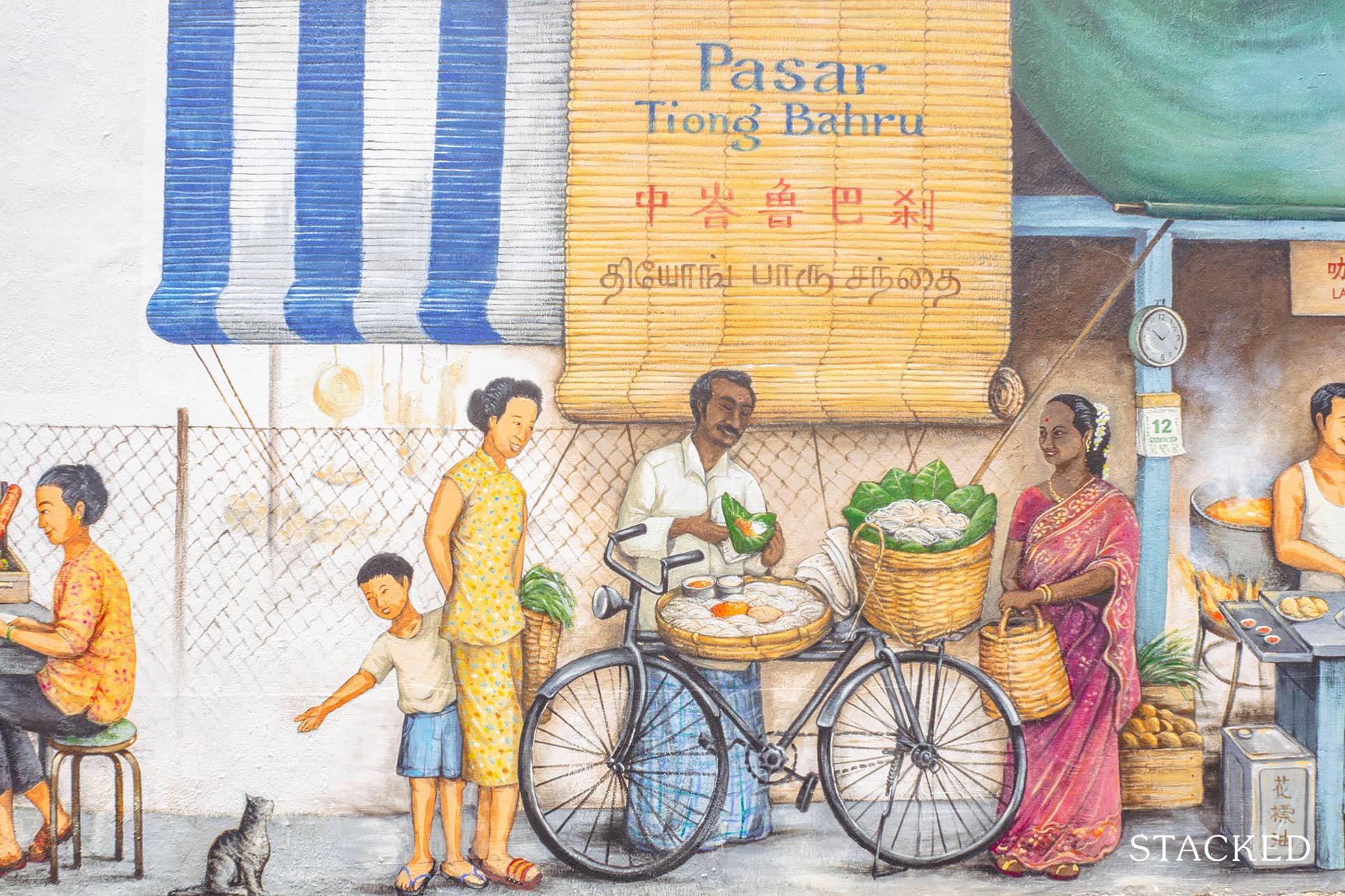
By 10 AM, most of the other stores were opening one by one and that’s when the roads start to get busier too.
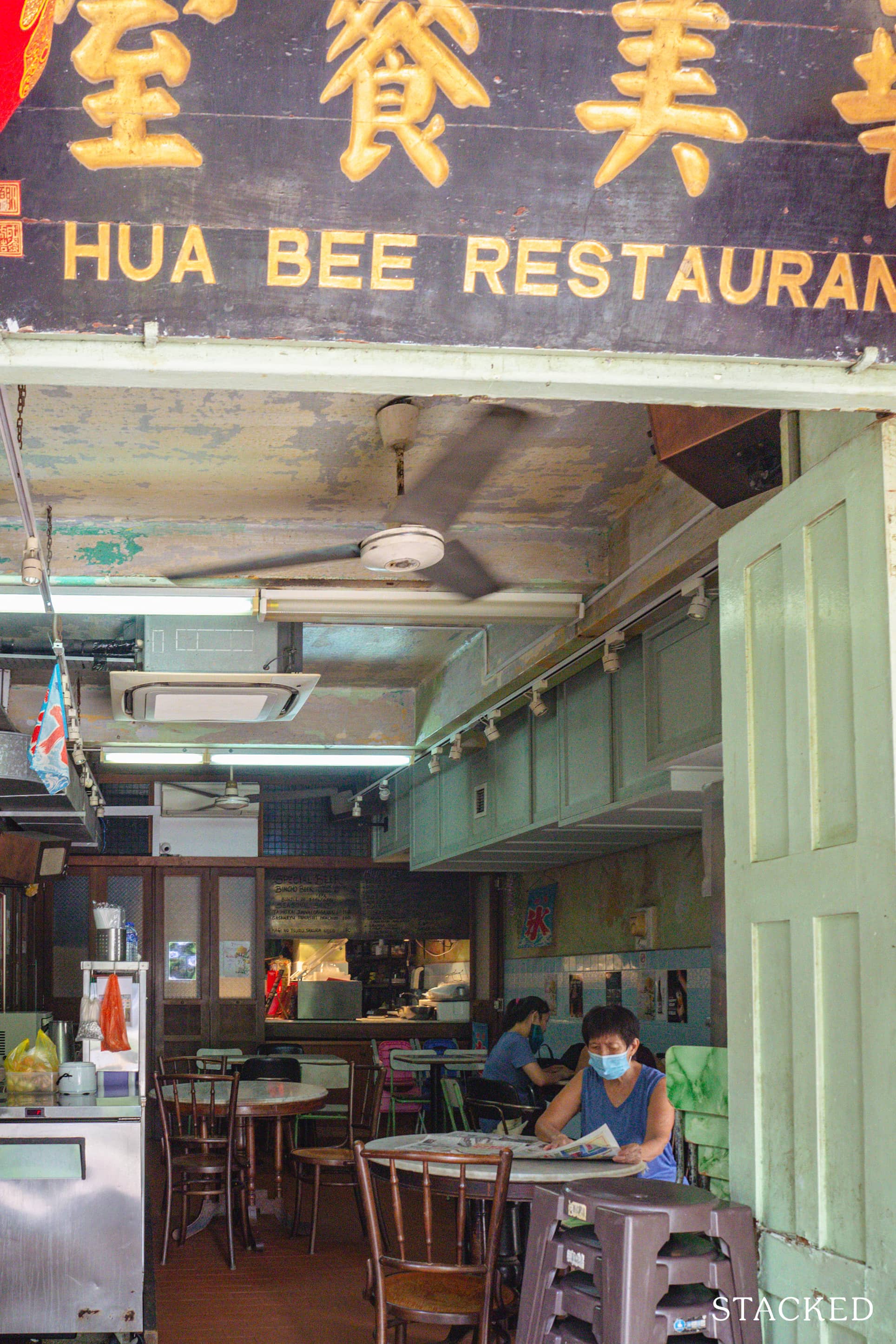
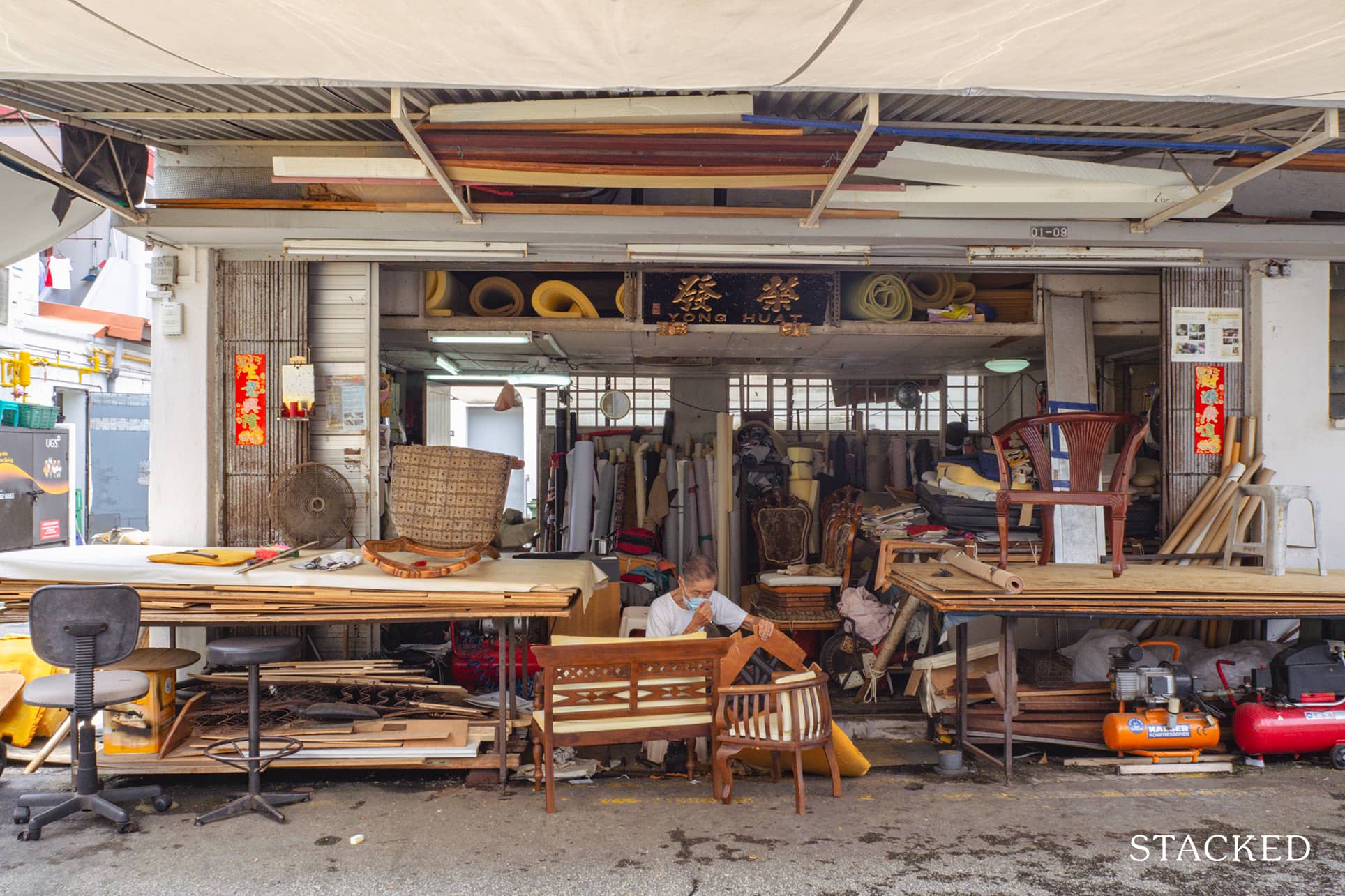
Next up on the tour was the Tiong Bahru Market and the HDBs nearby. There were many more middle-aged folks and elderly choosing to enjoy breakfast with their spouse, friends or solo on the second level while the first floor was bustling with merchants selling fresh flowers, fish, pork and other poultry and customers haggling over prices.
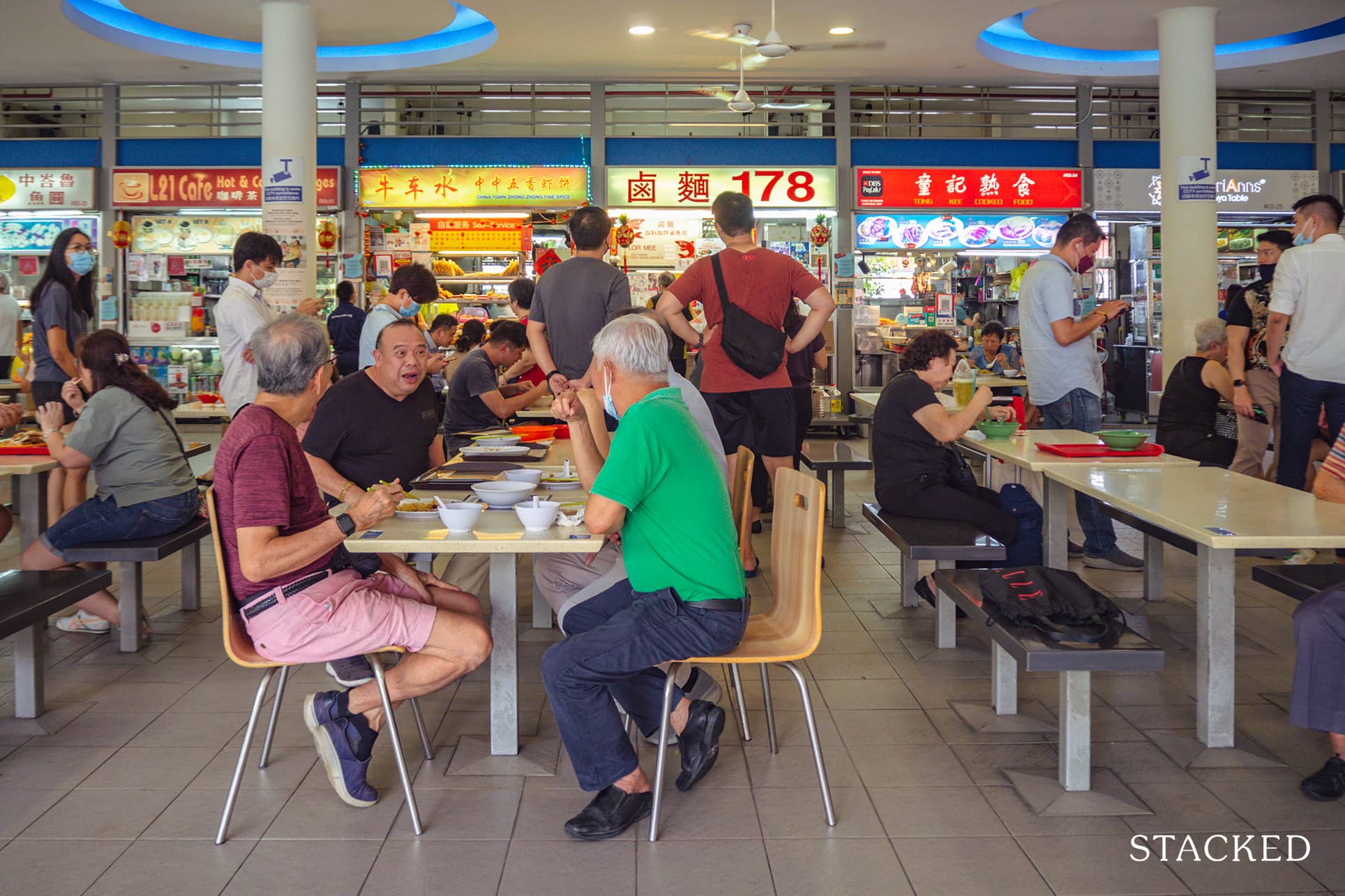
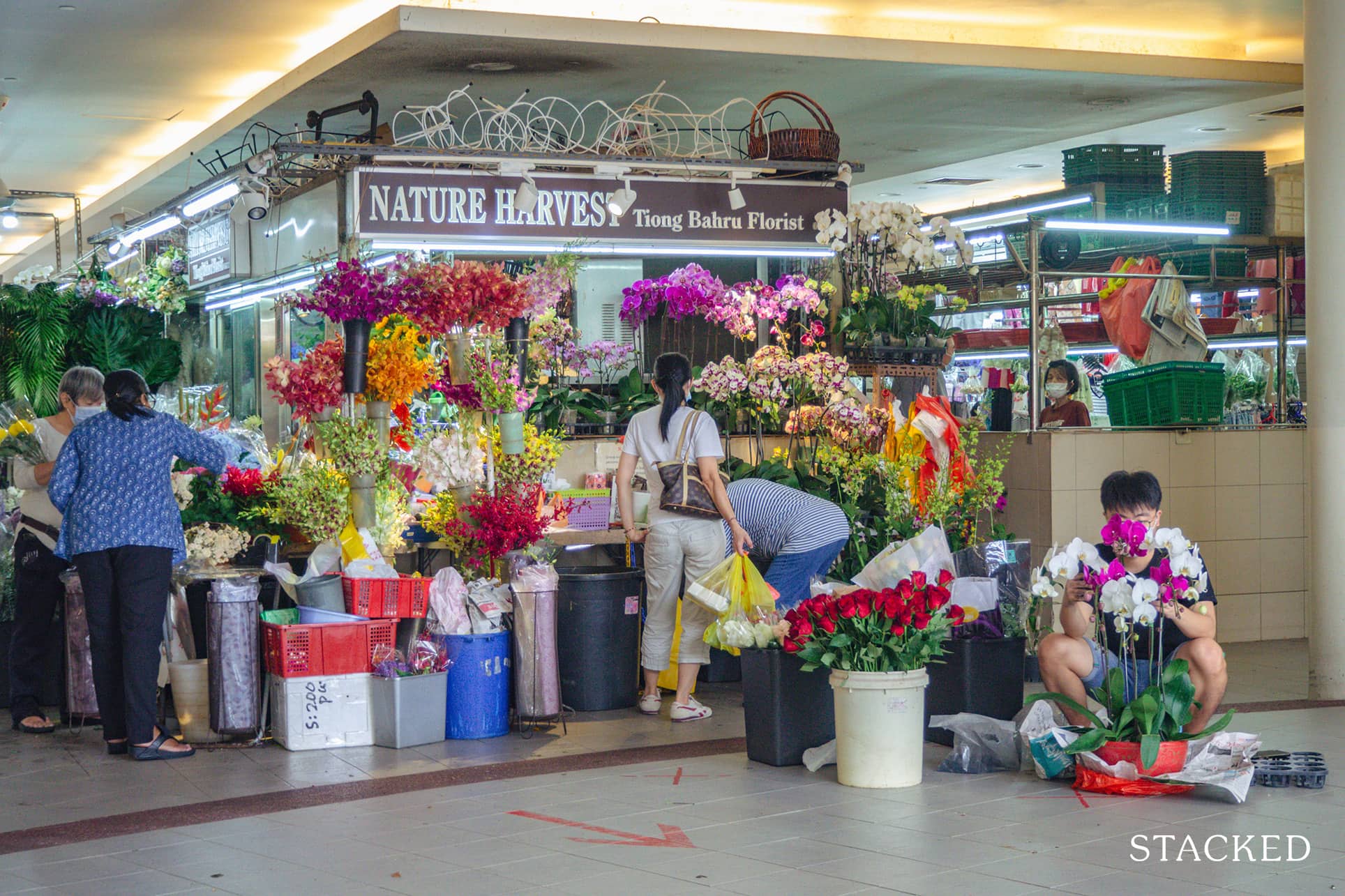
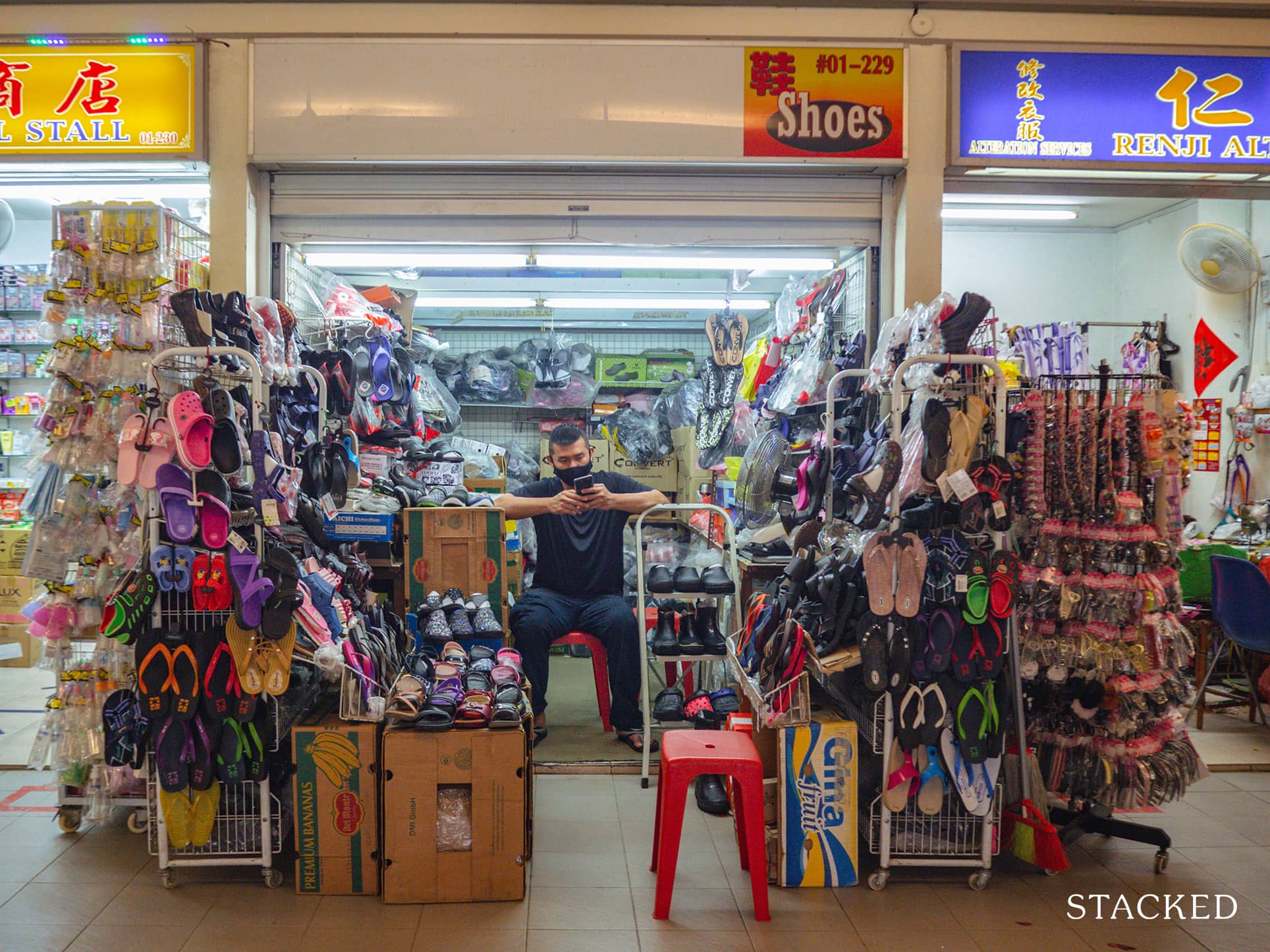

The elderly were seen sitting on public benches and what seems to be ‘people-watching’. In the HDB area, I saw several uncles in white singlets walking around and watering the plants which seemed to be a routine for them.
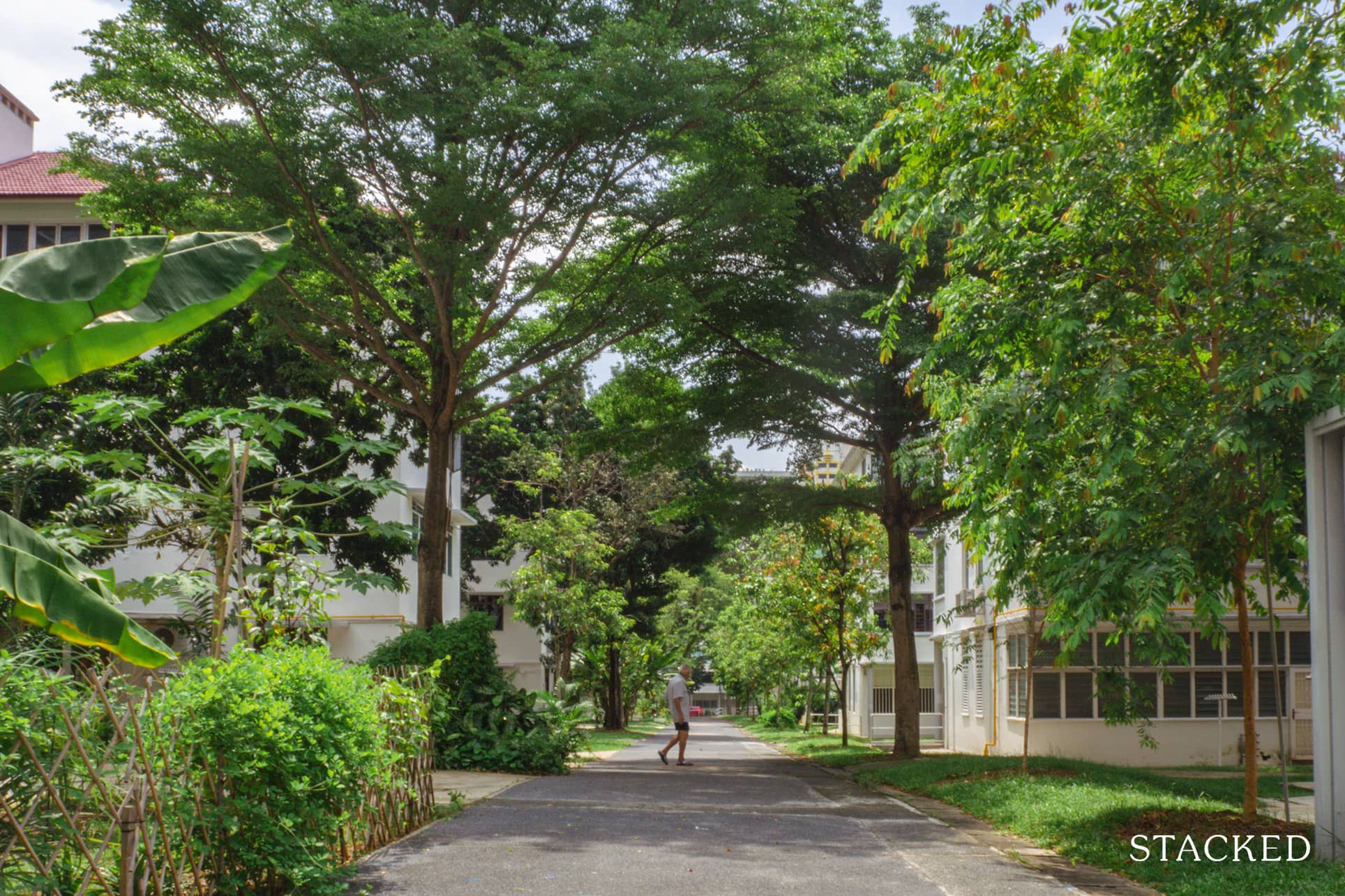
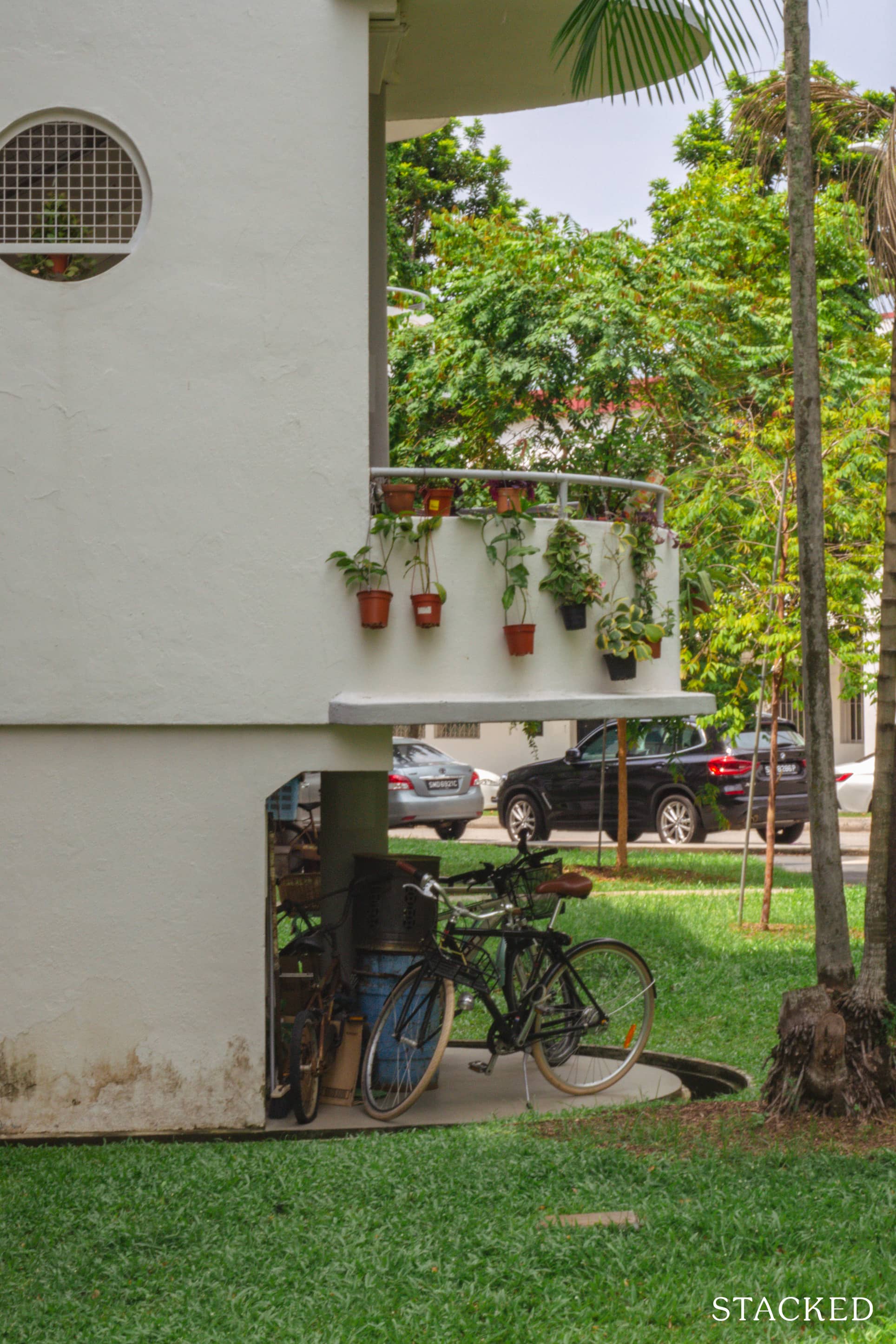
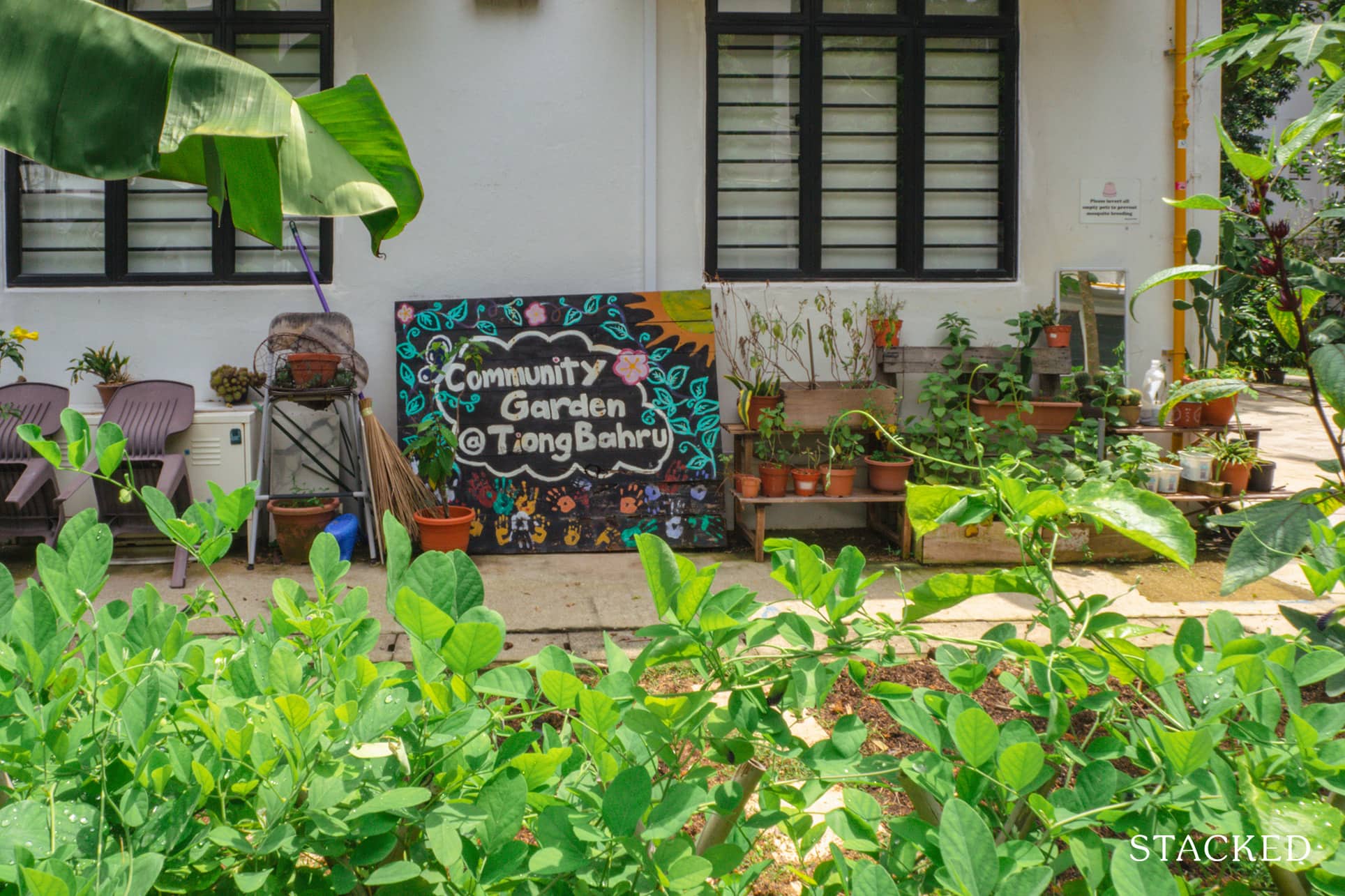
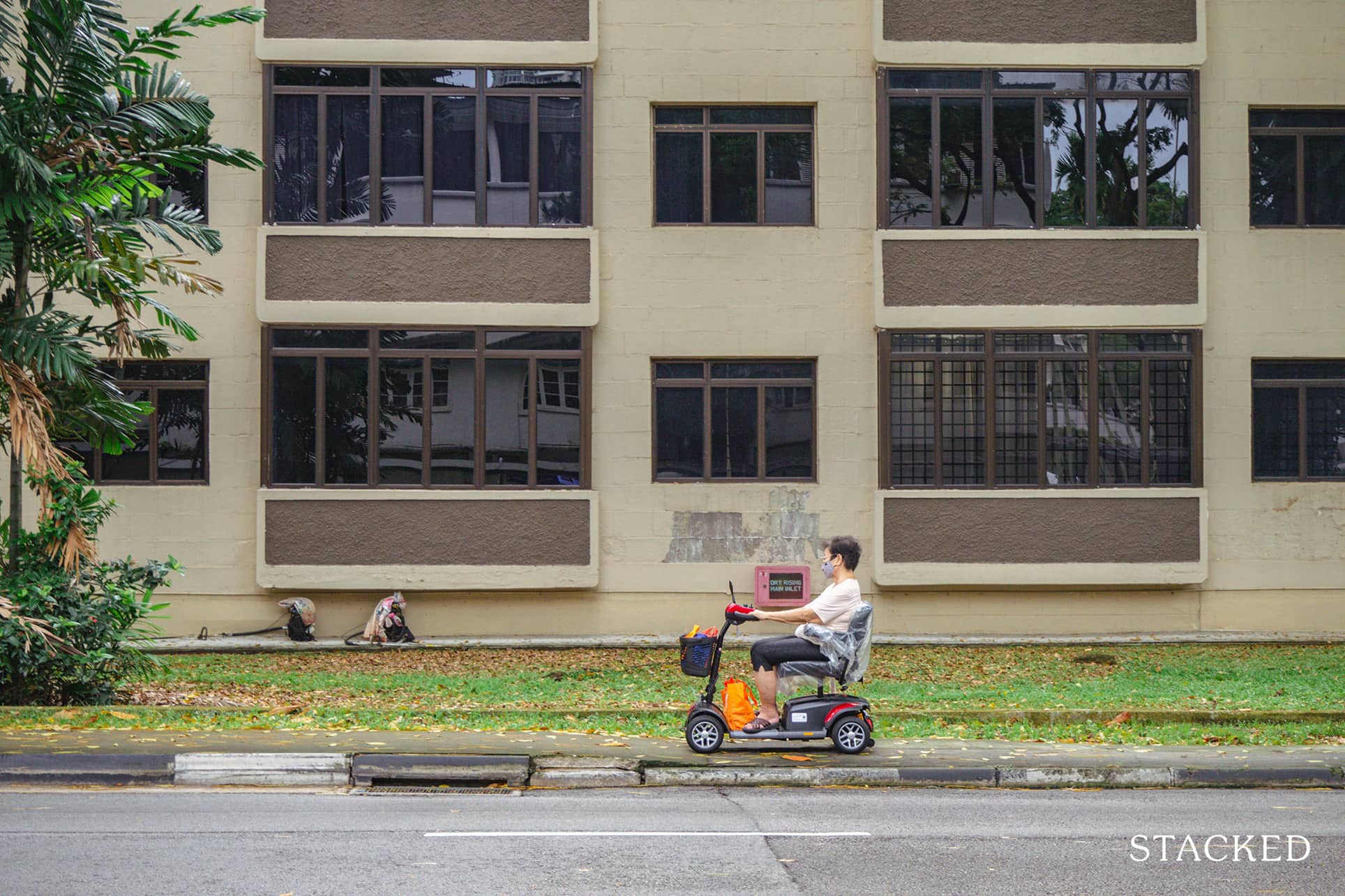
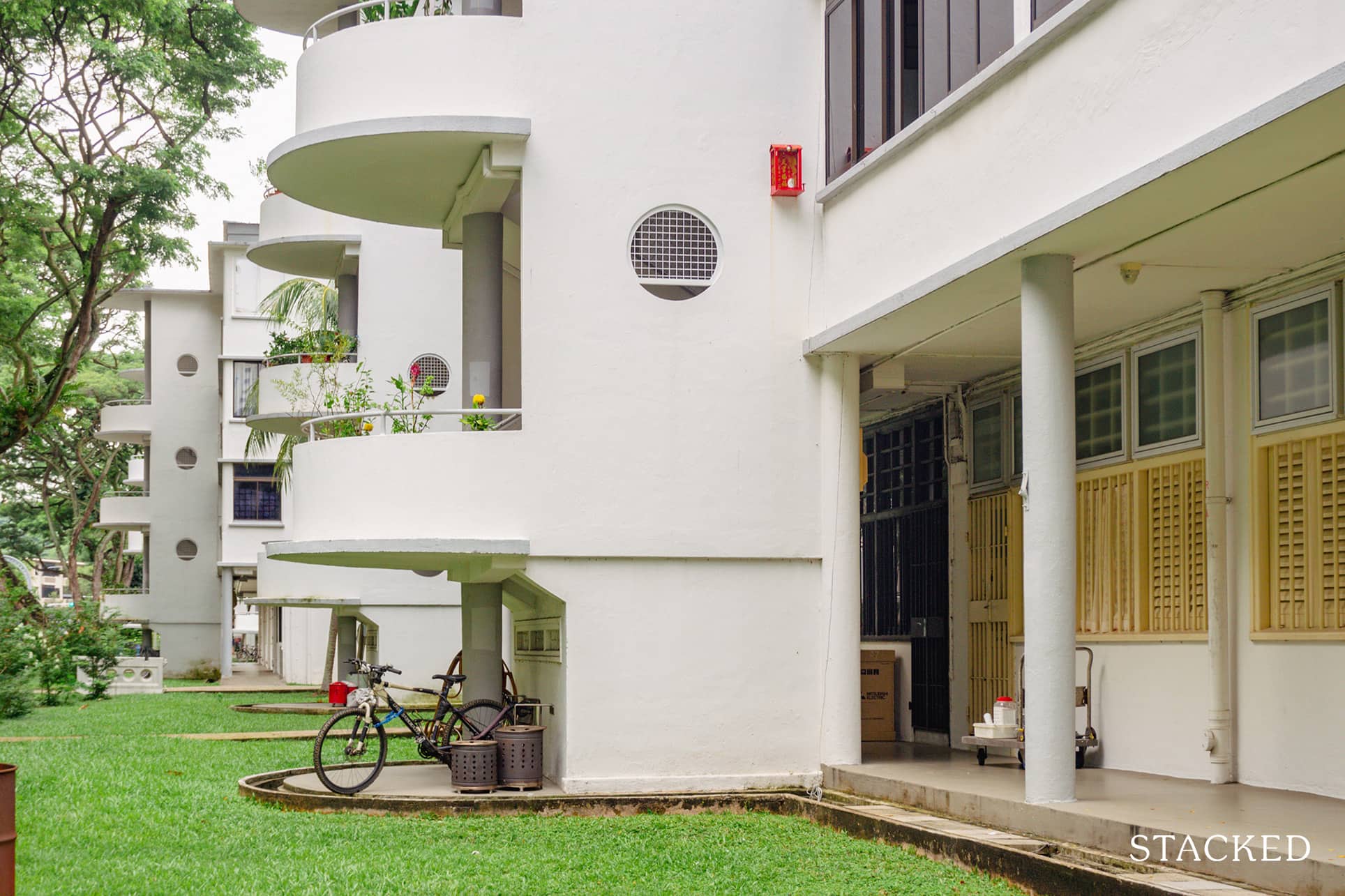
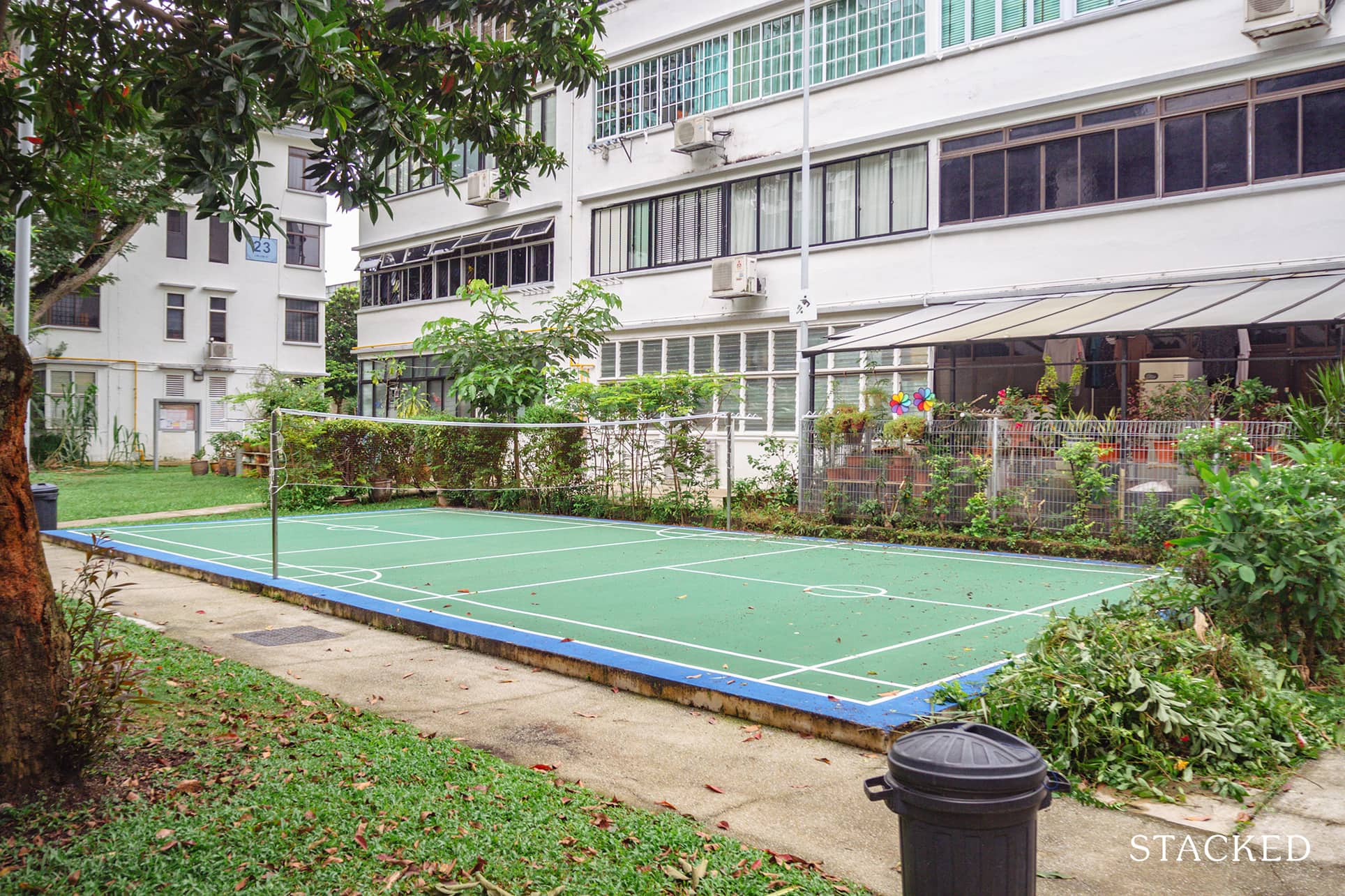
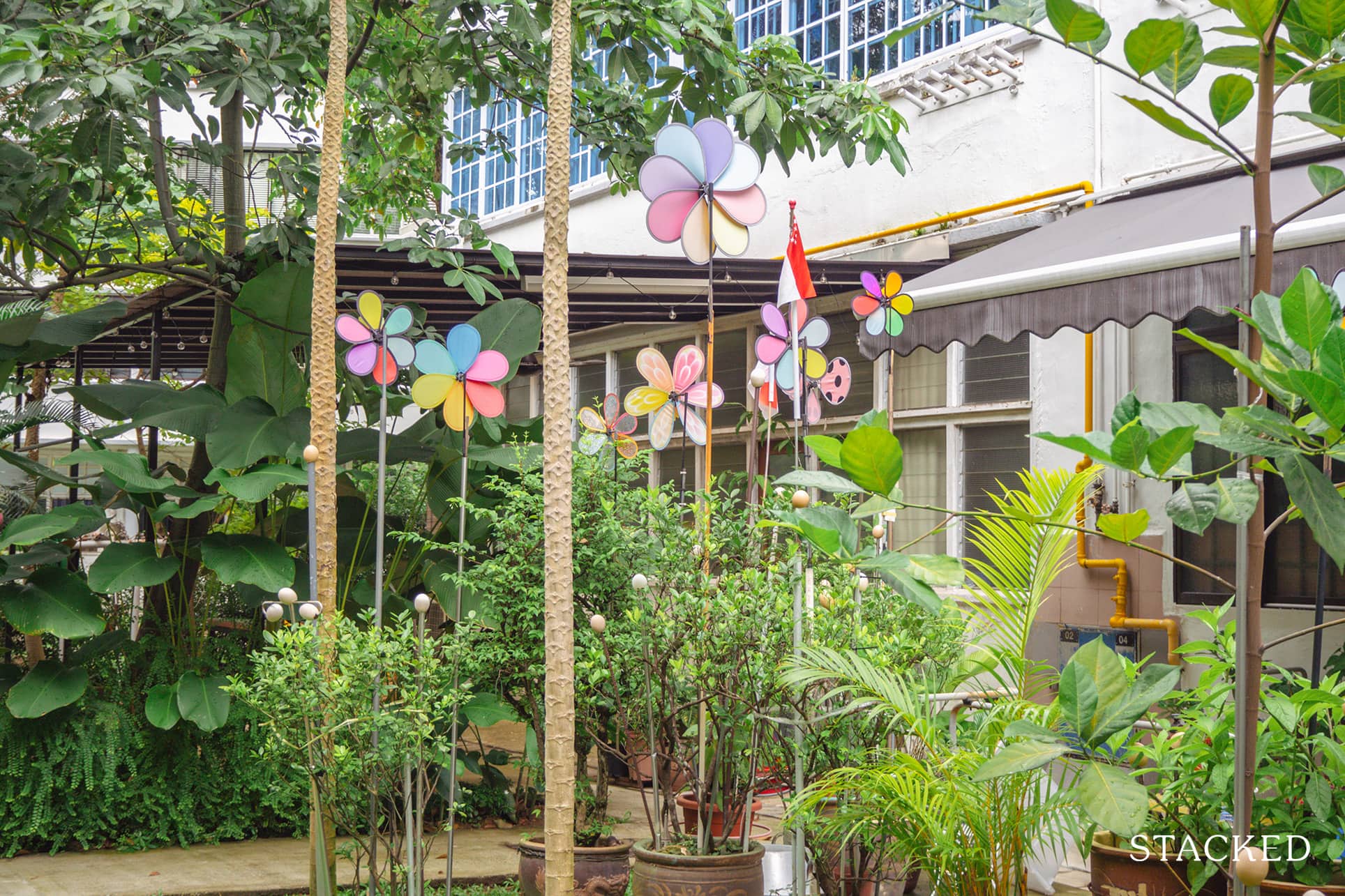
Compared to the cafe-centric part of Tiong Bahru, this had much more nostalgic and somewhat familiar sights and sounds that reminded me of my days as a little girl.
More from Stacked
Disgruntled About My Walk-Up Apartment: A Homeowner’s Cautionary Tale
Walk-up apartments are a niche type of property that isn't for everyone. While you do often have more interior space…
And of course, how can we forget the iconic Tiong Bahru bird corner?
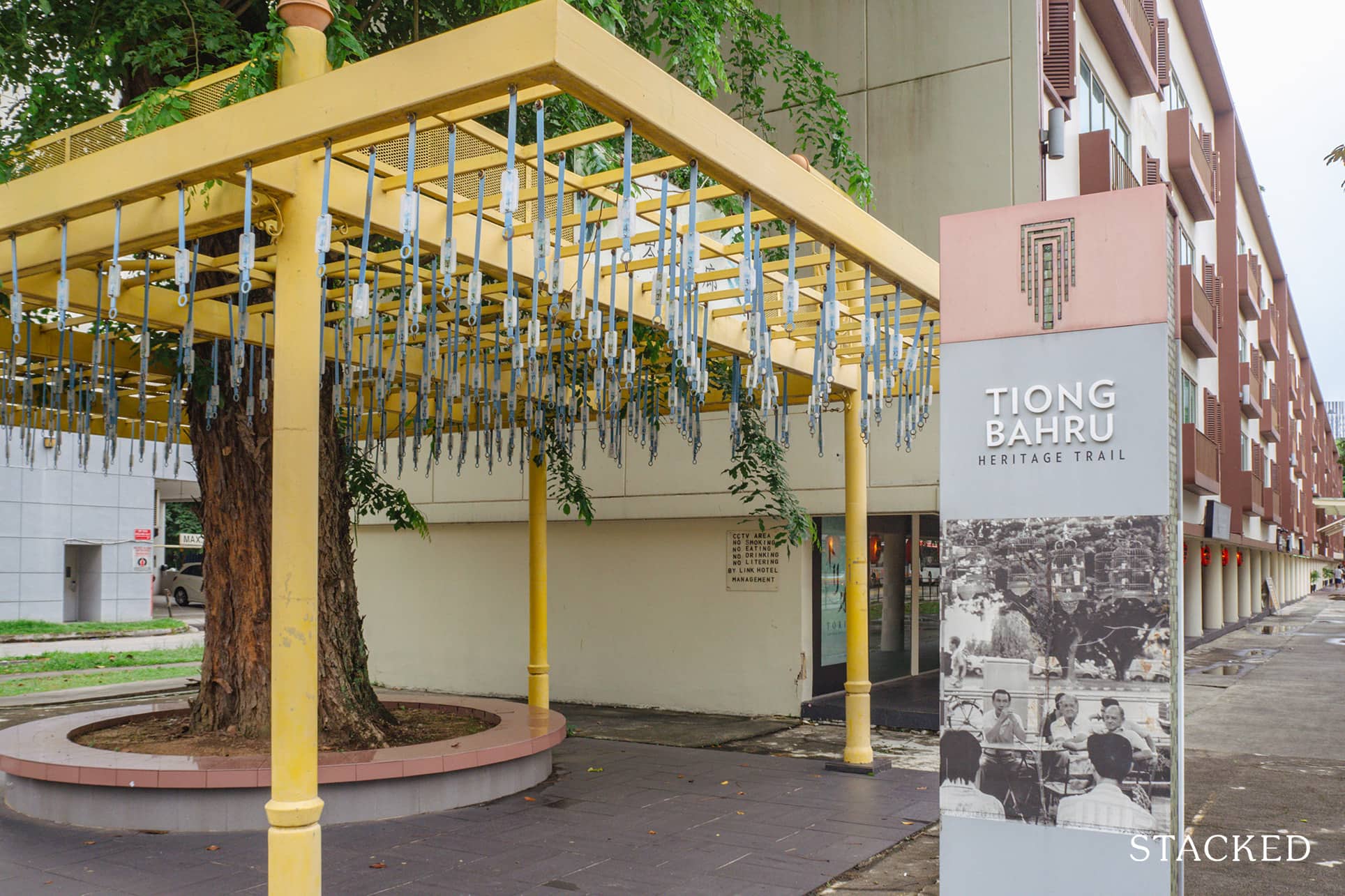
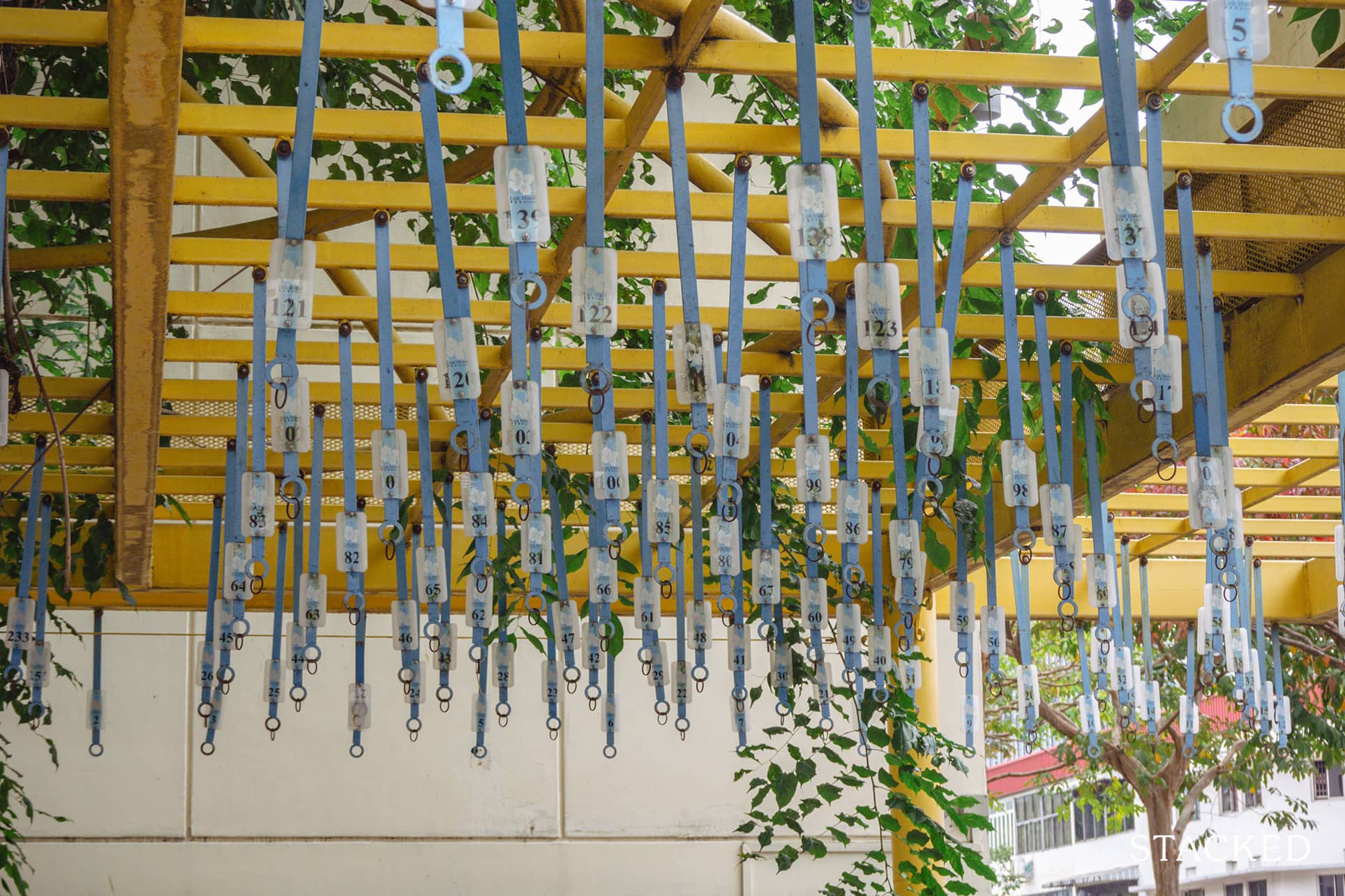
This spot has been around since the 60s and used to have the influence of gathering all the bird lovers in Singapore (even Malaysia and Thailand!). These bird enthusiasts used to admire each others’ birds by hanging the cages on these strips and enjoying coffee at the nearby coffee shop. In fact, the Tiong Bahru Bird corner was the idea of the coffee shop owner to rake in more business.
Although it is past its prime, this preserved spot serves as a core reminder of Singapore’s past heritage.
And finally, we end the day tour with Tiong Bahru Park.
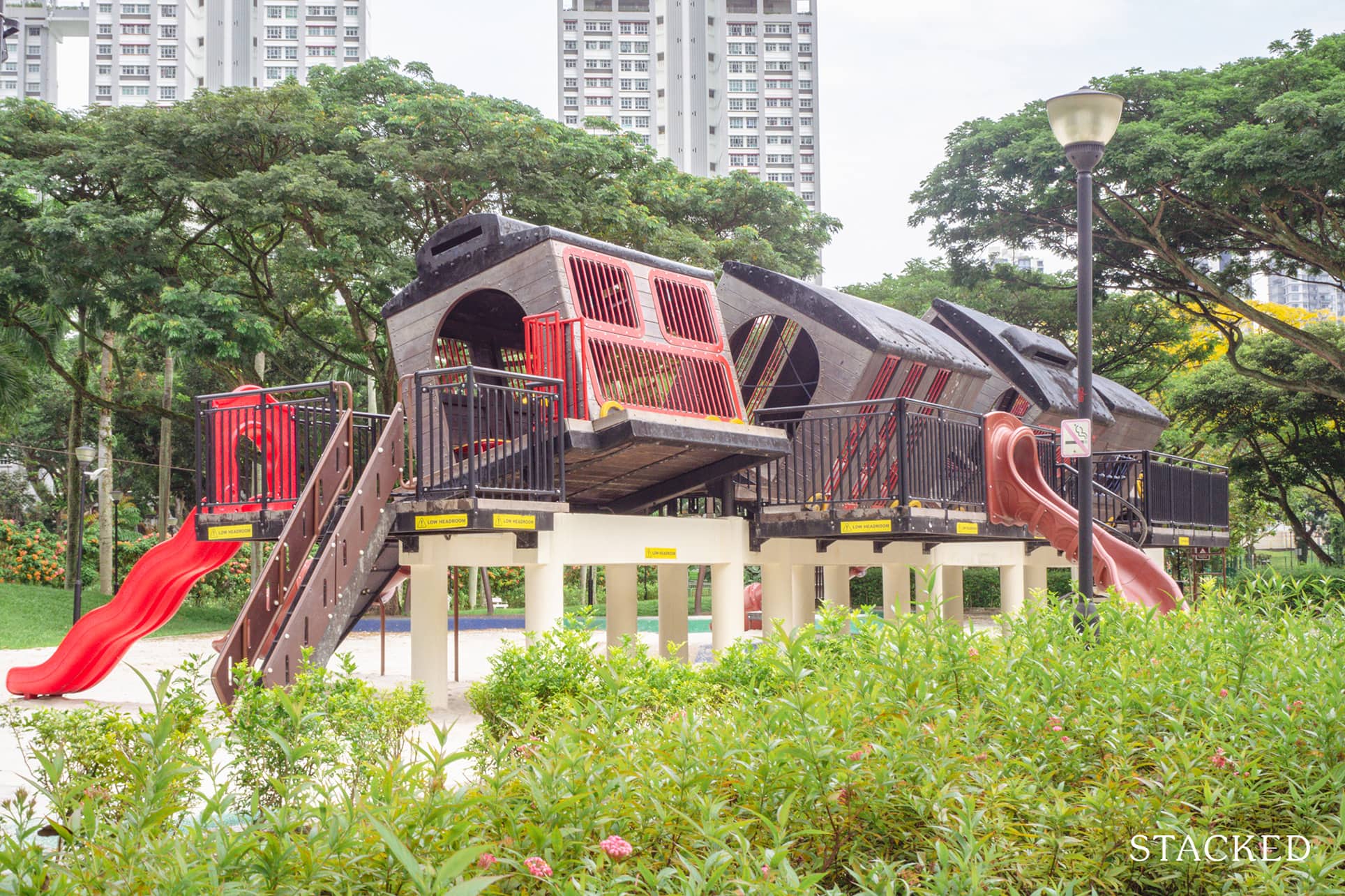
I’d suppose that the children would find this playground exceptionally fun – just look at the Tilting Train! A great and inexpensive way to spend a few hours with your kids under the sun.
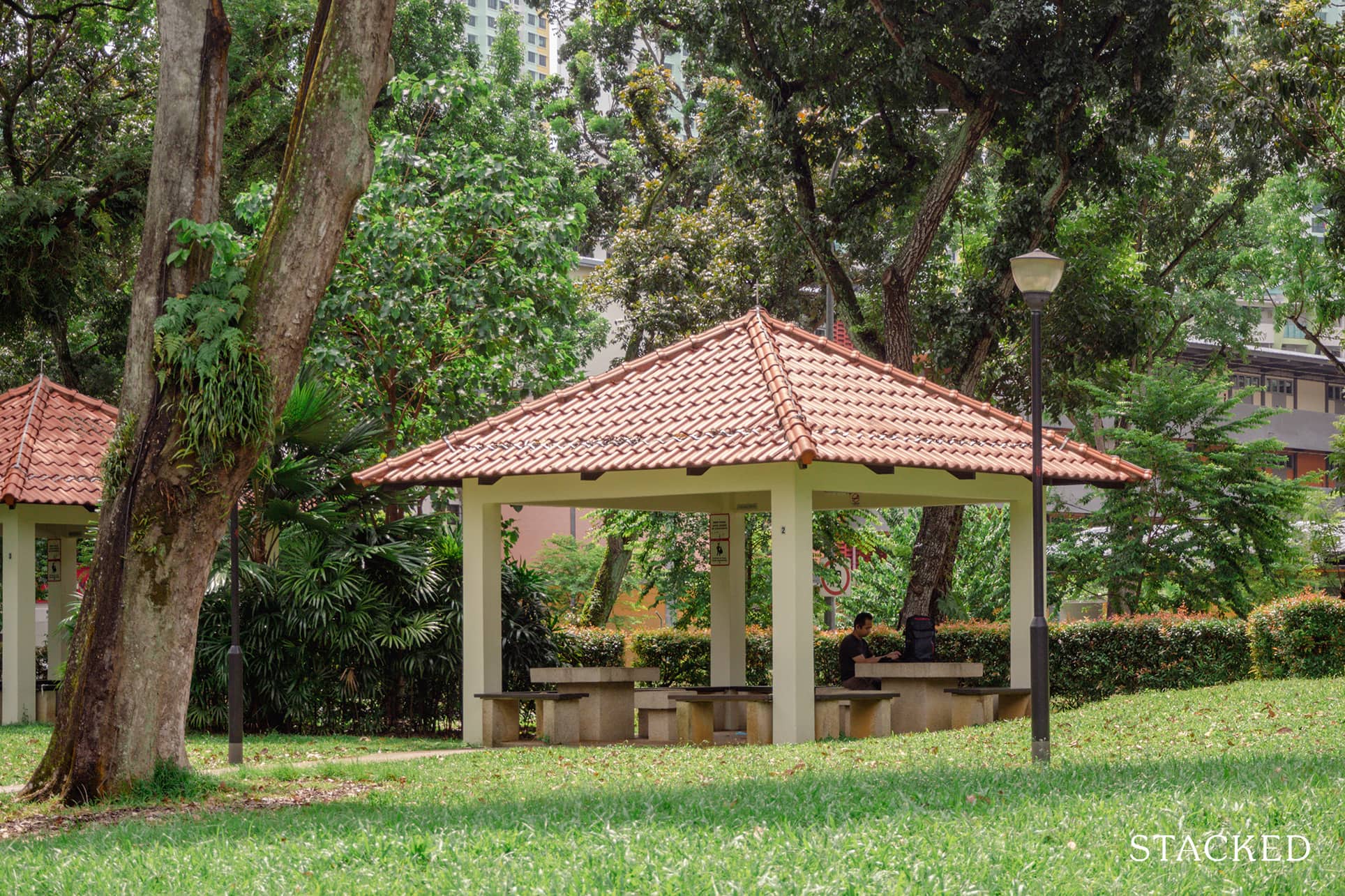
The park has several pavilions for a shelter to rest in when the weather gets too hot. Generally, the space is very quiet and serene, to the point that I almost forgot that I’m in the midst of Singapore’s city region.
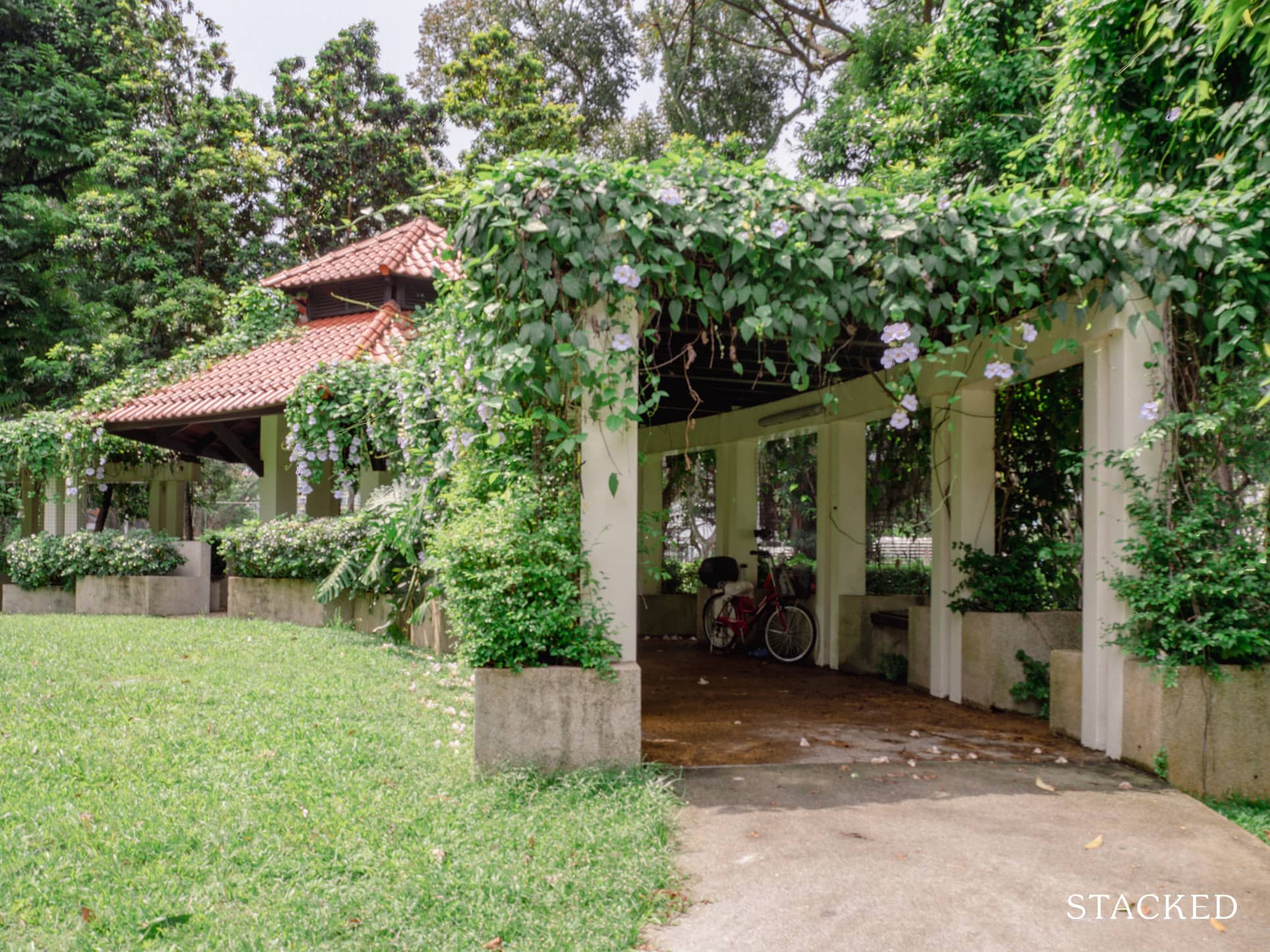
A friend who stays in the neighbourhood once told me that the French expatriate community absolutely adores the neighbourhood and many of them are occupying the flats within Tiong Bahru.
Since not many of them own a car, they choose to cycle around to get to their destinations and their bikes parked outside of the walk-up apartments seem to be evidence of it.
Exploring Tiong Bahru at Night
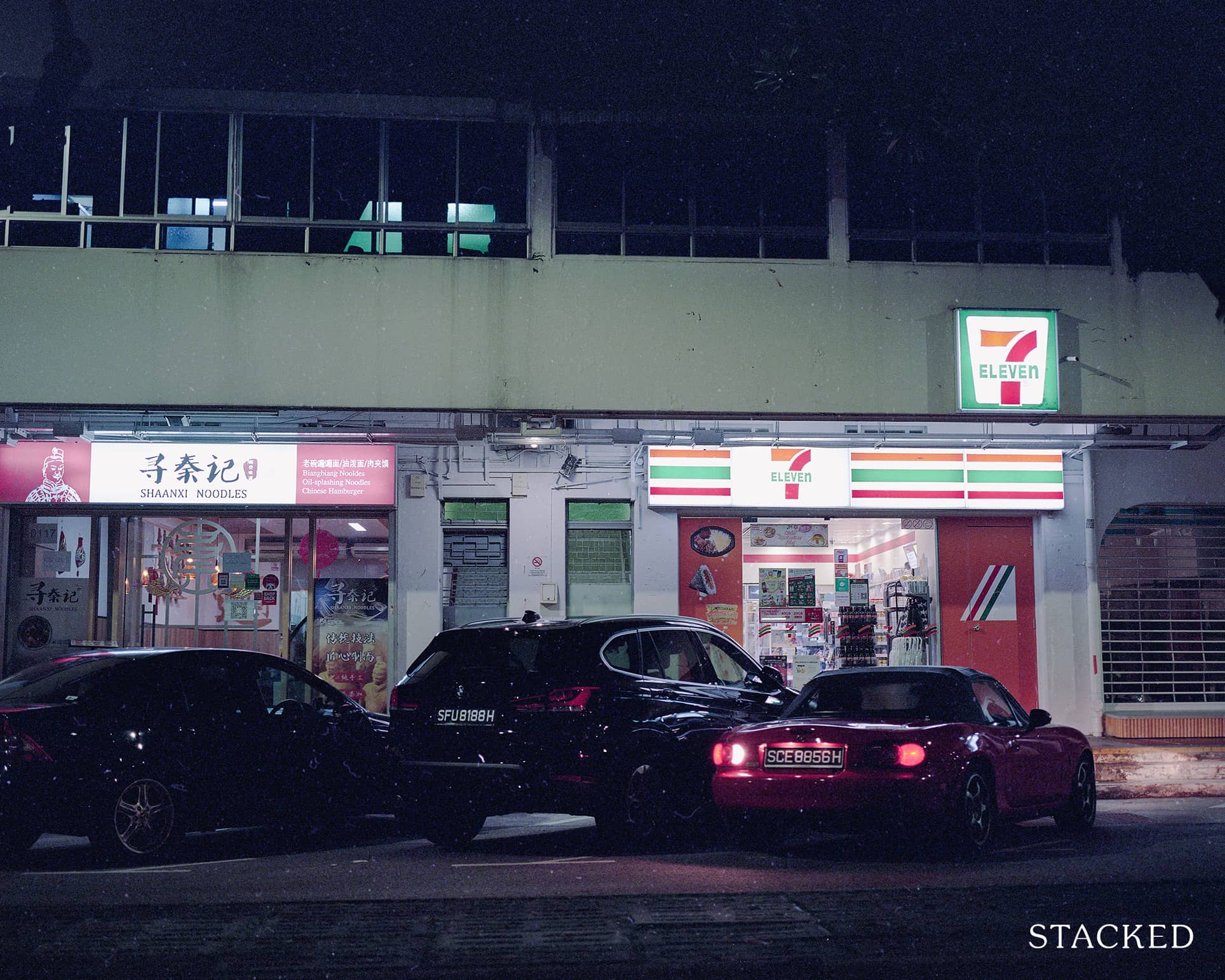
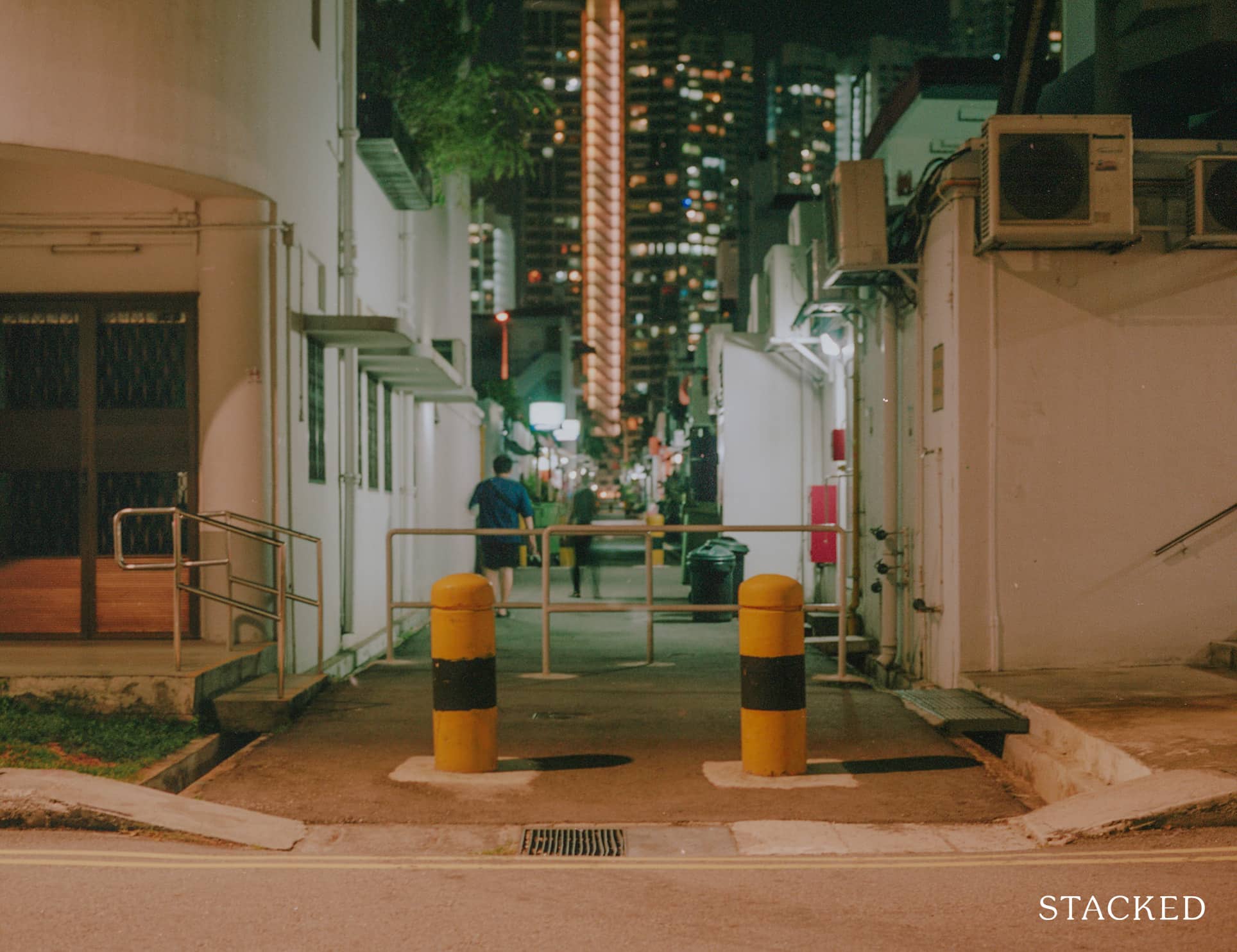
Tiong Bahru at night is much more toned-down as compared to during the day, and the people coming by are there for different things. Drinks, great food, and a more muted nightlife (as compared to other spots in Singapore like Orchard or Clark Quay).
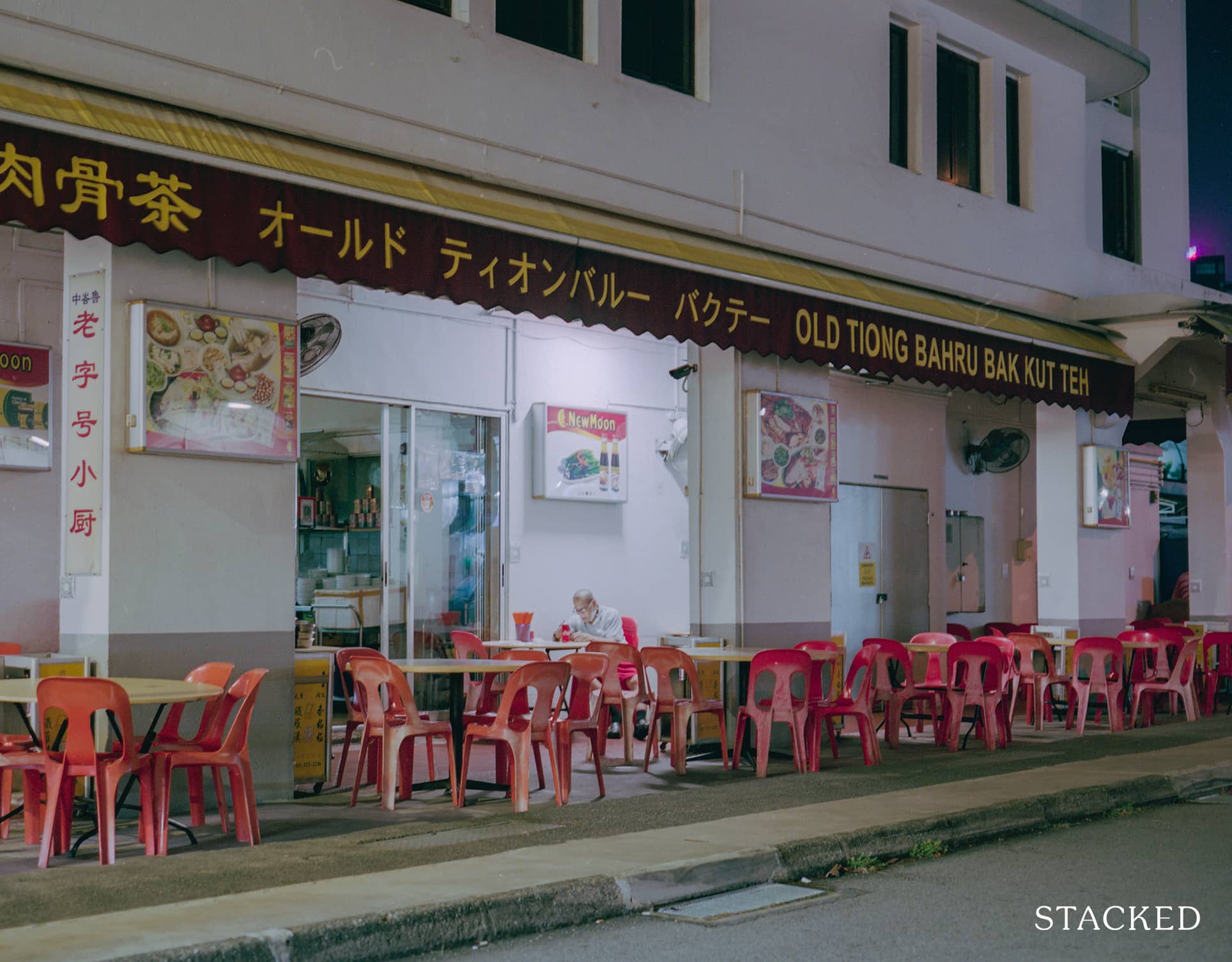
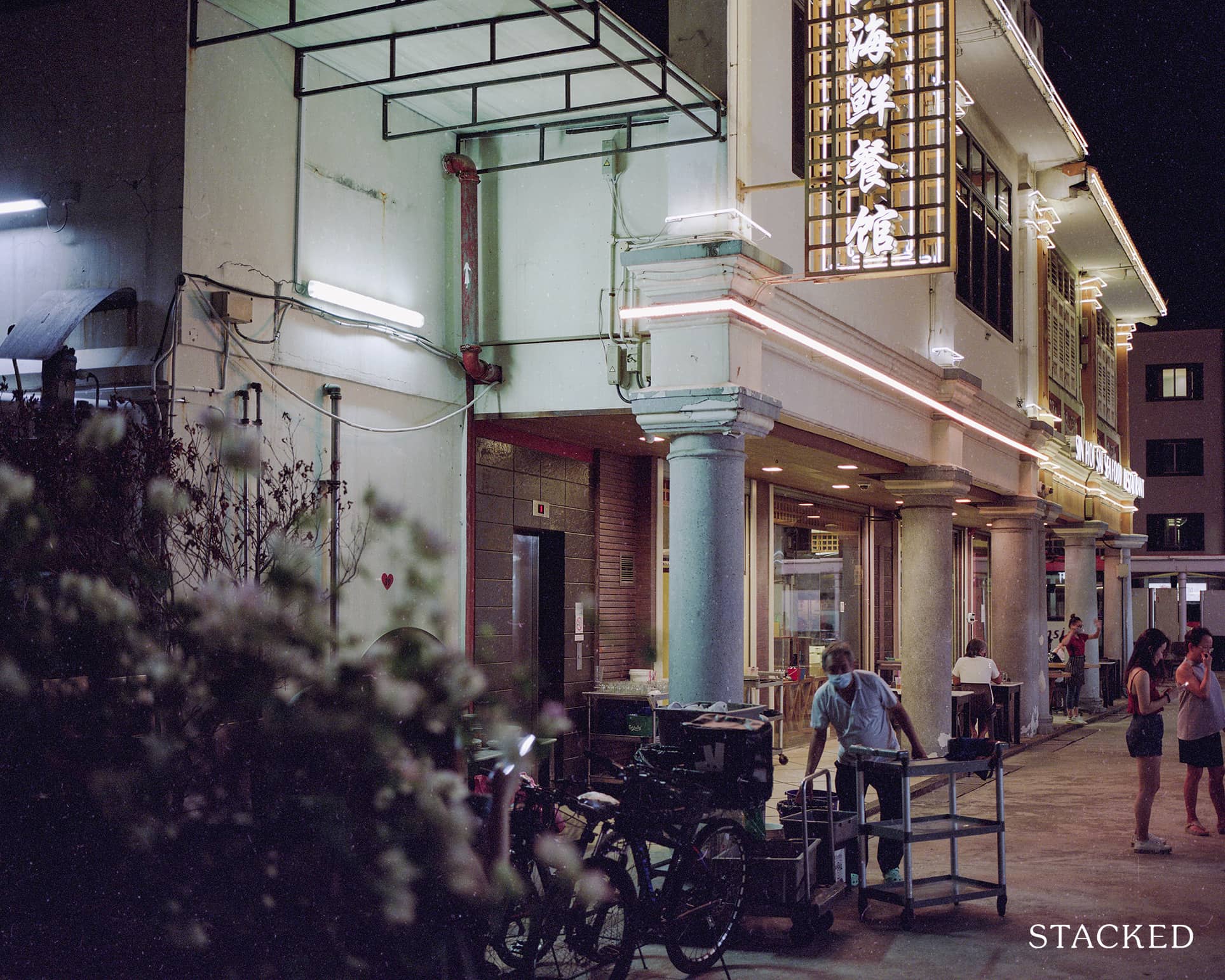
Unlike touring around the neighbourhood during the day, most of the streets transform to a different kind of vibrance once the sun has set – it almost feels like touring an entirely different neighbourhood.
Neon lights lit up dim alleyways and popular restaurants will see lines of people queuing up just to try its delicacies. At this time, there are more younger people roaming around compared to in the day.
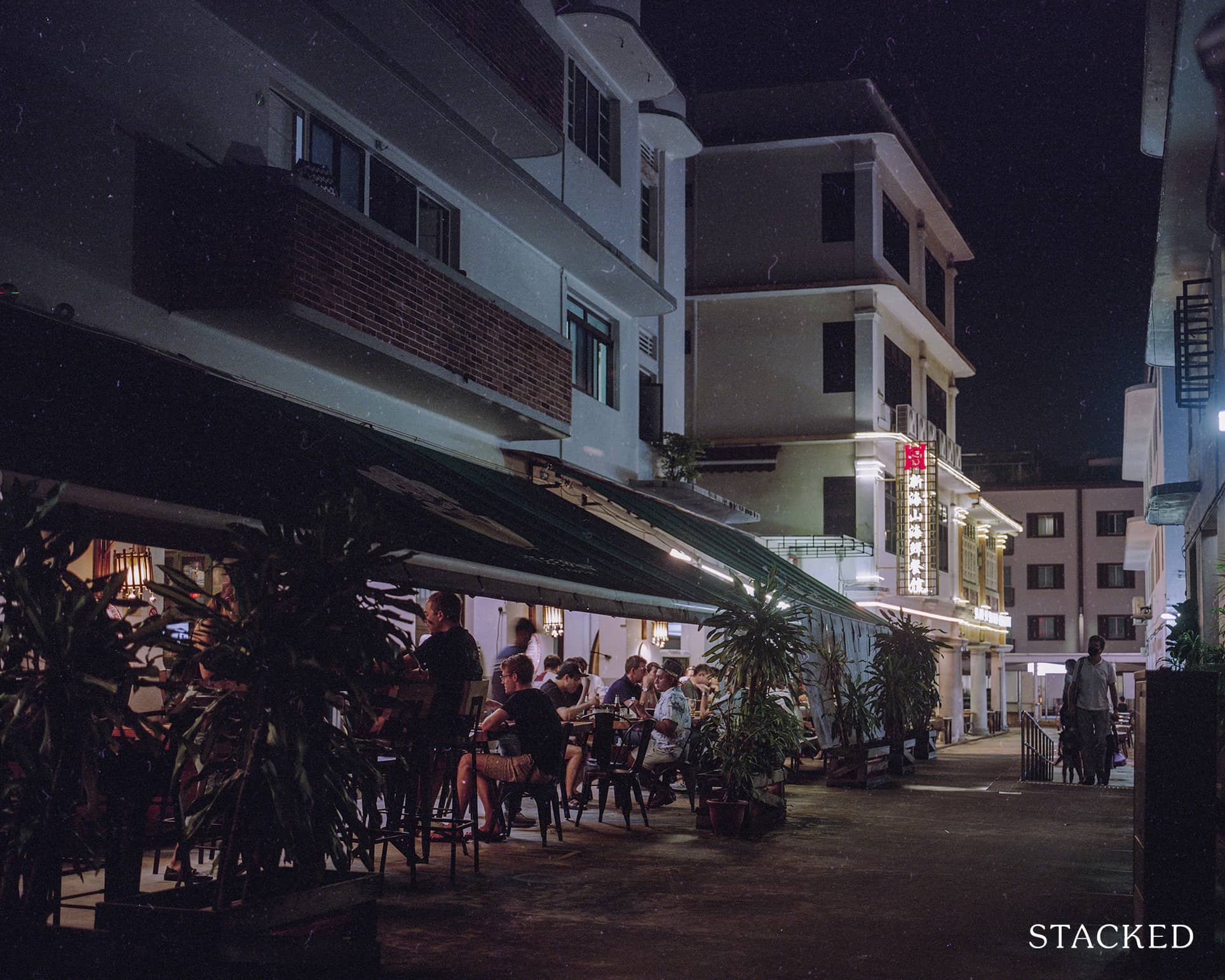
Most of the streets (save for those along popular restaurants) are empty and many of the residents would have come home, as seen from their lit windows.
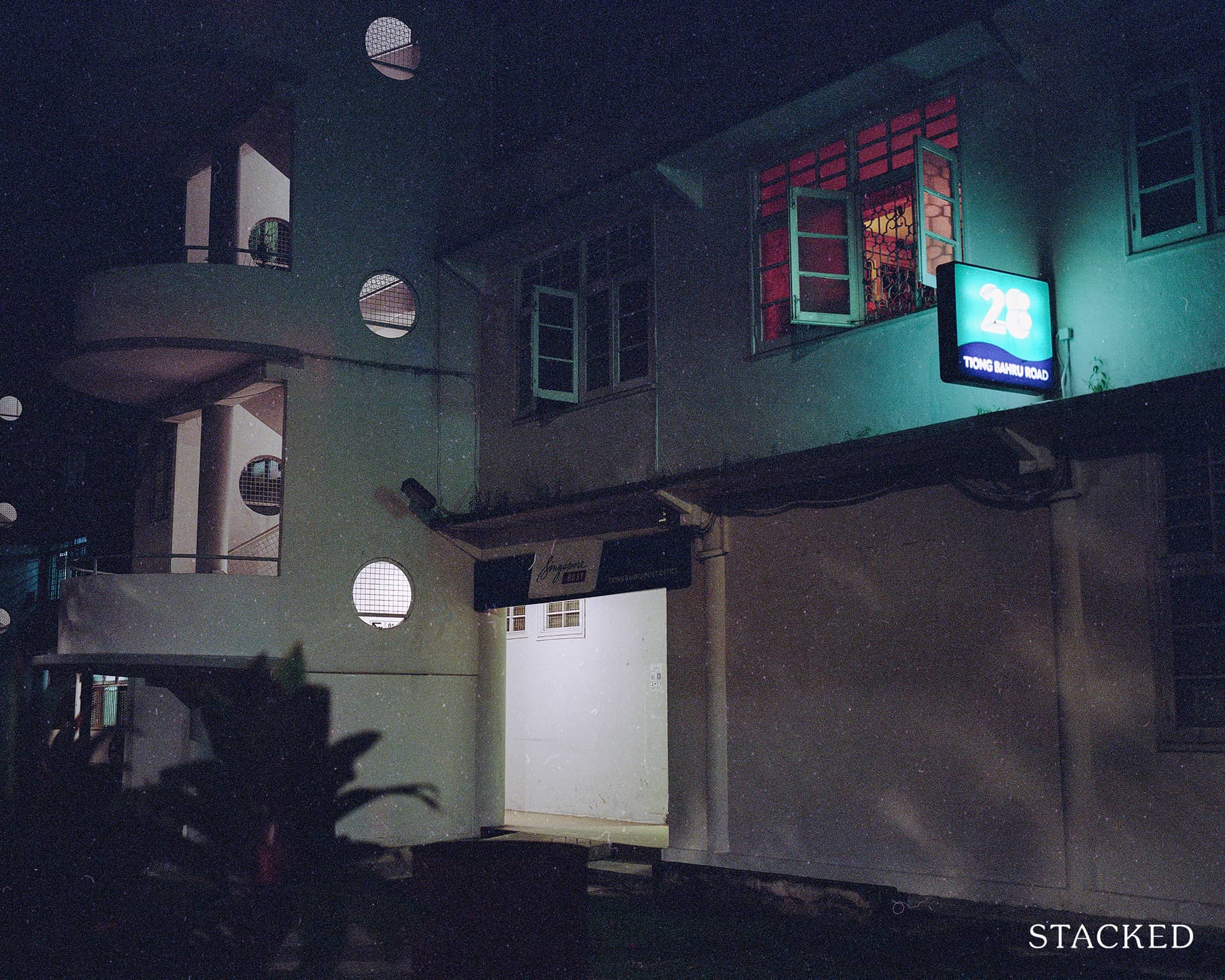
Restaurant wise, I personally would highly recommend giving this Chinese restaurant called Por Kee Eating House along 69 Seng Poh Lane a shot, though I might be biased since I grew up eating there. My boyfriend, on the other hand, would like to highly recommend Ting Heng Seafood Restaurant since he grew up eating there. Our compromise is usually De Golden Spoon at 62 Seng Poh Lane.
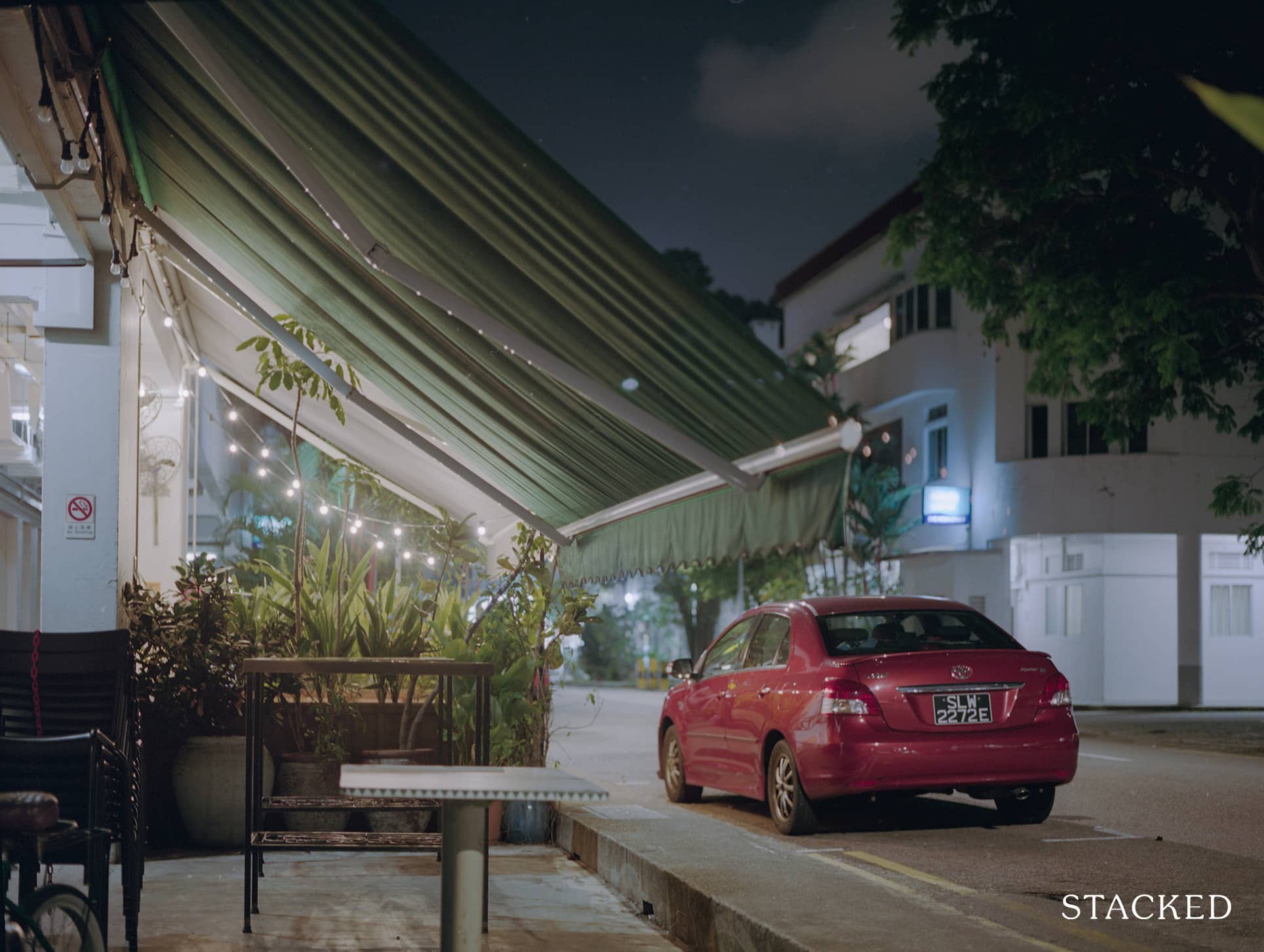
Even on weekday nights, the open-air carparks are mostly full because of the people who would come down specifically to have dinner at the various restaurants.
The newer establishments, such as The Butcher’s Wife (I’ve tried their gluten-free menu and it is quite good), P.S. Cafe and Lin Rooftop Bar are extremely popular options for dates or social gatherings.
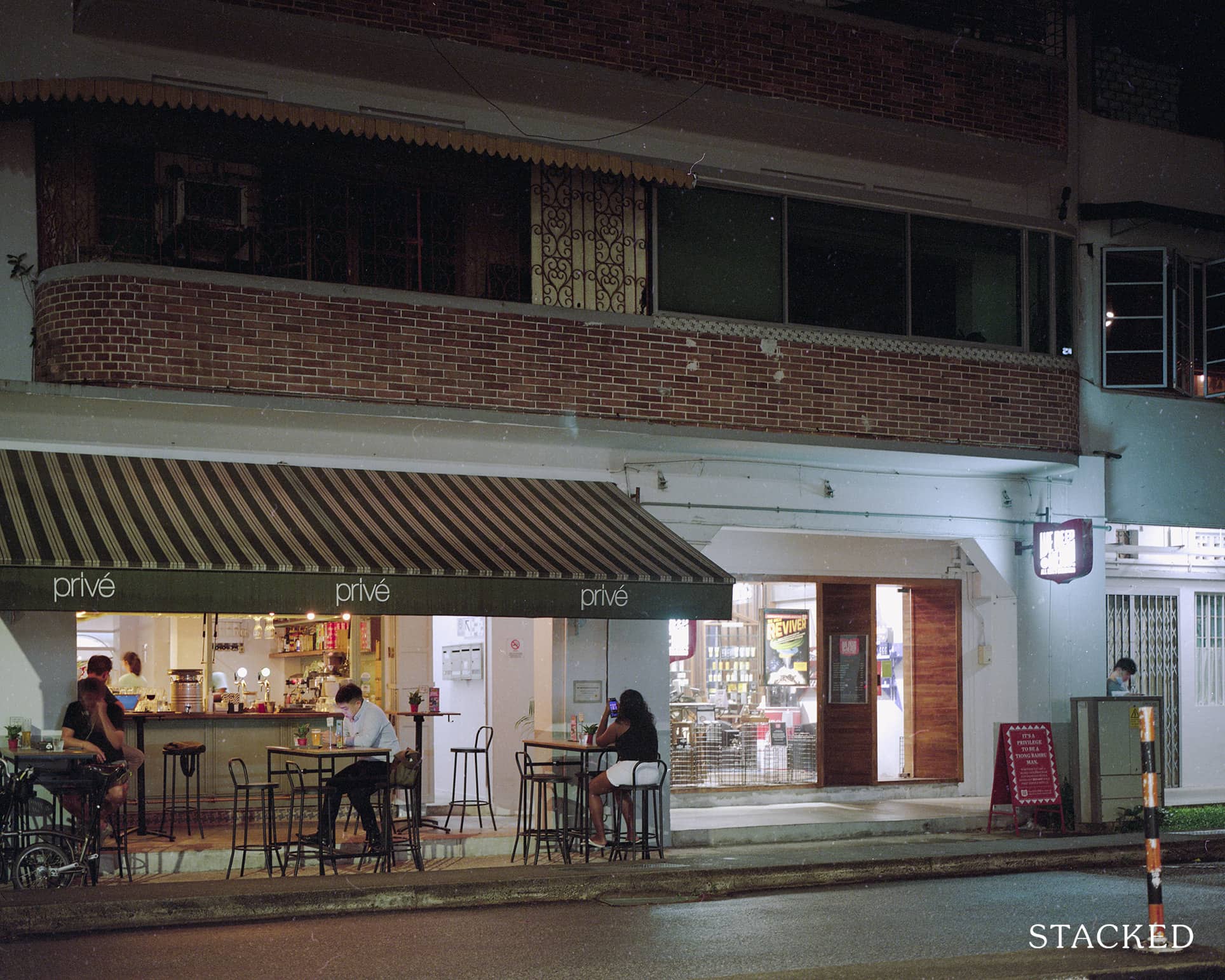
Tiong Bahru, at night, tells a completely different story than it does in the day. However, it’s no less appealing and still a gem to discover.
What to Expect When Living in Tiong Bahru
Location
Situated in District 3, Tiong Bahru is located nearby to Singapore’s city centre and Central Business District (CBD), though its charm would probably make you forget you’re even in the city. Due to its charming architecture and dynamics, you’d get people from all over Singapore visiting the area and foreigners touring around the space.
Public Transport
Commuting via public transport is relatively convenient since there are many bus routes and bus stops that service the neighbourhood.
| Bus Stop | Bus Serviced | Distance from Tiong Bahru Market |
| Blk 2b | 5, 16, 16M, 75, 121, 123, 175, 195, 970 | 280m, 3-min walk |
| Blk 1 | 5, 16, 16M, 33, 33A, 63, 122, 123, 123M, 195, 851 | 110m, 1-min walk |
| Ctrl Green Condo | 5, 16, 16M, 33, 63, 63A, 121, 122, 123, 123M, 195, 195A, 851 | 550m, 7-min walk |
| Blk 55 | 5, 16, 16M, 33, 63, 63A, 75, 121, 122, 123, 175, 195, 195A, 851, 970 | 180m, 2-min walk |
| Ganges Ctr | 51, 64, 121, 186 | 900m, 11-min walk |
Alternatively, a 9-minute walk from Tiong Bahru Market will get you to the Tiong Bahru MRT Station, which is also a great mode of transportation.
Being on the East-West line, residents can pop over to hotspots like Bugis MRT (connected to Downtown Line), City Hall (connected to North-South Line) or Outram Park (connected to North-East line and Thomson-EC line) in less than 10-minutes.
The only downside though, you’d probably have to walk without a shelter to get to these bus stops or train station.
Driving
Aside from the sole multi-storey carpark located beside Tiong Bahru Market, most parking lots are on the street levels either in open-air car parks or alongside pathways. This means that there are not many lots and often you’d see most occupied, especially on busy weekends.
Don’t let that deter you as residents have their own allocated ‘resident-only’ lots. They are generally not sheltered, though.
| Destination | Distance from Tiong Bahru Market (Off-Peak Timings) |
| Orchard Road | 3.2km, 5-min drive |
| Fullerton Road | 3.9km, 6-min drive |
| Victoria Street | 5.9km, 9-min drive |
| Harbourfront Walk | 3.9km, 6-min drive |
| Bukit Timah Road | 6.6km, 9-min drive |
| Clark Quay | 3.4km, 5-min drive |
| Chinatown | 3.3km, 5-min drive |
| Changi Airport | 24km, 20-min drive |
Driving to other parts of Singapore from Tiong Bahru is also extremely convenient since its location is so central.
Once again, we used Tiong Bahru Market as the main point to determine travelling times. However, do note that travel timings were recorded during off-peak periods so get ready to wait in traffic for a bit during busier hours.
Shopping Malls
| Shopping Mall | Distance from Tiong Bahru Market |
| Tiong Bahru Plaza | 750m, 3-min drive |
| Concorde Shopping Centre | 1.2km, 4-min drive |
| Great World City | 1.7km, 3-min drive |
| Orchard Central | 3.4km, 5-min drive |
| The Centrepoint | 3.7km, 6-min drive |
| Takashimaya Shopping Centre | 3.1km, 5-min drive |
| ION | 3.4km, 5-min drive |
| 313@Somerset | 3.5km, 6-min drive |
| Tanglin Shopping Centre | 4km, 6-min drive |
| Tanglin Mall | 3.7km, 5-min drive |
| Chinatown Point | 3.3km, 5-min drive |
| Clark Quay Central | 3.1km, 6-min drive |
There’s no doubt that the variety of shopping malls within a 4-km distance of Tiong Bahru Market is great – with popular shopping options like ION being less than a 10-min drive away.
One thing that I truly love about Tiong Bahru’s location is that it has an amazingly central location but life there is away from all the hustle and bustle that one might usually associate with living in the city.
For me, I think the vicinity to these lifestyle options is one of the neighbourhood’s key selling points.
Grocery Shopping
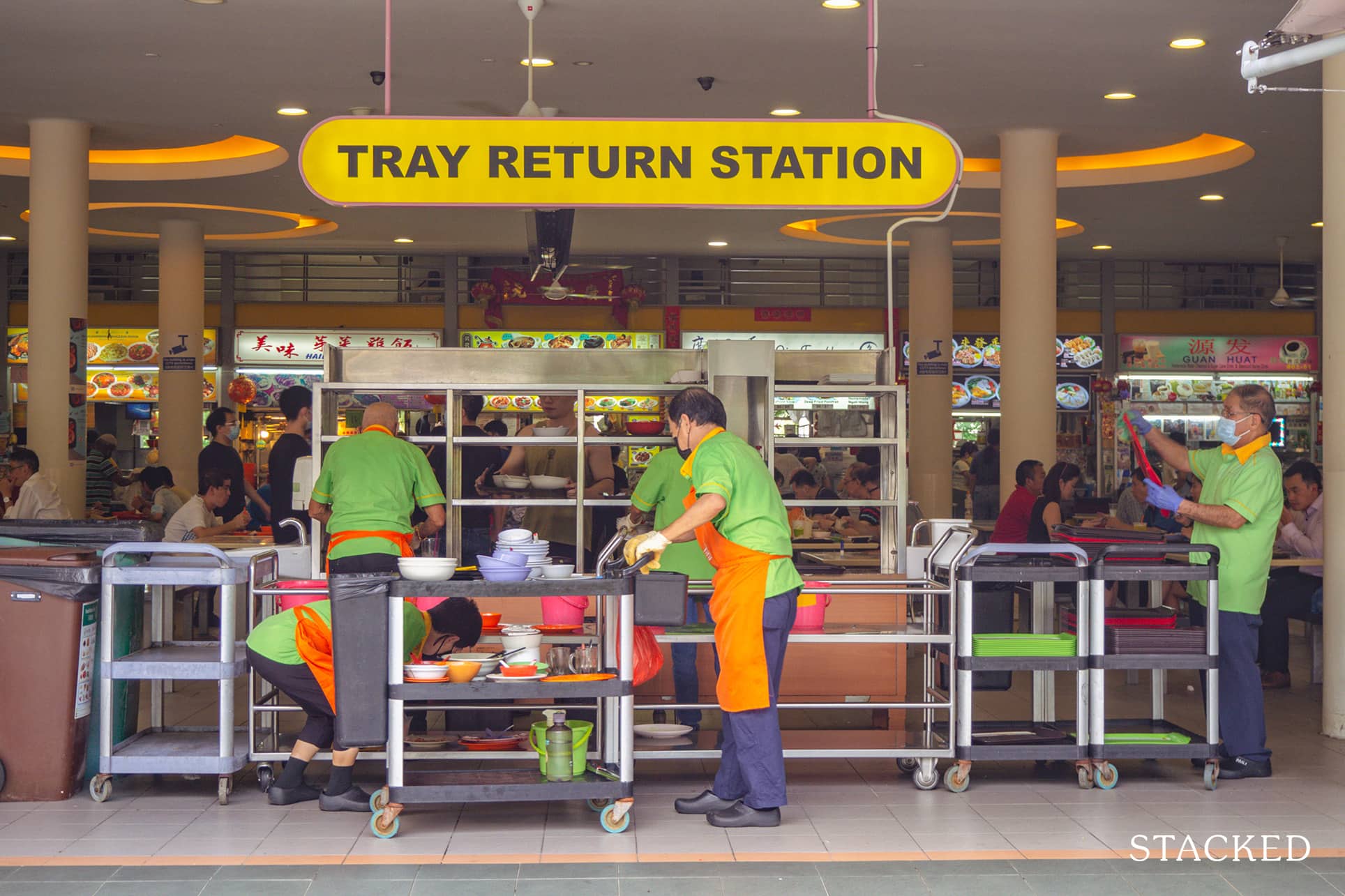
Tiong Bahru Market will be a great option for those who are looking to purchase extremely fresh ingredients and don’t mind breaking a sweat while jostling around with other shoppers! Not only does it truly show a fragment of Singapore’s way of commerce in the past, but there’s always that community feel about shopping in the local markets that you just don’t get at a supermarket.
However, for those who’re looking for air-conditioned grocery shops, there are two FairPrice outlets in the vicinity, namely at Tiong Bahru Plaza and Kim Tian Road.
Schools
| School | Distance from Tiong Bahru Market (Off-Peak Period) |
| Superland Preschool (Outram) | 1.1km, 3-min drive |
| Superland Preschool (Ganges) | 1.5km, 3-min drive |
| EtonHouse Preschool (Robertson Walk) | 2.7km, 4-min drive |
| EtonHouse International School Orchard | 4.1km, 6-min drive |
| EtonHouse International Preschool Claymore | 4.5km, 7-min drive |
| Chinese Kindergarten | 1.1km, 3-min drive |
| MapleBear Havelock | 1.8km, 4-min drive |
| Hampton Preschool (Tanjong Pagar) | 850m, 3-min drive |
| Zhangde Primary School | 1km, 3-min drive |
| Alexandra Primary School | 1.8km, 4-min drive |
| CHIJ (Kellock) | 2.6km, 5-min drive |
| Radin Mas Primary School | 2.3km, 4-min drive |
| River Valley Primary School | 2.6km, 5-min drive |
| Cantonment Primary School | 2.6km, 5-min drive |
| CHIJ St Theresa’s Convent | 2.6km, 5-min drive |
| Gan Eng Seng School | 1.8km, 4-min drive |
| Crescent Girls’ School | 2.7km, 5-min drive |
| Outram Secondary School | 1.7km, 3-min drive |
| Bukit Merah Secondary School | 2.5km, 5-min drive |
| Queenstown Secondary School | 2.9km, 5-min drive |
| SOTA | 4.2km, 6-min drive |
| SMU | 4km, 7-min drive |
| LASALLE College of the Arts | 4.8km, 8-min drive |
| Duke-NUS Medical School | 1.6km, 3-min drive |
| Murdoch University Singapore | 1.6km, 3-min drive |
| Ascensia International School | 2km, 4-min drive |
| Knightsbridge House International School | 2.1km, 4-min drive |
| Astor International School | 2.8km, 5-min drive |
Options for schools across all education levels are aplenty within Tiong Bahru’s vicinity, which is great news for families with schooling kiddos. Do note that the travel times are estimated based on off-peak hours so be sure to account for the traffic during regular conditions.
Future Upgrading Plans
It’s exciting to see what’s installed for Tiong Bahru in the next decade. After all, it looked rather different 10 years ago from today. However, I’d say that the overall aesthetic of the neighbourhood wouldn’t see too much of a deviation since the government has strict and sensitive plans in place to conserve the unique facade and zoning of Tiong Bahru.
According to the URA Master Plan 2014, some of the more notable upgrades to the area include:
- The recent opening of the Outram Community Hospital has made Tiong Bahru’s vicinity a medical hotspot. Together with the National Heart Centre, The Academia and Singapore General Hospital, I guess that’ll be quite impactful to the neighbourhood in the long run.
- Perhaps the more exciting news, Havelock MRT Station which is serviced by the Thomson-East Coast Line is stipulated to operate soon.
- There’ll be a new cycling network to link the city with other estates
- More supply of condo housing in the area
Downsides of Living in Tiong Bahru
As much as living in Tiong Bahru might seem like a unique experience that you can’t find anywhere else in Singapore, there are downsides to living in an older neighbourhood – let’s explore them.
- Getting around is tough during rainy days
Many times I visited Tiong Bahru in the past, I recalled that those especially rainy days did not make my visit all that enjoyable. This was because most parts of the neighbourhood were not sheltered and pathways were mainly subjected to the wills of the weather.
For residents who have to get around either to the bus stops, MRT station or their personal vehicles, it’ll be quite problematic during rainy days (not to mention the extremely slippery floors too). An umbrella is essential!
- Older pipes and building facades
Since the estate is much older, homebuyers would have to be prepared to fork out a bit more in their budget to repair the older fixtures, such as pipes, walls, windows, gates, tiles and flooring. A major uphaul would be required for most units for the space to be move-in ready.
- Strict requirements to Adhere to
Seeing that we are dealing with conserved shophouses, URA heavily emphasizes on the need to apply for permits and clearance when it affects the shophouse’s facade. This means that homeowners will have restrictions on the types of upgrading they could perform.
- Not wheelchair-friendly
Due to its hilly terrains, Tiong Bahru has many steps, slopes and stairs that connect the various pathways and lanes, making the neighbourhood generally pretty wheel-chair unfriendly. My grandparents have also decided against visiting the Tiong Bahru wet market as of late as it’s very inconvenient for them to go about in their wheelchairs.
For those who might be concerned with this mobility restriction, this neighbourhood might not be too functional.
Final Thoughts

As one of Singapore’s most beloved neighbourhoods, Tiong Bahru has been through countless changes and played an impactful role in shaping our city’s future HDBs. After having the opportunity to re-appreciate the neighbourhood, one thing I deeply value about Tiong Bahru is that its principle design was meant to encourage interactions between neighbours – an important lesson for our future housing in Singapore.
To be able to have ownership over such an important fabric of Singapore’s history is priceless, and so is the lifestyle that this quaint neighbourhood so genuinely offers. Tiong Bahru might not be for everyone, but for those who appreciate a bit of character, an interesting background story and a community of warm faces, it sure does leave quite an impression.
Be it the location, the amenities and the endearing architecture, I wholeheartedly hope that Tiong Bahru can maintain its essence for many more years to come. What makes Tiong Bahru such a special place to live in isn’t just one specific item – it’s the combination of people, stories, architecture, amenities and its charming lifestyle.
If you’d like to get in touch for a more in-depth consultation, you can do so here.
Cheryl Teo
Cheryl has been writing about international property investments for the past two years since she has graduated from NUS with a bachelors in Real Estate. As an avid investor herself, she mainly invests in cryptocurrency and stocks, with goals to include real estate, virtual and physical, into her portfolio in the future. Her aim as a writer at Stacked is to guide readers when it comes to real estate investments through her insights.Read next from Property Market Commentary

Property Market Commentary When Renting In Singapore Is The Smarter Move — And Buying Can Wait

Property Market Commentary A Wave Of New HDB Resale Supply Is Coming In 2026: Here’s Where To Find Them

Property Market Commentary 5 Key Features Buyers Should Expect in 2026 New Launch Condos

Property Market Commentary What “Lucky” Singaporean Homebuyers Used To Get Away With — That You Can’t Today
Latest Posts

Property Advice Should We Buy An Old 99-Year Leasehold Condo To Live In: Will It’s Value Fall When The Lease Runs Out?

Pro How A Once “Ulu” Condo Launched In 1997 Became A Top Performer

New Launch Condo Analysis I Reviewed A New Launch 4-Bedroom Penthouse At Beauty World

Landed Home Tours Why Singaporean Families Are Looking At This Landed Enclave From Around $4M

Singapore Property News Lentor’s First Condo Is Complete — The Early Profits May Surprise You

Property Advice We Own A $800K 1-Bedder And A $1.1M 3-Bedder: Is It Possible To Upgrade To A 4-Bedder Condo?

On The Market These Are Some Of The Cheapest 5-Room HDB Flats Left In Central Singapore

Pro This 698-Unit Ang Mo Kio Condo Launched At The Wrong Time — And Still Outperformed Peers

Singapore Property News $281.2M in Singapore Shophouse Deals in 2H2025 — But That Number Doesn’t Tell the Full Story

Property Investment Insights These Resale Condos In Singapore Were The Top Performers In 2025 — And Not All Were Obvious Winners

Singapore Property News CapitaLand–UOL’s $1.5 Billion Hougang Central Bid May Put Future Prices Above $2,500 PSF

Singapore Property News Why New Condo Sales Fell 87% In November (And Why It’s Not a Red Flag)

Pro How A 944-Unit Mega-Condo In Pasir Ris Ended Up Beating The Market
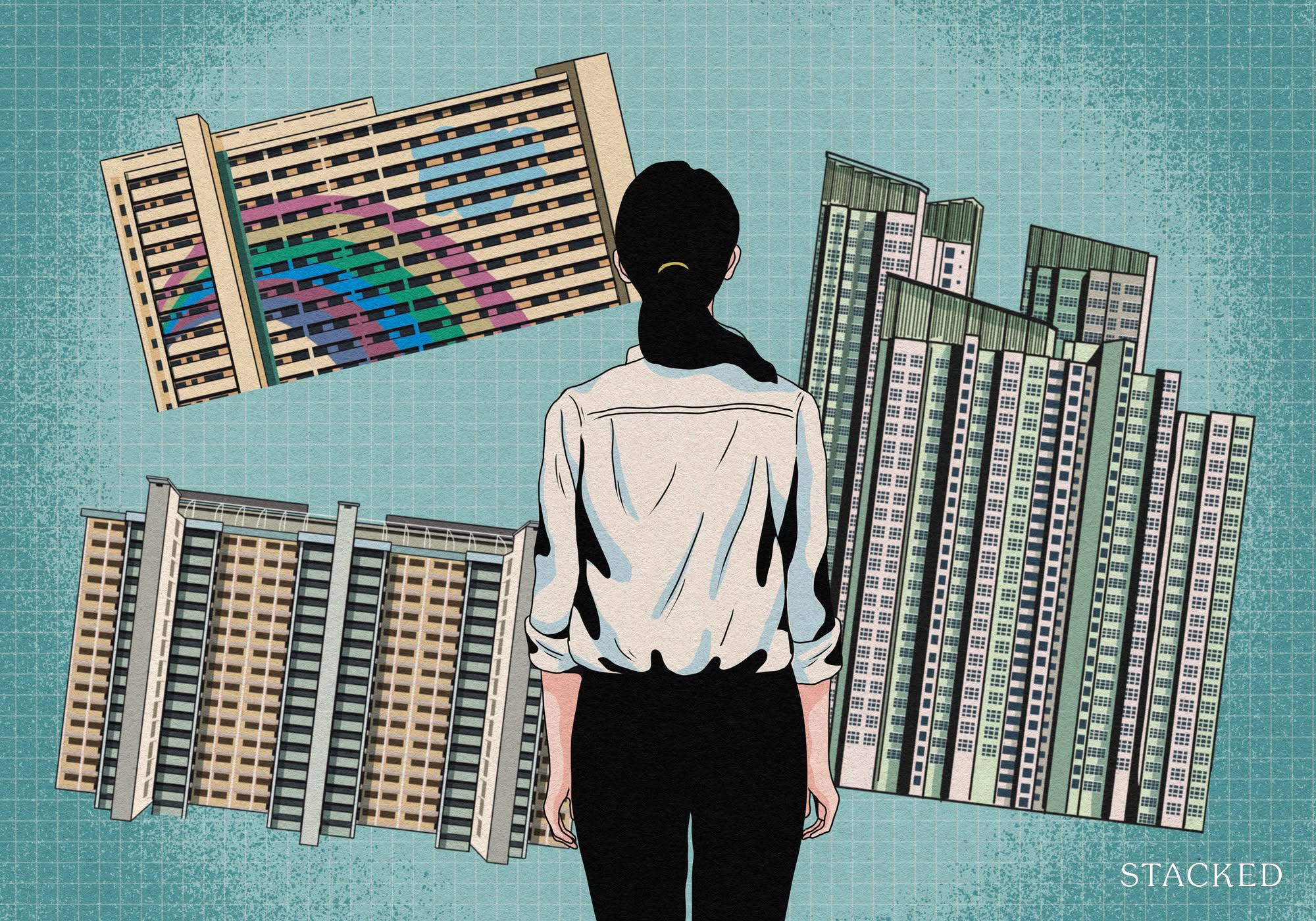
Property Investment Insights What Changed In Singapore’s Property Market In 2025 — And Why It Matters
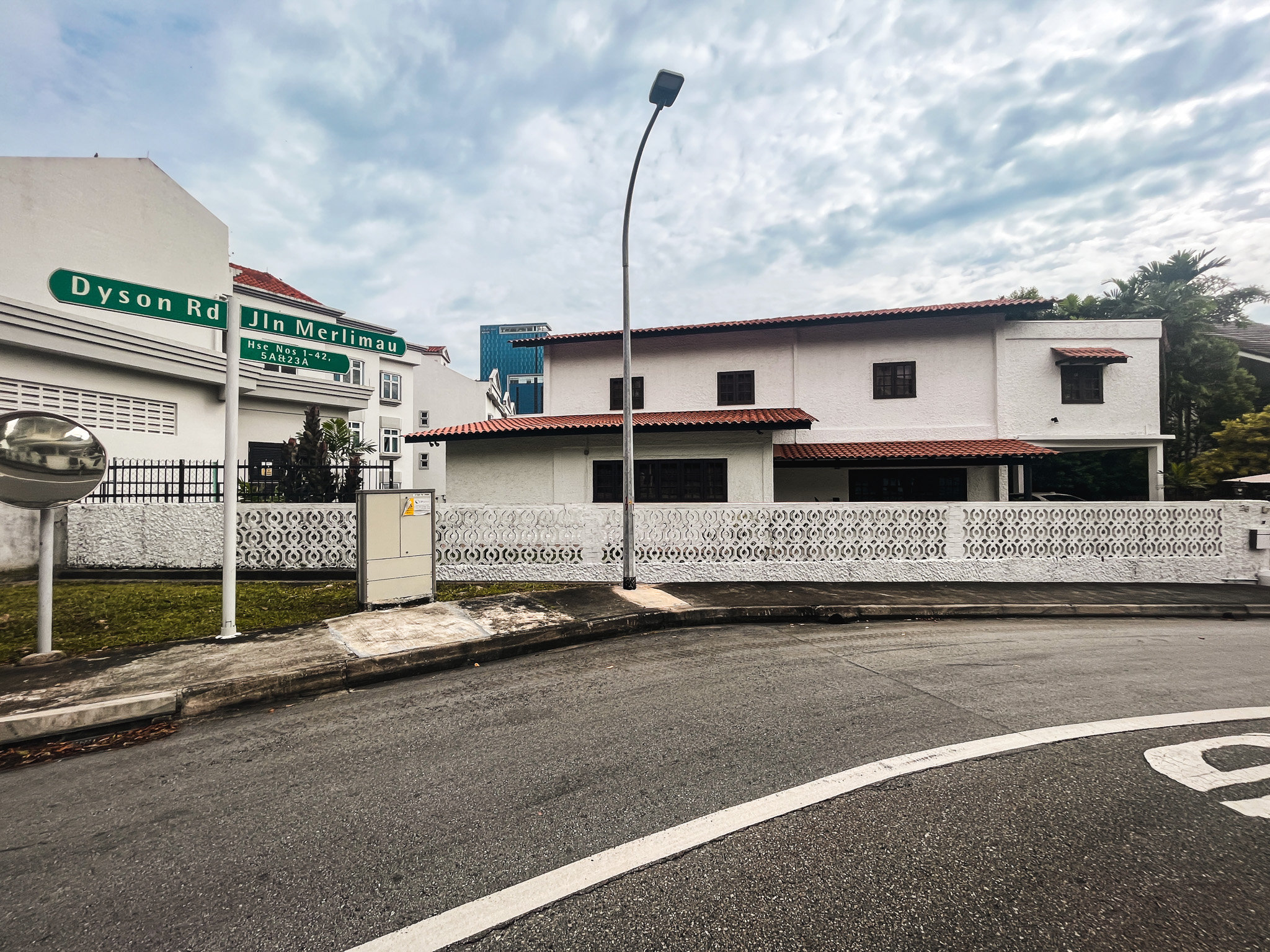
Editor's Pick We Toured A Quiet Freehold Landed Area Near Reputable Schools — Where Owners Rarely Sell



